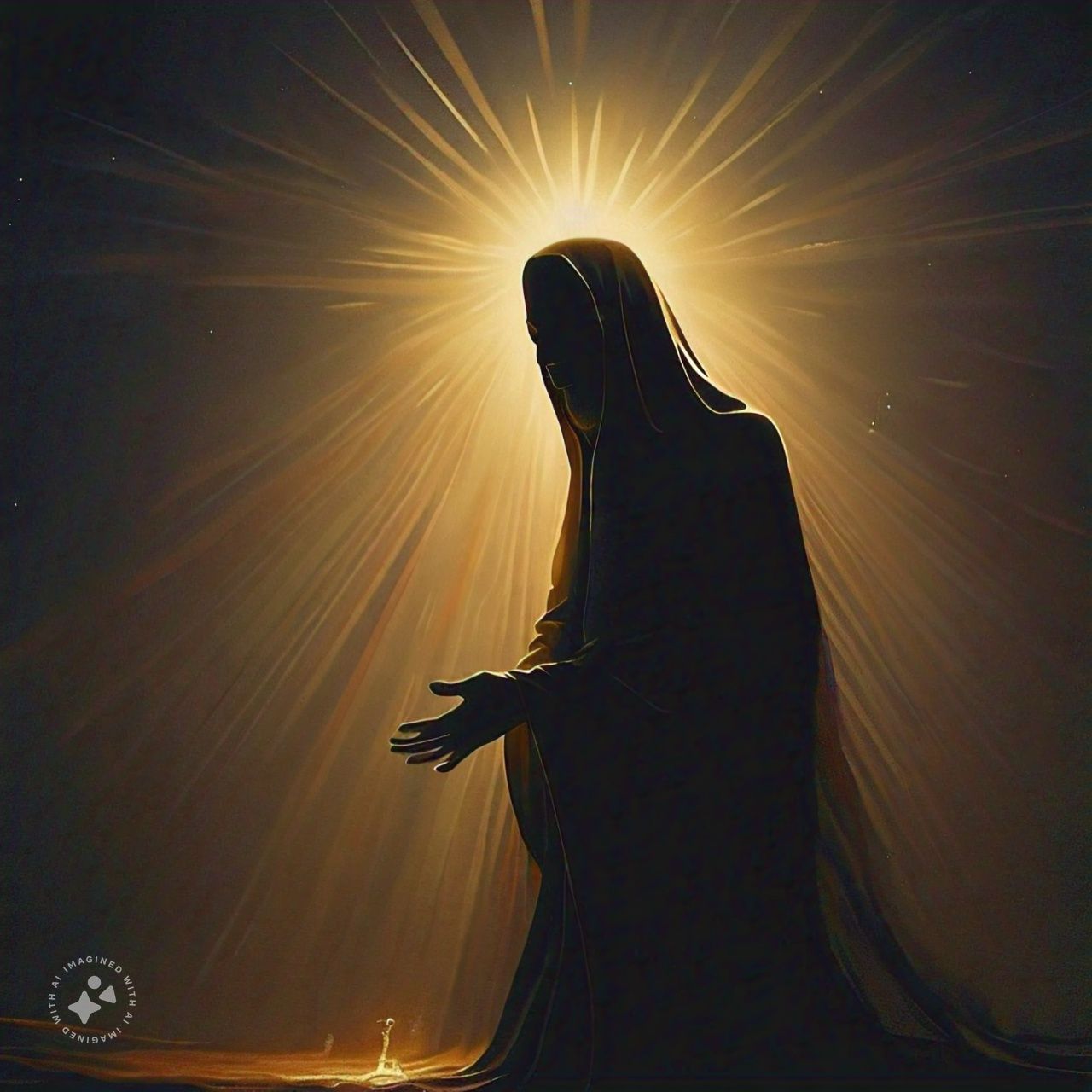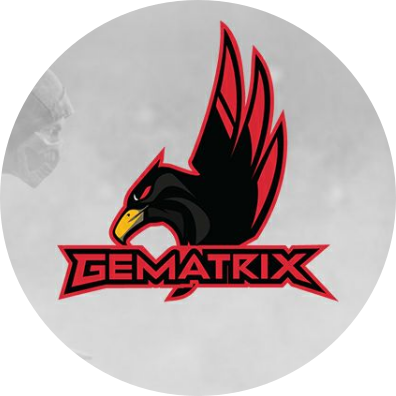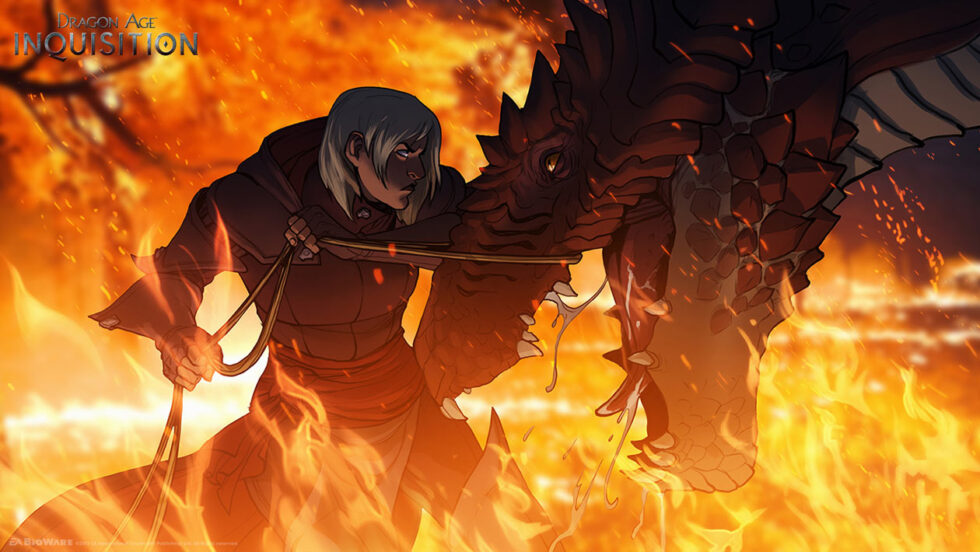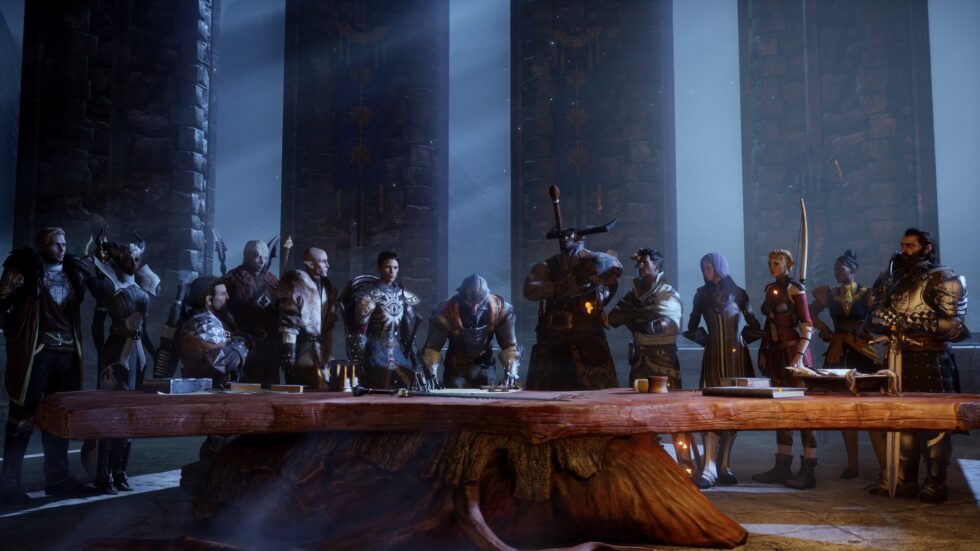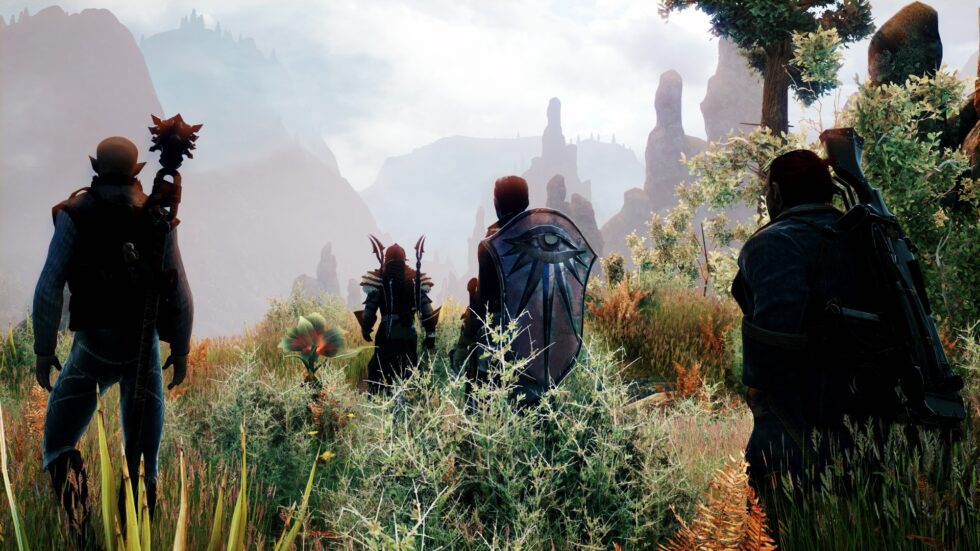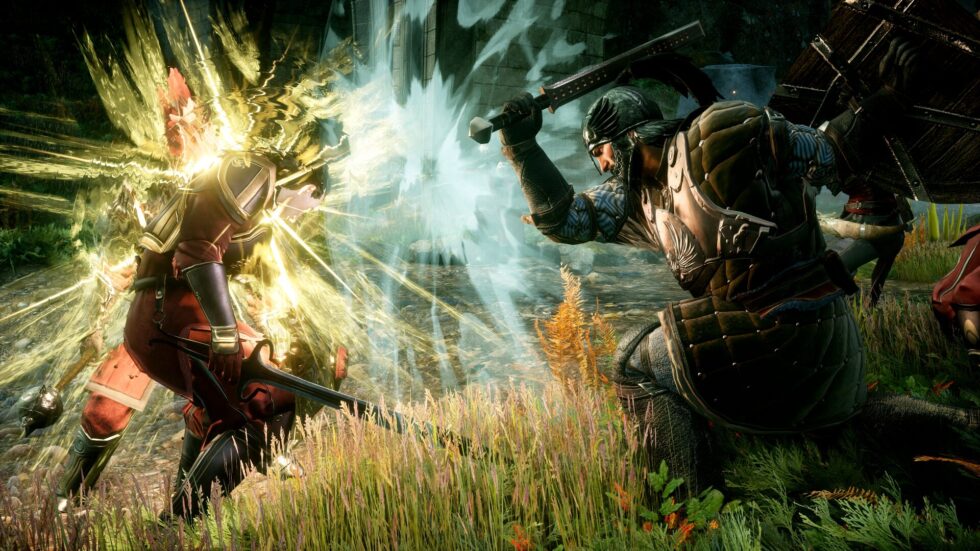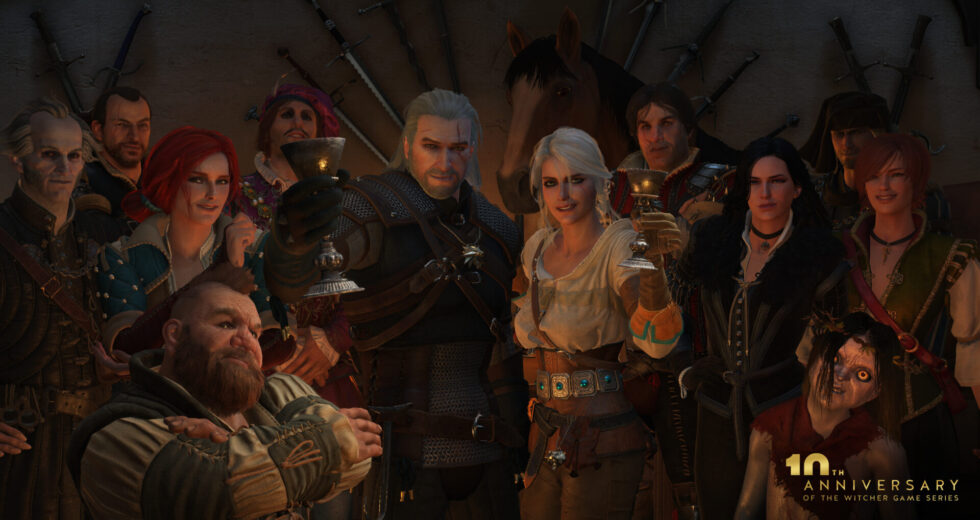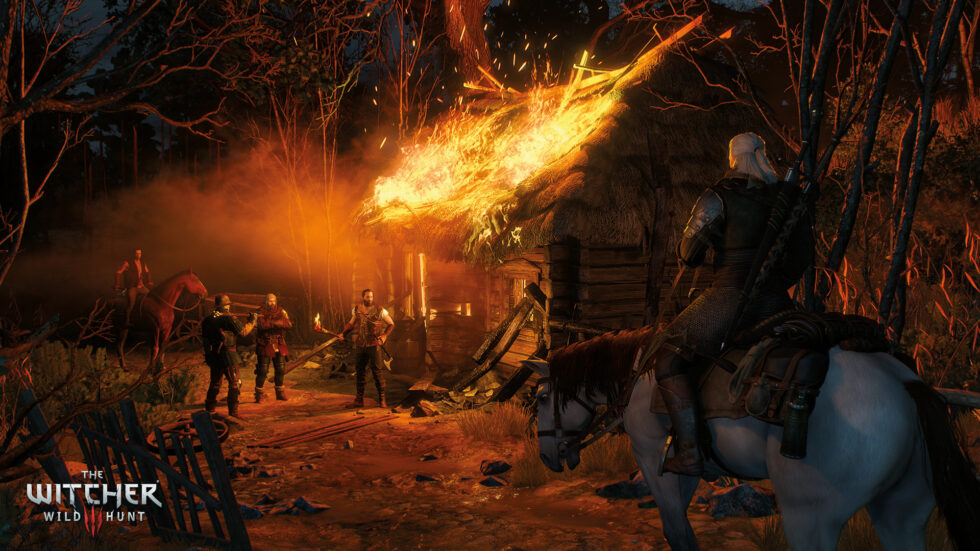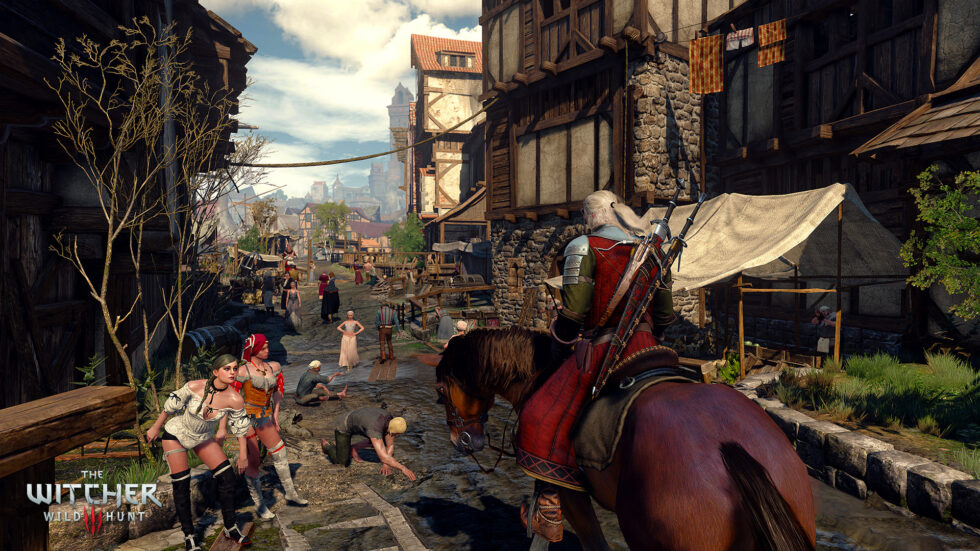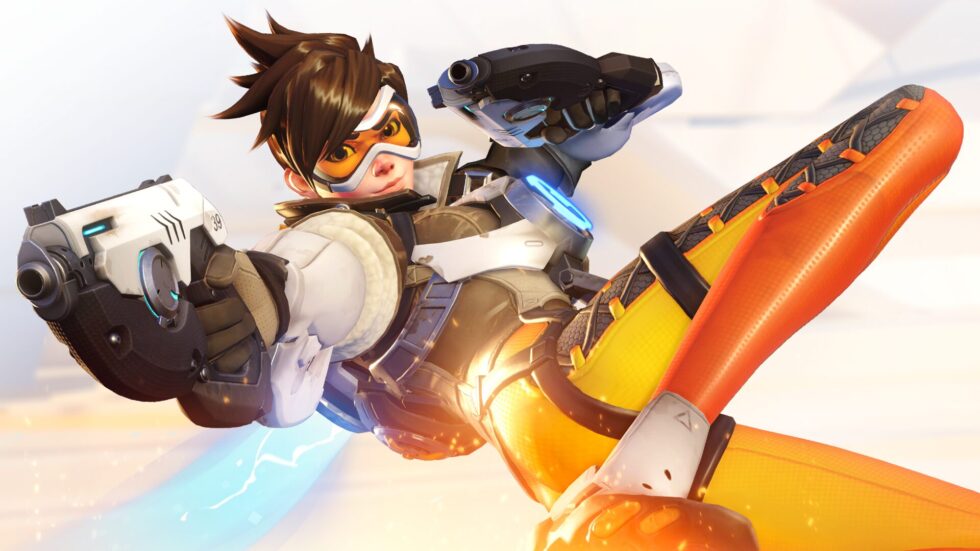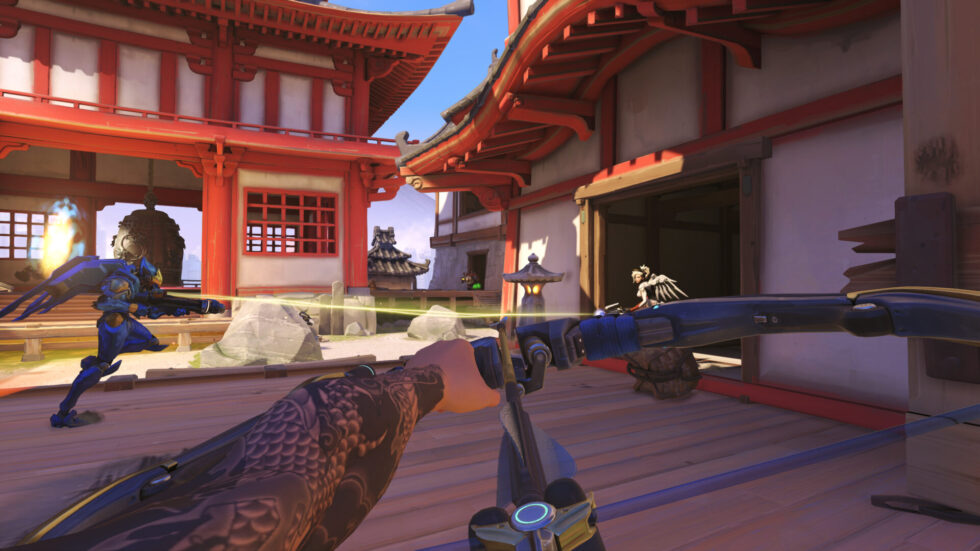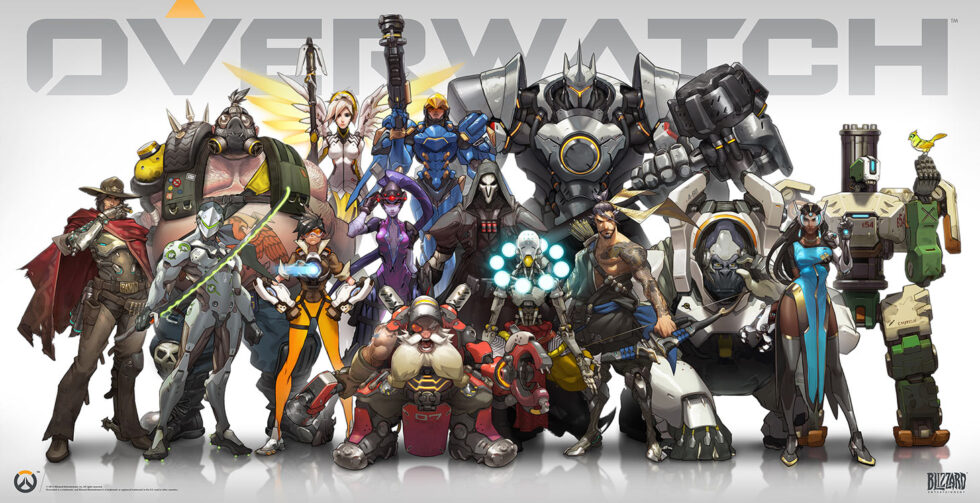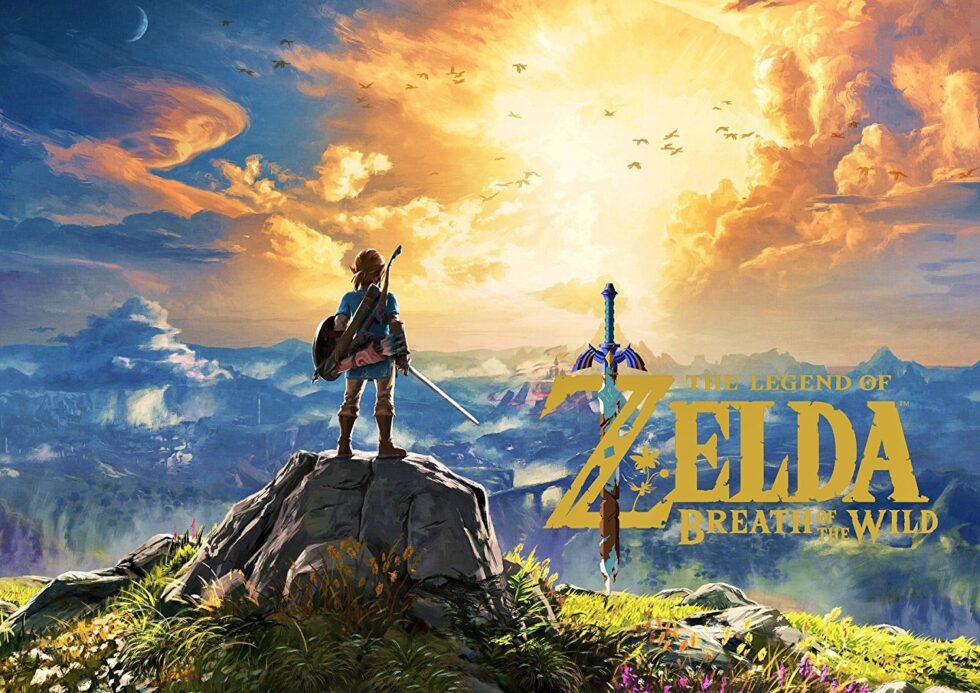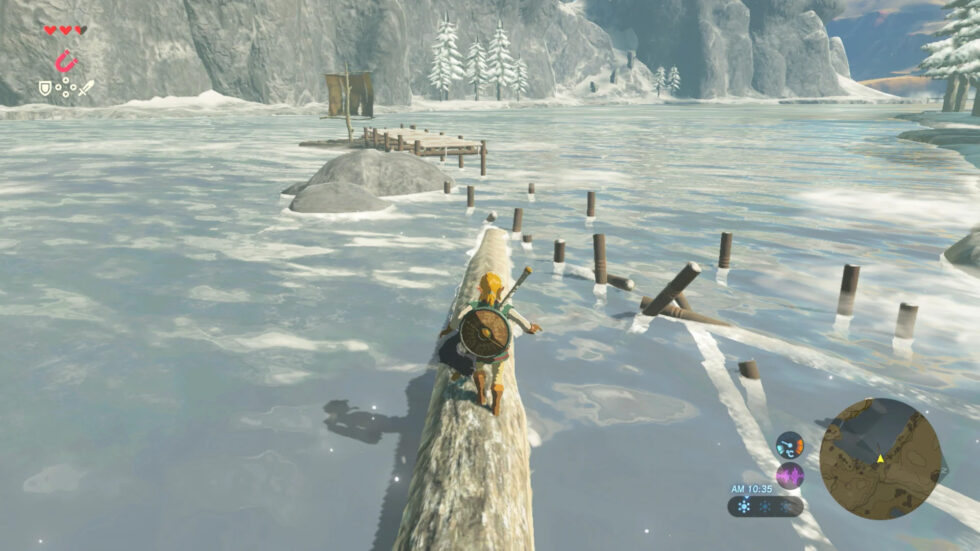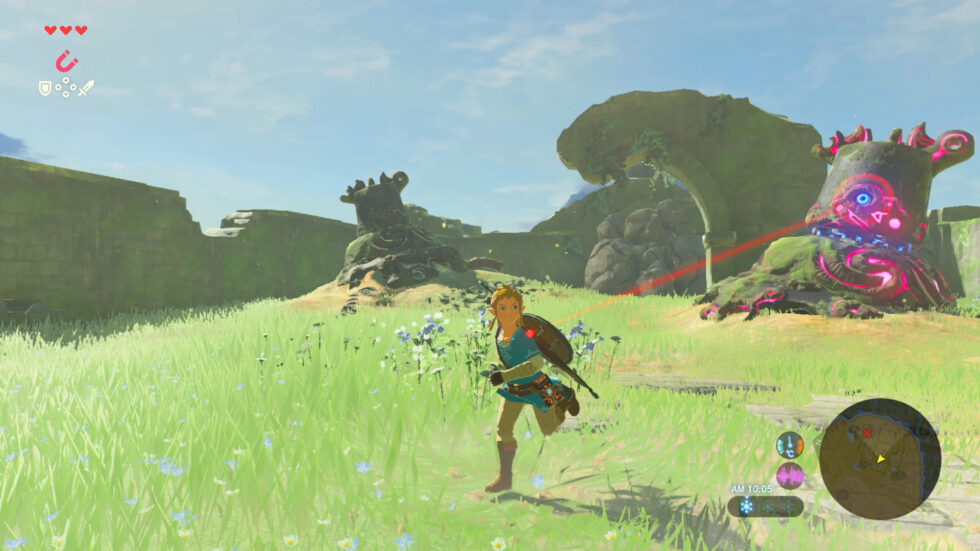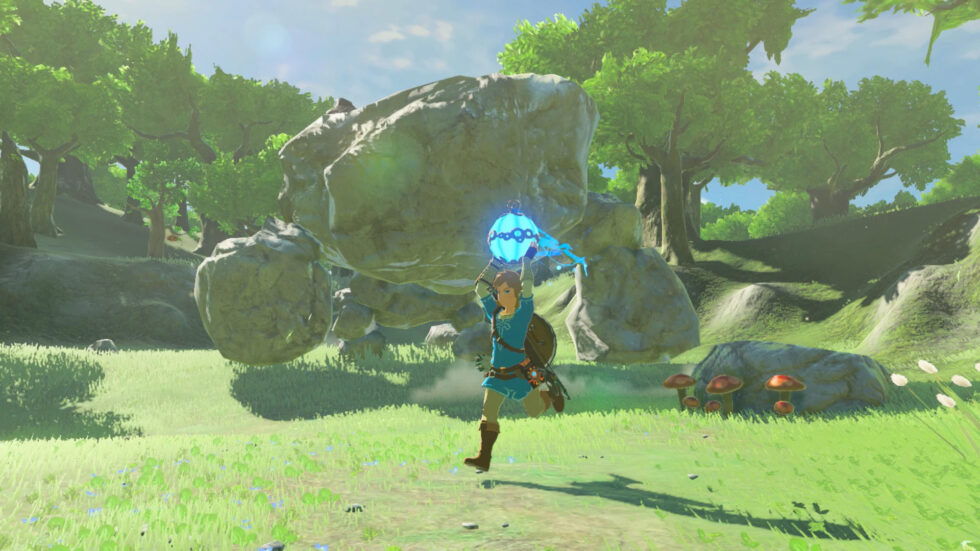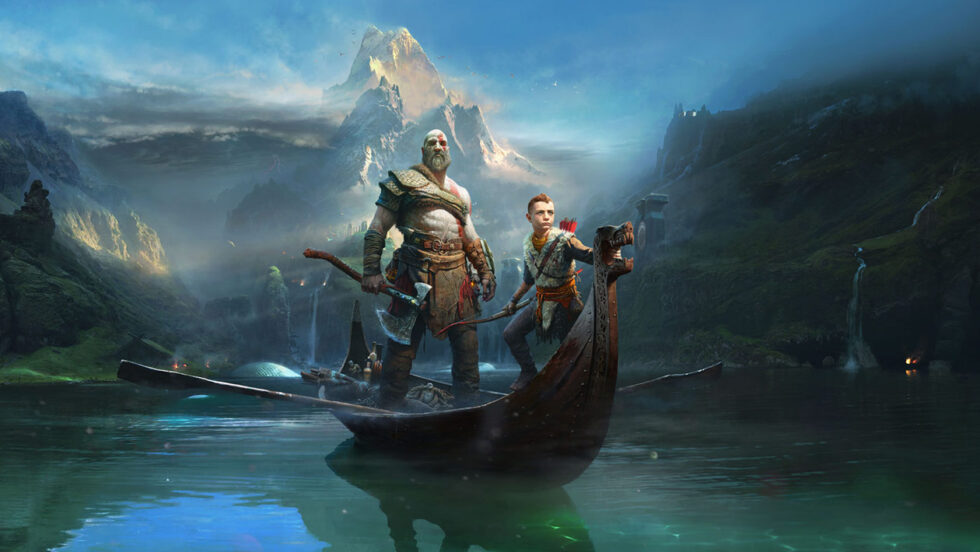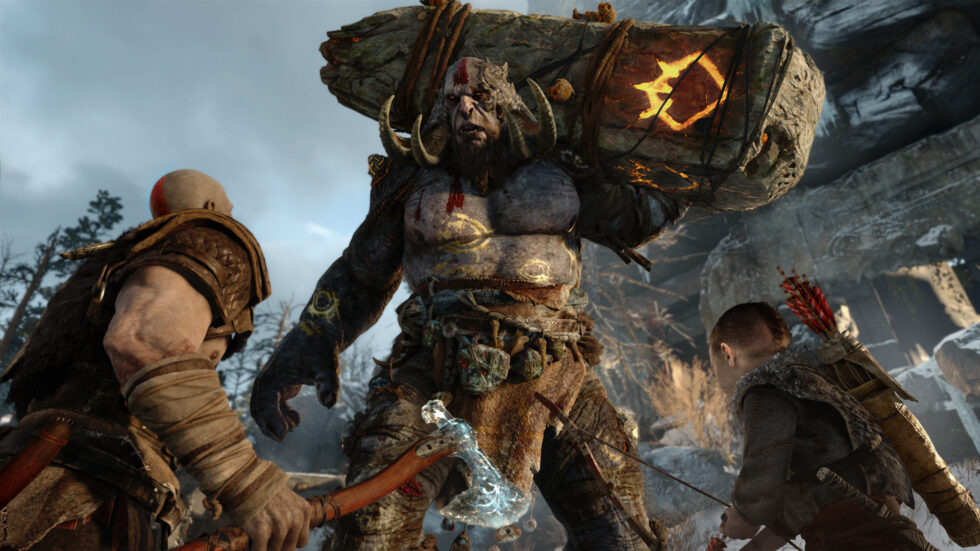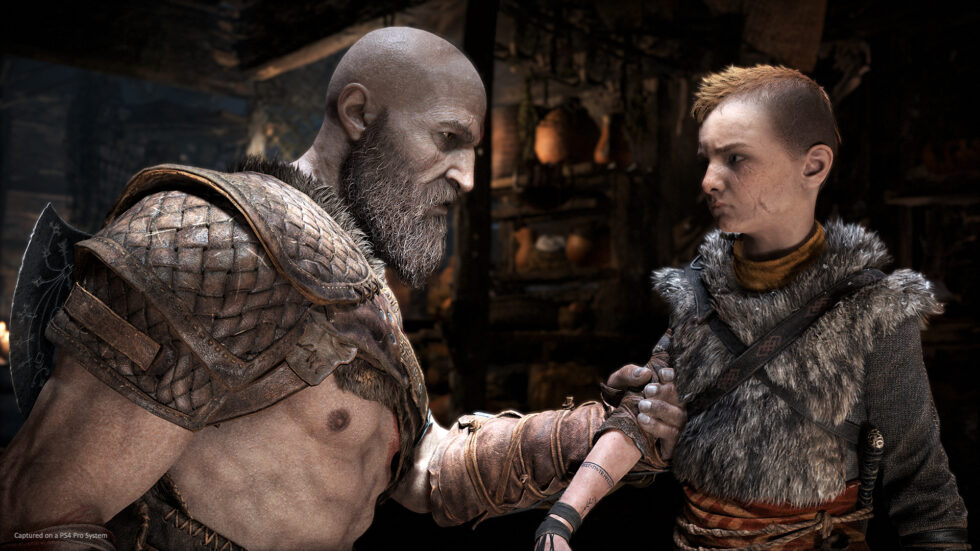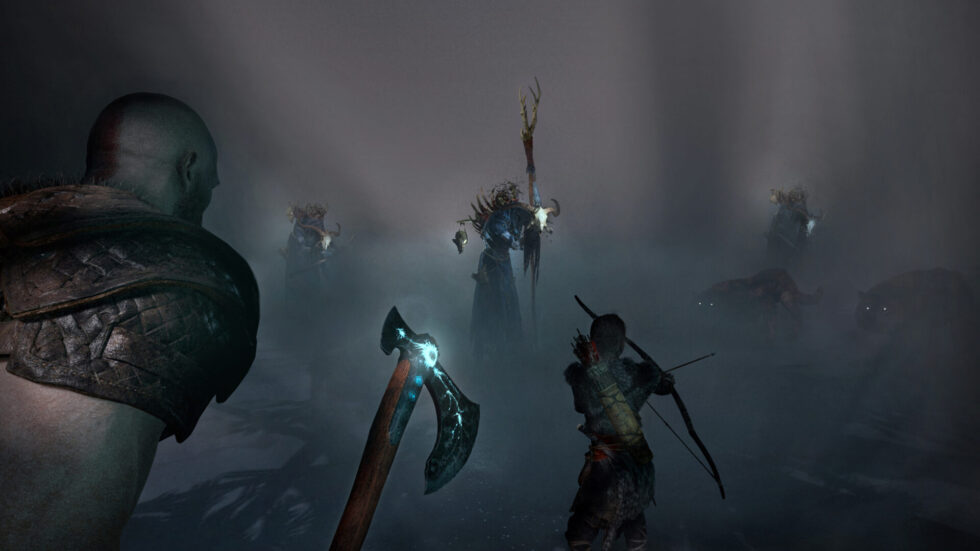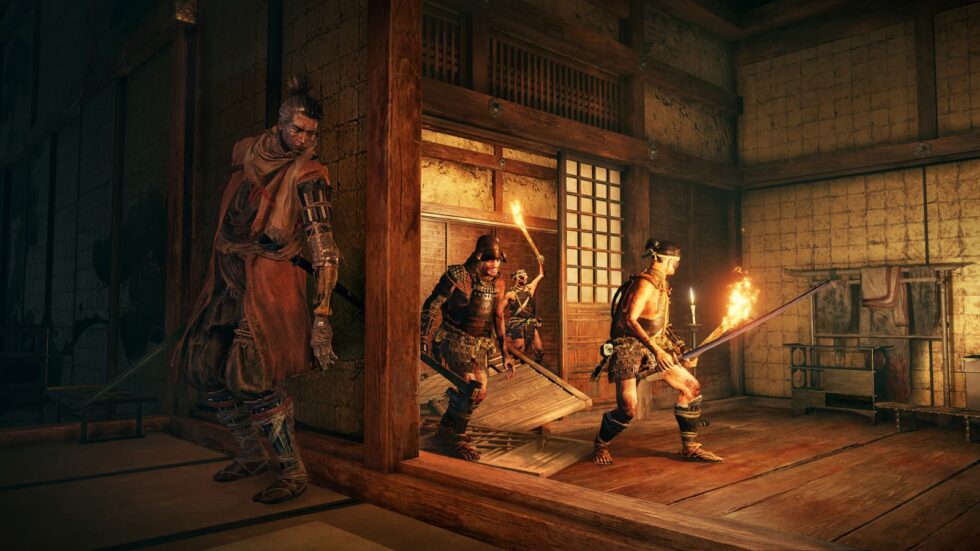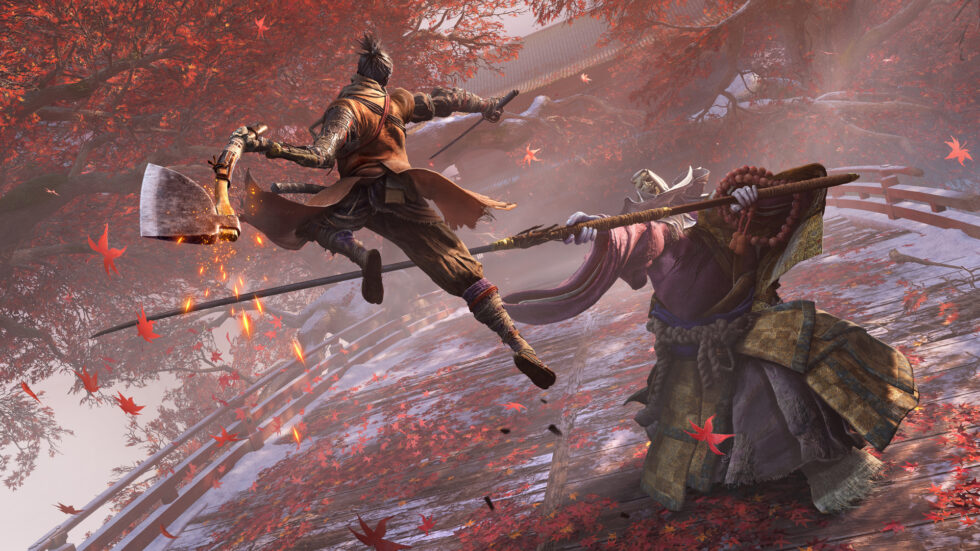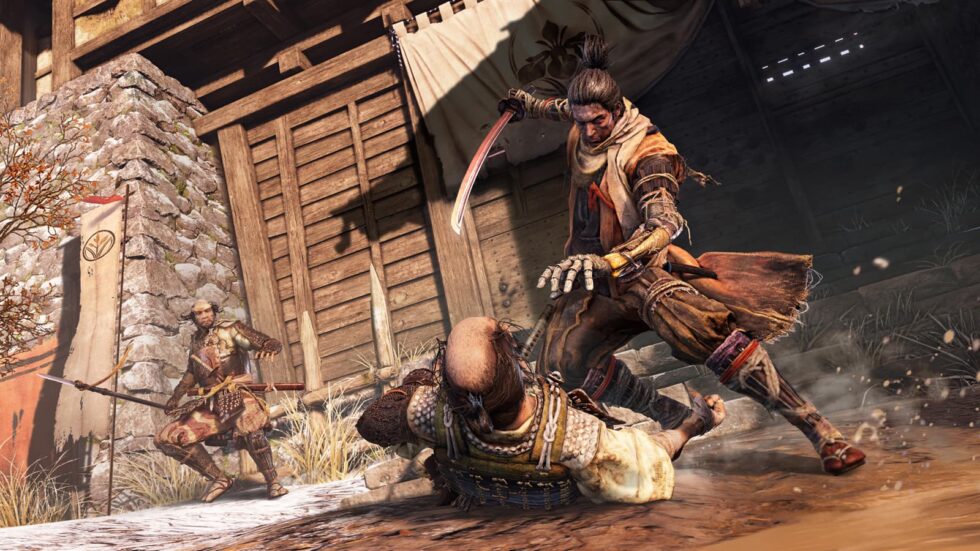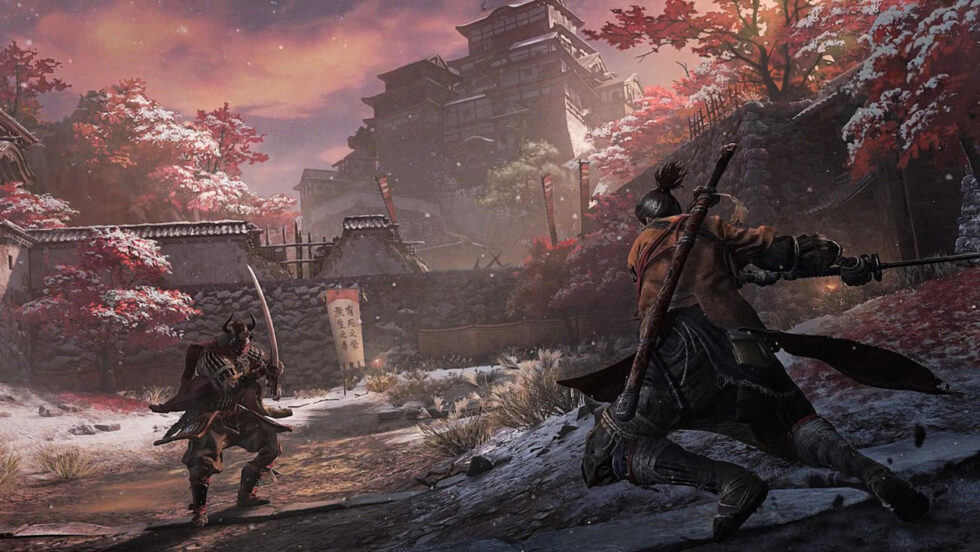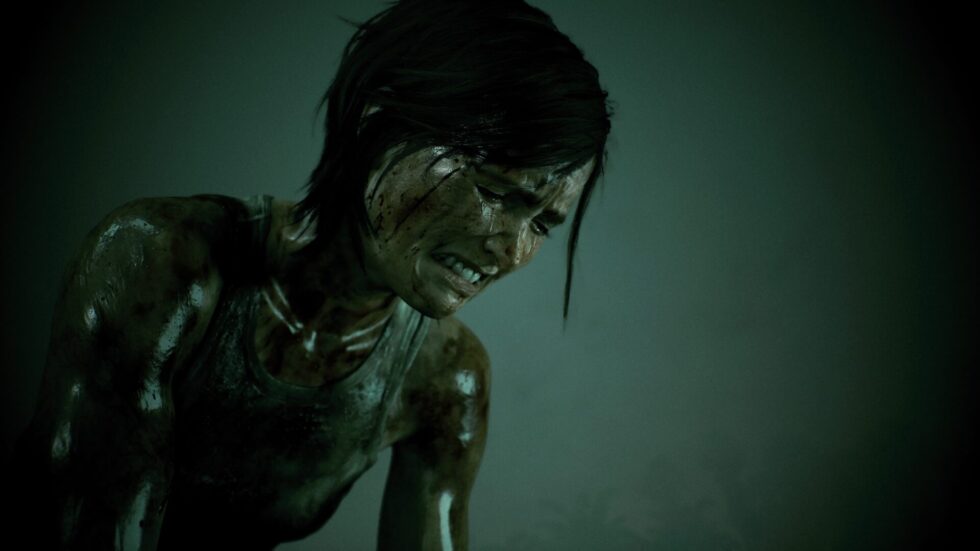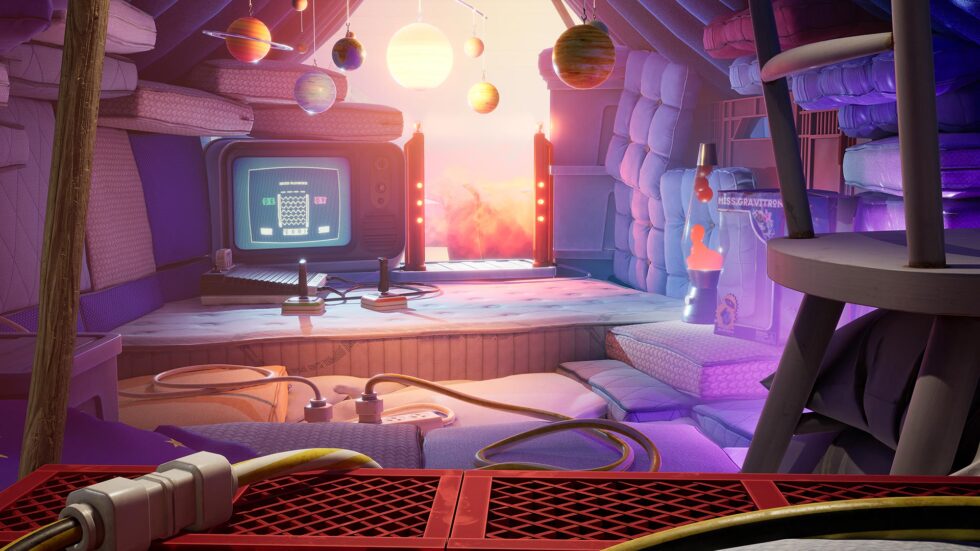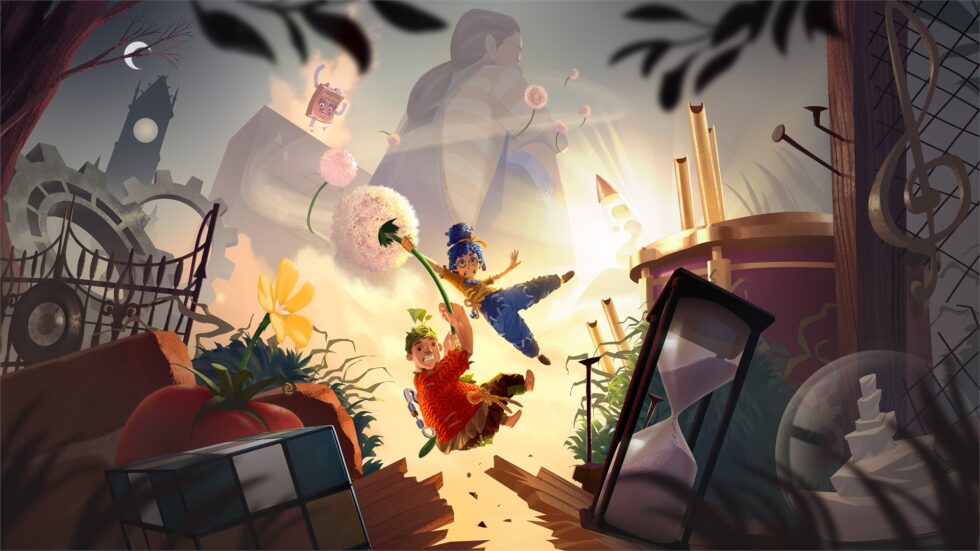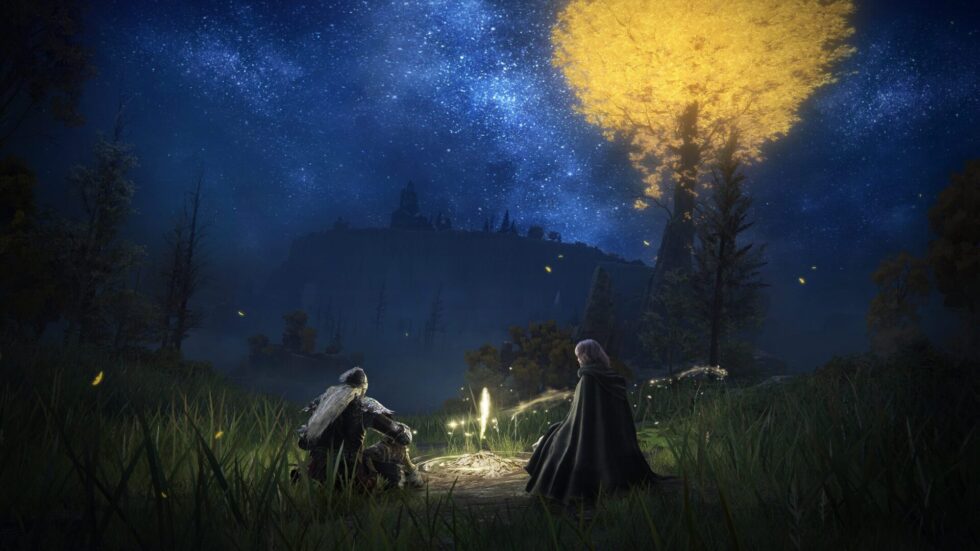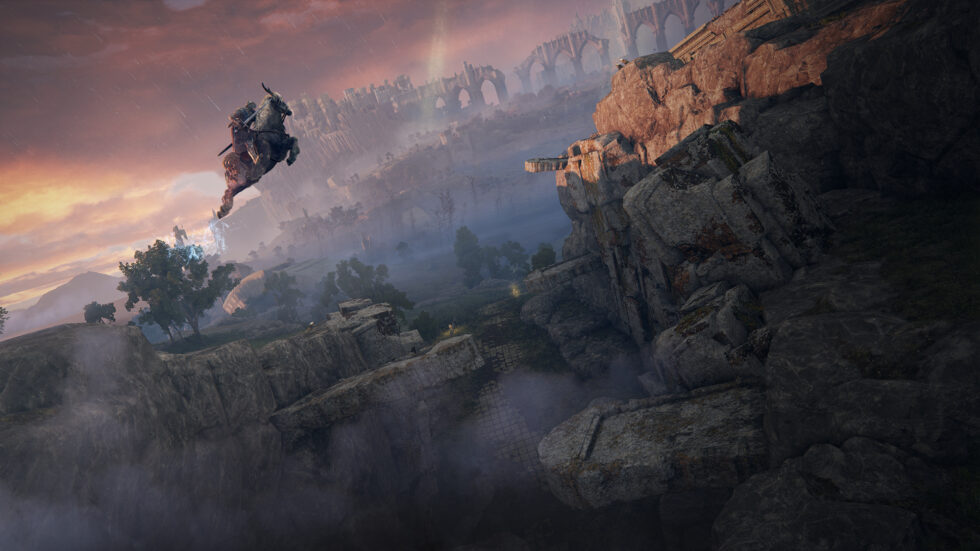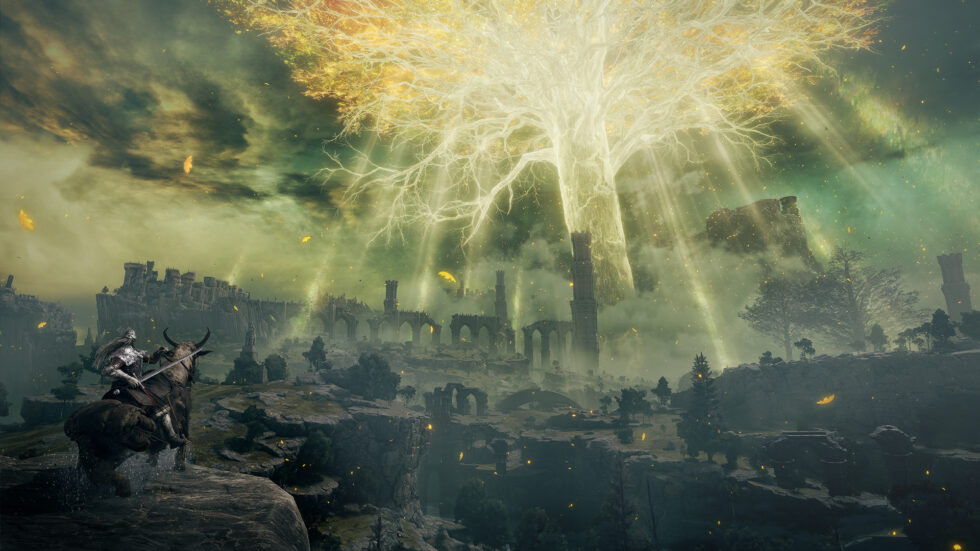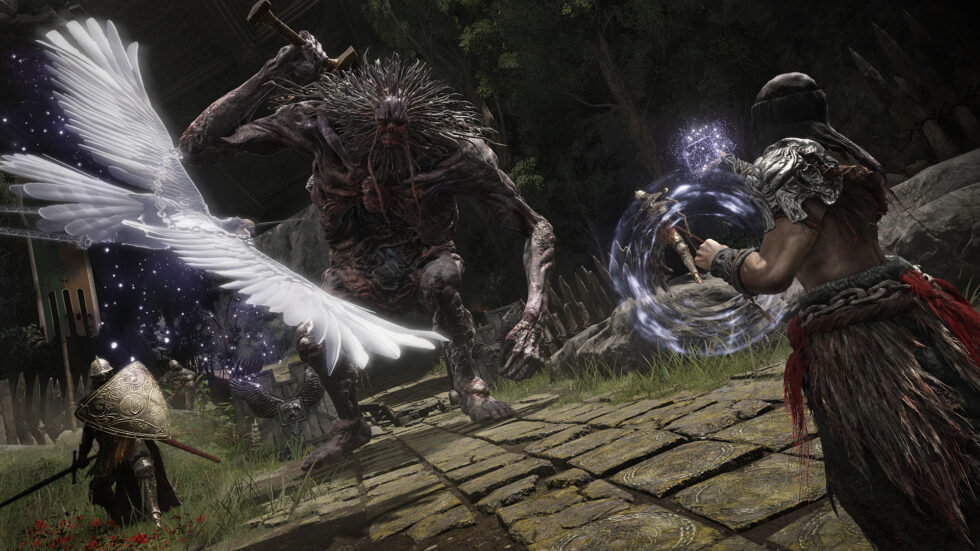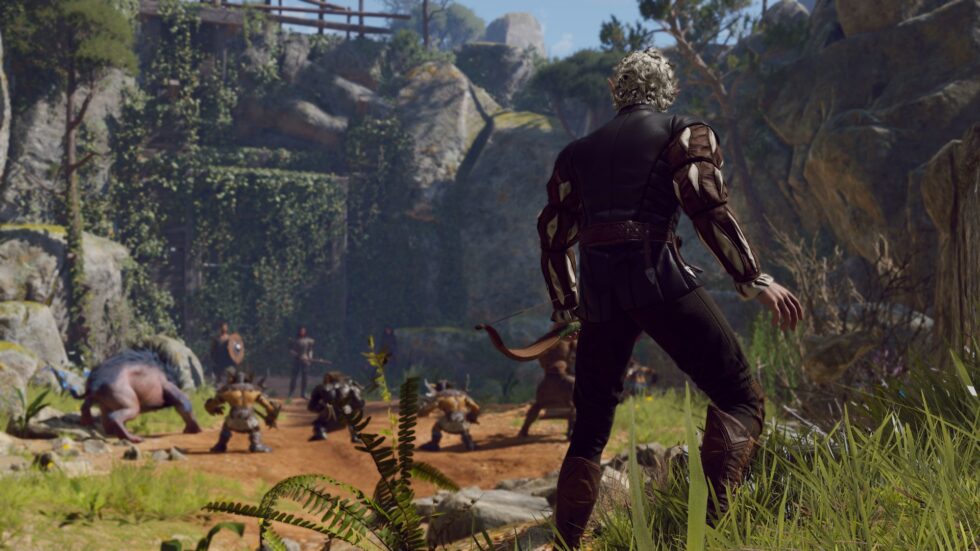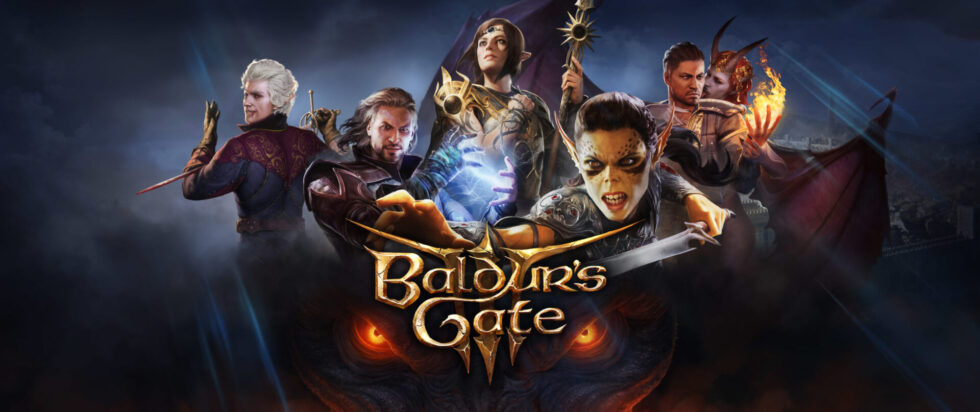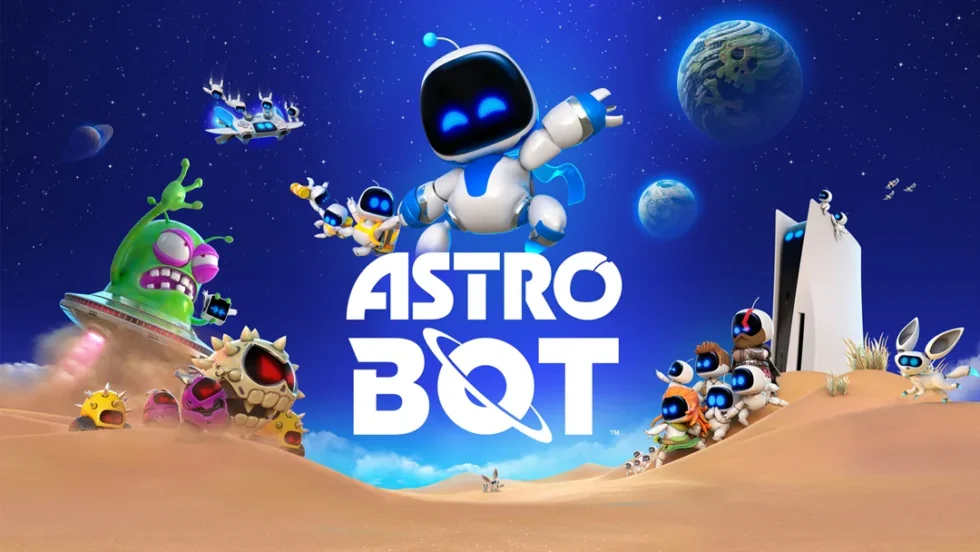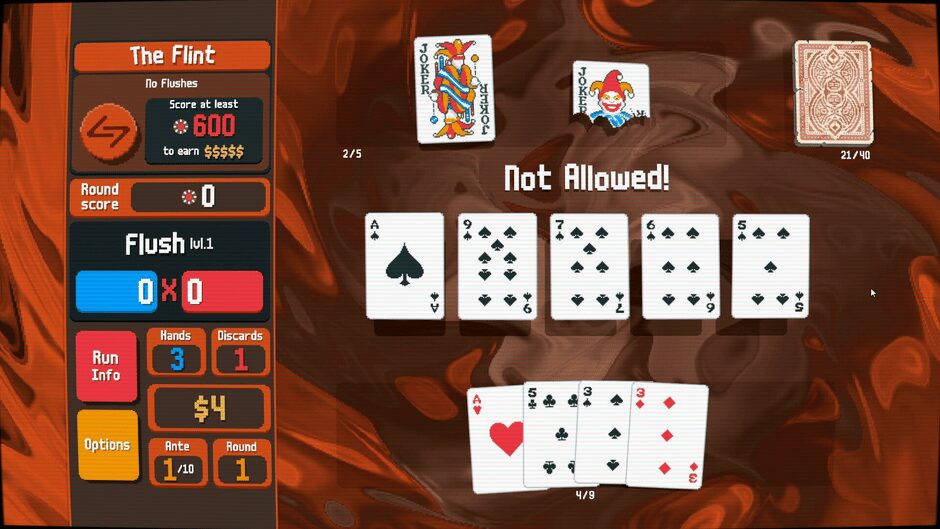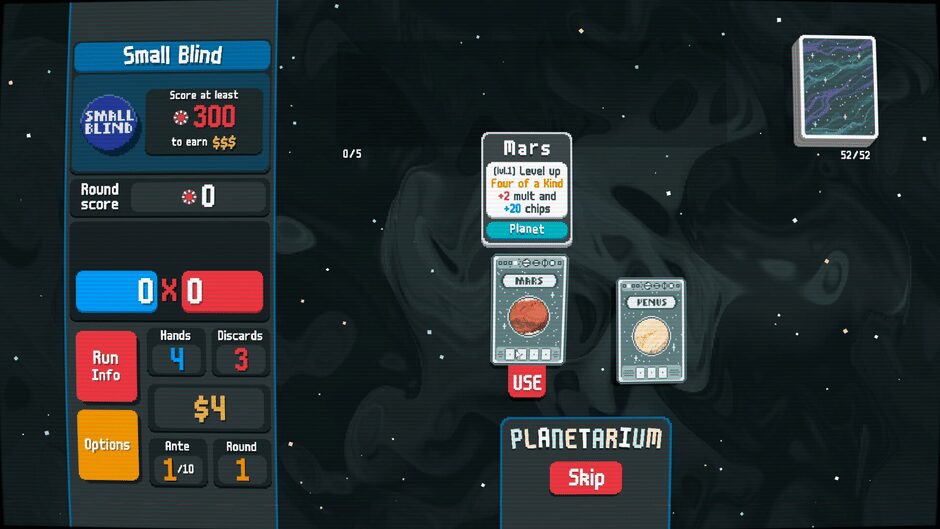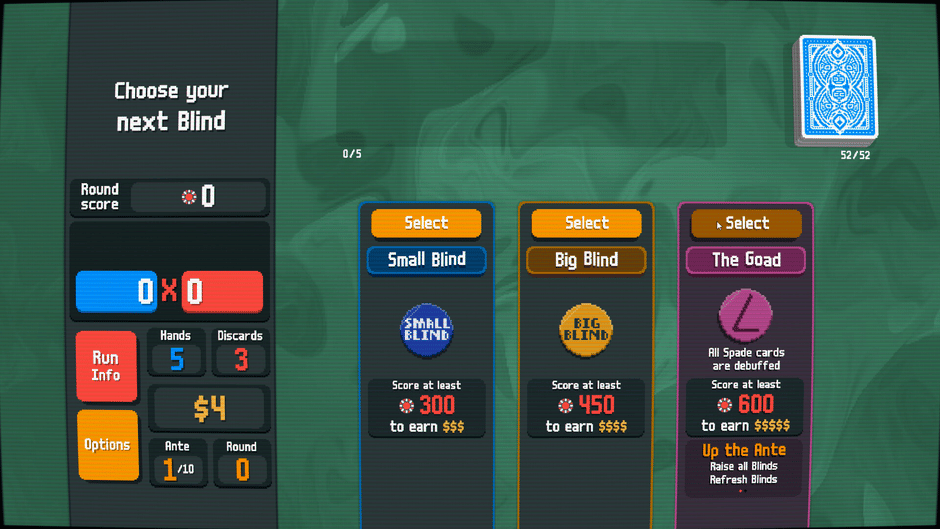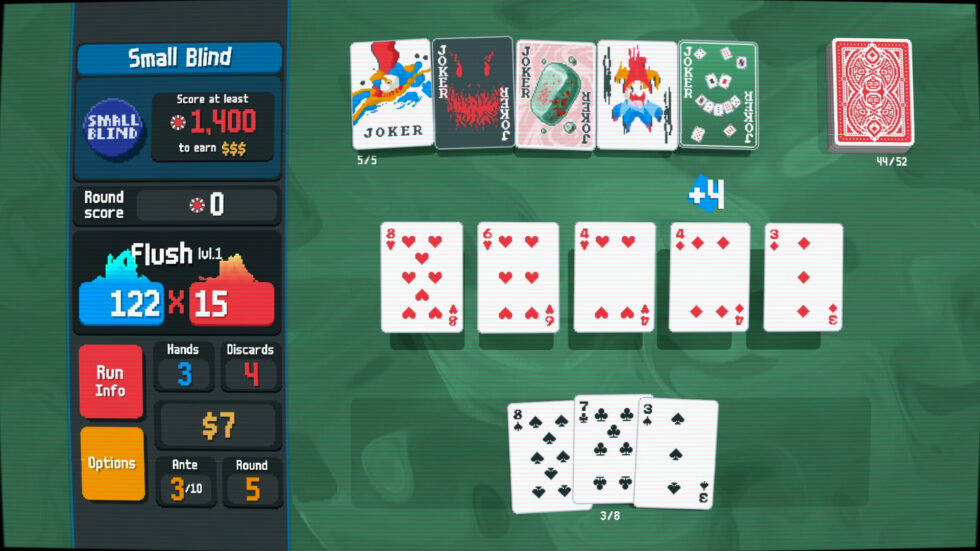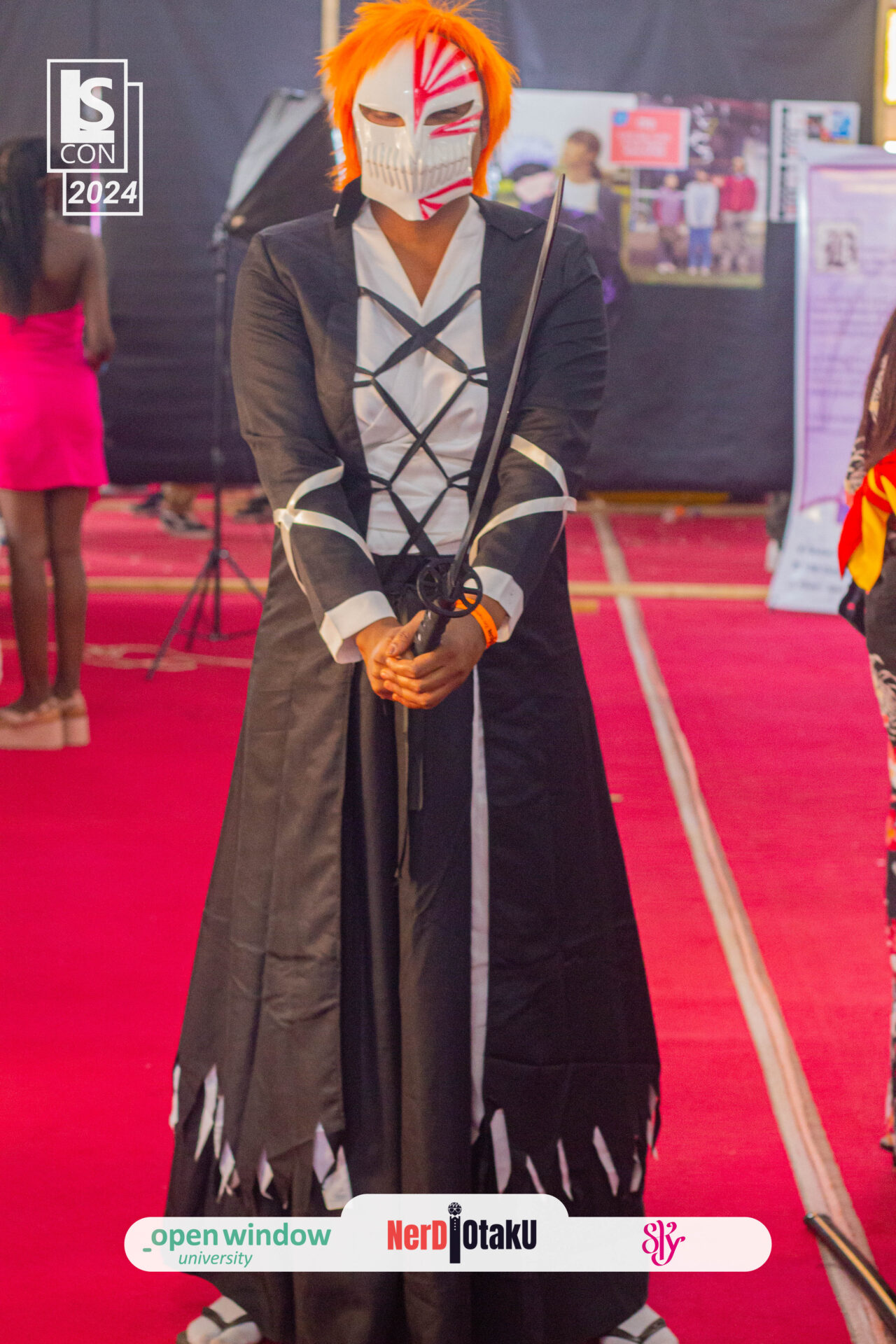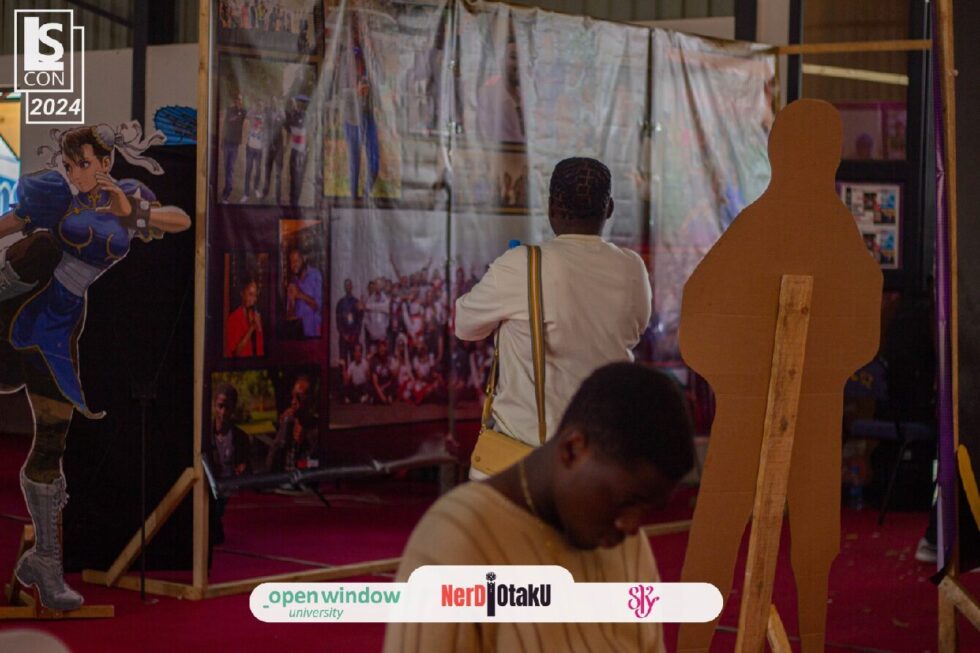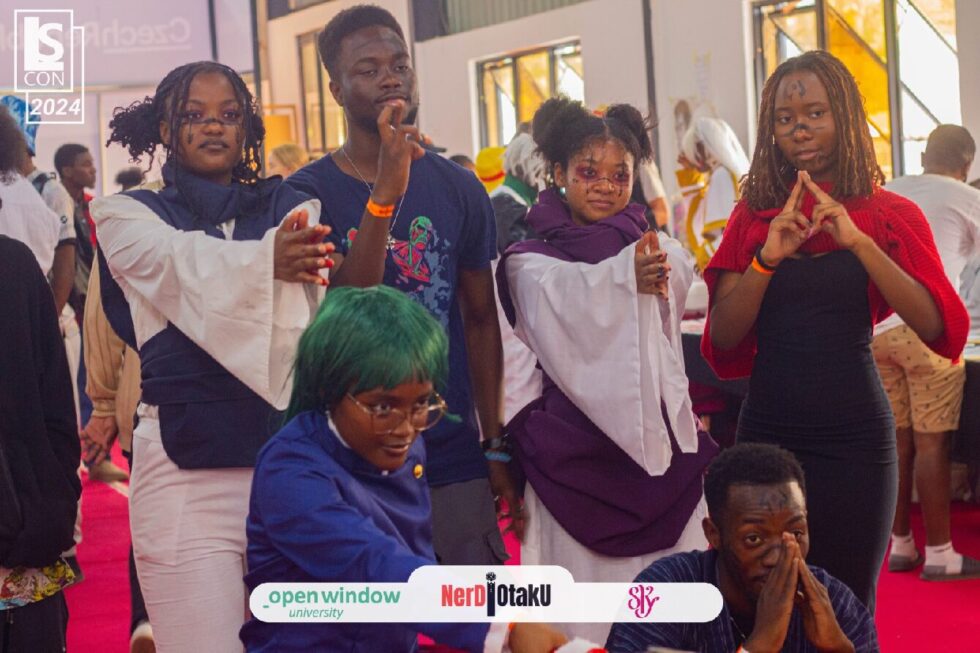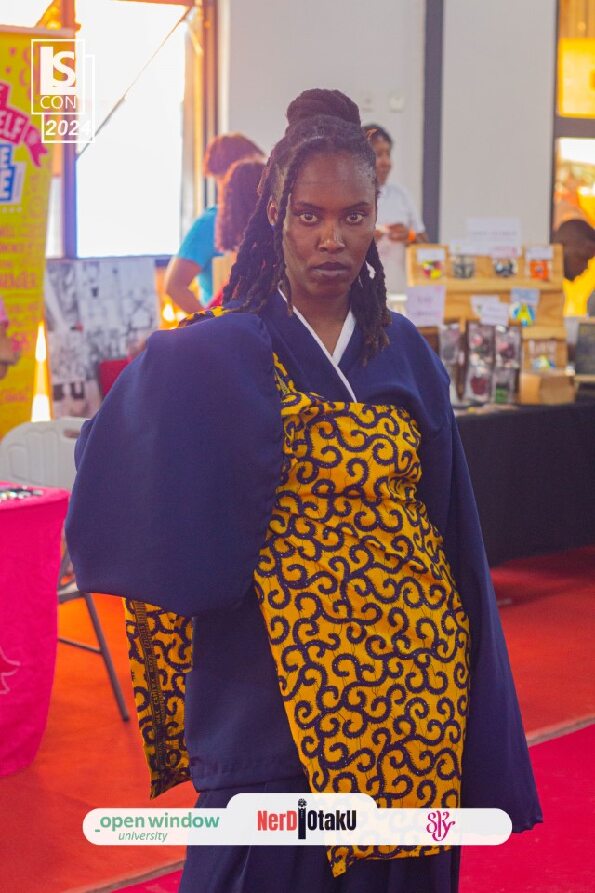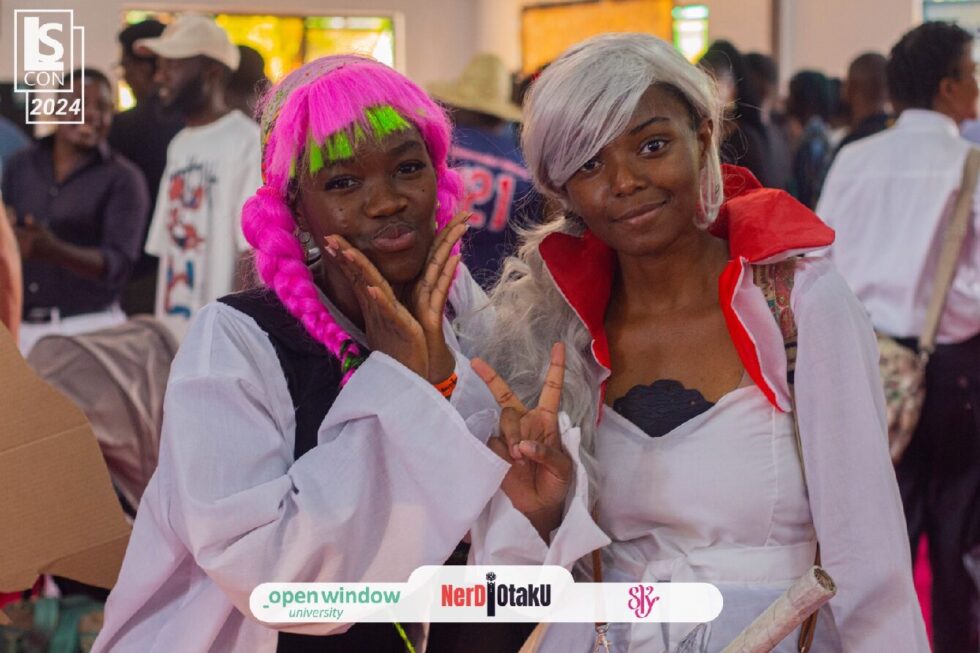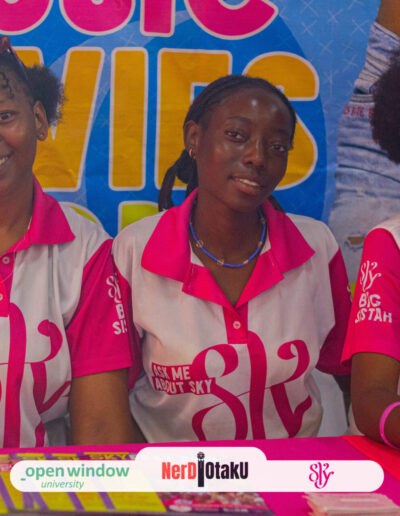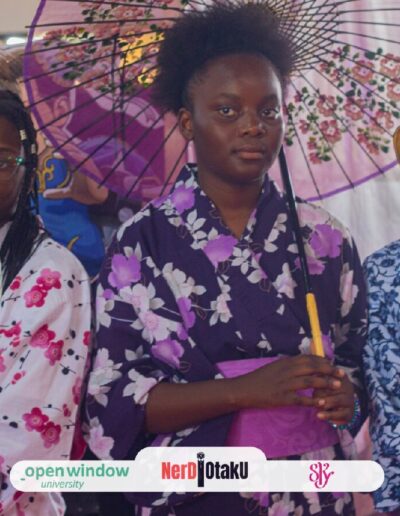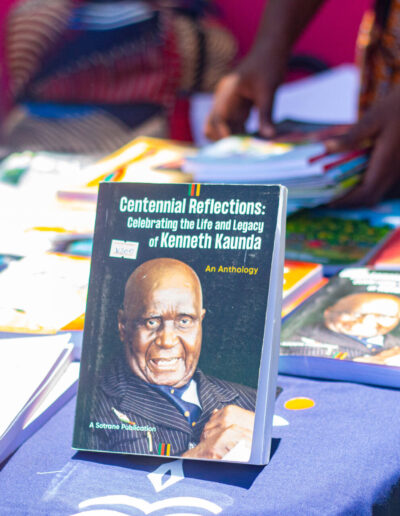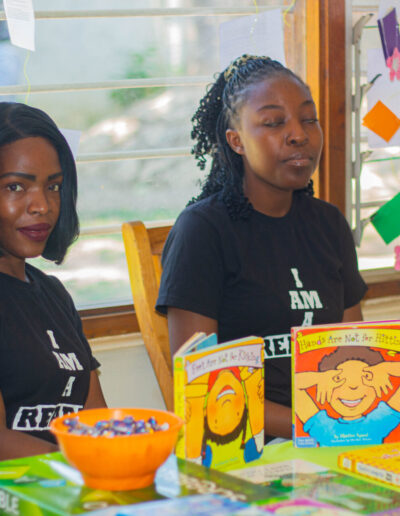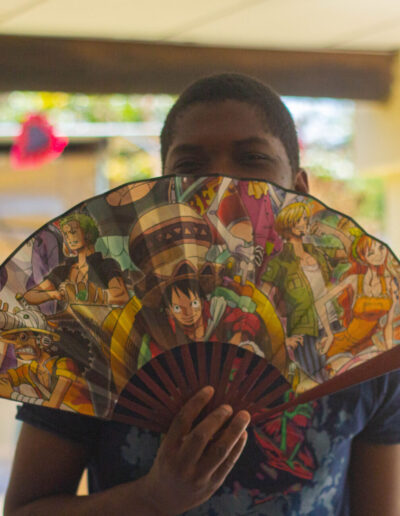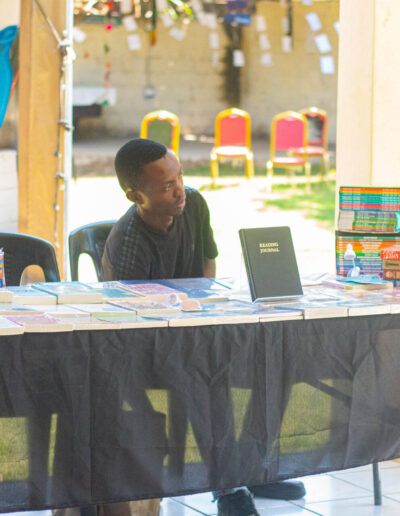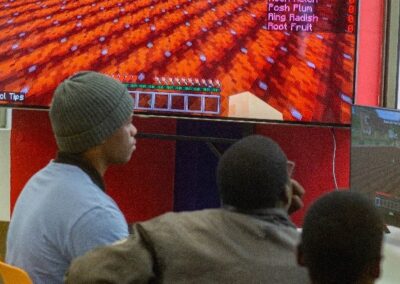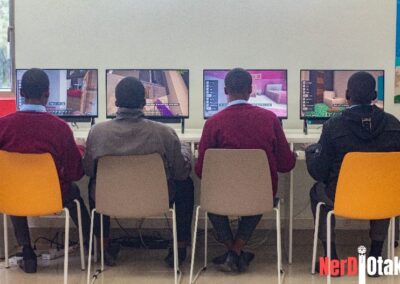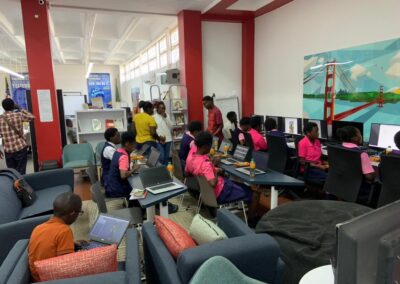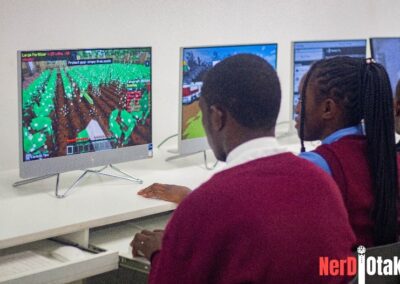The story of Gameloft, once a titan in the mobile gaming industry, is a fascinating reflection of the broader rise and fall—and subsequent resurgence—of mobile gaming as a whole.
Add your feed to SetSticker.com! Promote your sites and attract more customers. It costs only 100 EUROS per YEAR.
Pleasant surprises on every page! Discover new articles, displayed randomly throughout the site. Interesting content, always a click away
Warning: Undefined variable $pay in /home/setstick/public_html/read.php on line 299
Warning: Undefined variable $pay in /home/setstick/public_html/read.php on line 330
NerD|OtakU
The Largest Anime, Video Gaming & OtakU Community in ZambiaBridging Worlds: How VIdeo Game Adaptations Connect Gamers and New Audiences 11 Apr 2025, 5:30 am
BRIDGING WORLDS: HOW VIDEO GAME ADAPTATIONS CONNECT GAMERS AND NEW AUDIENCES
The world of entertainment is increasingly interconnected, and one of the most prominent trends in recent years has been the adaptation of video games into films, TV shows, and even animated series. While these projects often generate significant buzz, and introduce beloved game worlds to a wider audience, the reception isn’t always universally positive, particularly among the very people who made the games popular in the first place: the gamers themselves. Interestingly, however, these adaptations often find a receptive and enthusiastic audience in those who have never picked up a controller.
For dedicated gamers, video games are more than just a pastime; they are immersive experiences, often involving hundreds of hours spent mastering intricate mechanics, exploring vast worlds, and becoming deeply invested in the characters and lore. When these meticulously crafted universes are translated to the screen, gamers often come with a set of high expectations. They scrutinize every detail: “Is the tone right?”, “Are the characters accurately portrayed?”, “Does the adaptation capture the essence of what made the game so special?”
Inevitably, compromises are made during the adaptation process. What works in an interactive medium doesn’t always translate seamlessly to a passive one. Gameplay mechanics, a core element of the video game experience, are often entirely absent. Storylines might be condensed or altered to fit the constraints of a film or television season. Characters might undergo subtle or even significant changes in personality or appearance. These deviations, however necessary they may be for the adaptation to succeed in its new format, can often lead to disappointment and even outrage among the core fanbases. For them, it feels like a beloved story is being misinterpreted or diluted.
On the other hand, for individuals who have never played the source material, these adaptations offer a fresh entry point into a potentially rich and engaging world. They come to the experience without pre-conceived notions or deeply ingrained expectations. They can appreciate the narrative, the visual design, and the characters on their own merits, often finding themselves drawn into the lore and becoming fans of the universe without ever needing to navigate complex game controls or strategies. For them, the adaptation is simply a new and exciting piece of entertainment.
This dichotomy highlights a crucial aspect of adaptation: it’s often a balancing act between catering to the existing fanbase and appealing to a broader audience. Sometimes, this balance is struck masterfully, leading to widespread acclaim. Other times, it can feel like the adaptation prioritizes accessibility over fidelity, leaving dedicated fans feeling alienated.
However, the impact of successful adaptations can be undeniable, even on the original video games themselves. Consider the phenomenal success of Netflix’s The Witcher. While the games, particularly, The Witcher 3: Wild Hunt, were already critically acclaimed and commercially successful, the popularity of the Netflix series, starring Henry Cavill, propelled the games to new heights of mainstream recognition. Suddenly, people who had never considered playing a fantasy RPG were intrigued by the world of Geralt of Rivia. This led to a significant surge in sales for The Witcher 3, years after its initial release, demonstrating the powerful cross-promotional potential of a well-received adaptation.
Similarly, the animated series Cyberpunk: Edgerunners, based on CD Projekt Red’s Cyberpunk 2077, had a profound effect on the game’s reception. While Cyberpunk 2077 had a rocky launch, Edgerunners captured the gritty atmosphere and compelling characters of Night City in a way that resonated deeply with audiences, both gamers and non-gamers alike. The show’s critical acclaim and popularity led to a significant resurgence in interest in the game, with player counts soaring and the game finally receiving the widespread praise many felt it deserved. This example showcases how a strong adaptation can even help rehabilitate the reputation of a game that initially stumbled.
This ongoing trend of video game adaptations has continued to shape perceptions of interactive media in mainstream entertainment. HBO’s The Last of Us became a cultural phenomenon, praised by both gamers and non-gamers alike for its faithful yet accessible storytelling. Amazon’s Fallout series was met with widespread acclaim, successfully capturing the franchise’s satirical yet grim tone in a way that resonated with both longtime fans and those entirely new to the wasteland. What makes Fallout particularly interesting is that instead of retelling an existing game’s storyline, the show introduces a completely new story that fits directly into the franchise’s established timeline. Set in 2296, Fallout takes place after all the mainline games, occurring nine years after Fallout 4 and fifteen years after Fallout: New Vegas (IGN, 2024). This approach allowed it to remain fresh while still respecting the lore, making it enjoyable for both veteran fans and newcomers alike. Likewise, Uncharted, despite its blockbuster appeal, struggled to win over some gaming purists but found a solid audience among those unfamiliar with Nathan Drake’s adventures. Netflix’s Arcane, based on League of Legends, serves as a rare example of an adaptation that managed to bridge both audiences successfully, offering rich storytelling that resonated with fans and first-timers alike.
In conclusion, the adaptation of video games is a complex and often debated topic. While dedicated gamers may approach these projects with a critical eye, focusing on faithfulness to the source material, adaptations offer a valuable opportunity to introduce captivating game worlds and characters to a wider audience who can appreciate them without the baggage of gaming expectations. Furthermore, the success of shows like Cyberpunk: Edgerunners, and Netflix’s The Witcher has demonstrated the powerful impact these adaptations can have on the original games, breathing new life into them and attracting a wave of new players eager to experience the interactive worlds they’ve glimpsed on screen. Ultimately, while the relationship between video games and their adaptations can be fraught with the expectations of hardcore fans, the potential for mutual benefit and the introduction of exciting narratives to new audiences make this trend a significant and evolving part of the entertainment landscape.
Read More Of Our Stuff
2025, The Year The Average Gamer Upgrades
With Nvidia entering their 4th generation of ray tracing cards, and gamedev companies shoving excessively demanding requirements down our throats, is it time to finally get with the program and conform?
Ten Years of The Video Game Awards
The medium of film or motion pictures has existed for just over 100 years now. 50 years in, they had already established a canon, and a set of values or expectations that creators and the audience had become accustomed to. A substantial contributing factor to the established canon of film was the implementation of the Academy of Motion Picture Arts and Sciences Awards, also known as the Oscars.
The Rise and Fall of Gameloft 27 Mar 2025, 10:00 pm
THE RISE AND FALL OF GAMELOFT
A Microcosm of Mobile Gaming's Evolution
The story of Gameloft, once a titan in the mobile gaming industry, is a fascinating reflection of the broader rise and fall—and subsequent resurgence—of mobile gaming as a whole. From its early dominance in the 2000s, to its struggles in the 2010s; Gameloft’s journey, mirrors the shifting tides of technology, consumer behavior, and industry competition. This article explores Gameloft’s trajectory, and how it parallels the evolution of mobile gaming.
The Rise of Gameloft: Pioneering Mobile Gaming
Founded in 1999 by Michel Guillemot, Gameloft emerged as a subsidiary of Ubisoft, one of the most prominent video game publishers in the world. At a time when mobile gaming was still in its infancy, Gameloft positioned itself as a leader in the space. It capitalized on the rapid adoption of mobile phones, and the growing demand for portable entertainment.
Gameloft’s early success was built on its ability to adapt popular console and PC gaming franchises into mobile-friendly formats. Games like Asphalt, Dungeon Hunter, and Modern Combat became household names, offering console-like experiences on devices with limited hardware capabilities. The company also leveraged partnerships with major brands, creating mobile versions of franchises like Prince of Persia, Spider-Man, and The Adventures of Tintin.
During the 2000s, Gameloft thrived by targeting feature phones, which dominated the market before the advent of smartphones. Gameloft games were preloaded on devices by manufacturers like Nokia and Sony Ericsson; giving the company a massive reach. By 2010, Gameloft had become one of the most successful mobile gaming companies in the world with millions of downloads and a presence in over 100 countries.
The Fall of Gameloft: Struggling to Adapt
The rise of smartphones, particularly Apple’s iPhone, and devices running Google’s Android operating system, marked a turning point for the mobile gaming industry—and for Gameloft. While the company initially adapted well to the new platform, it soon faced challenges that would ultimately lead to its decline.
🎮 The Freemium Model and Monetisation Struggles
The introduction of app stores and the freemium model revolutionized mobile gaming. Games like Angry Birds and Candy Crush Saga offered free downloads with in-app purchases, a model that quickly became the industry standard. Gameloft, however, struggled to fully embrace this shift. While it eventually adopted freemium mechanics, its premium pricing for many titles alienated cost-conscious consumers.
🎮 Increased Competition
The barrier to entry for mobile game development lowered significantly with the rise of app stores. Independent developers and smaller studios began flooding the market with innovative and niche games, overshadowing Gameloft’s more traditional offerings. Companies like Supercell (Clash of Clans) and King (Candy Crush Saga) dominated the charts, leaving Gameloft struggling to maintain its relevance.
🎮 Quality and Innovation Stagnation
Gameloft’s reliance on established formulas and franchises led to a perception that its games were becoming repetitive and uninspired. While its early titles were groundbreaking for their time, the company failed to innovate at the same pace as its competitors. This stagnation hurt its reputation among gamers.
🎮 Corporate Changes
In 2016, Vivendi, a French media conglomerate, acquired Gameloft after a hostile takeover. This marked the end of the Guillemot family’s control over the company. The acquisition led to internal restructuring, studio closures, and layoffs; further weakening Gameloft’s position in the market. A letter was sent out to Gameloft employees after the acquisition, detailing Vivendi’s vision and next steps for the company. You can read the full letter here.
The Fall and Rise of Mobile Gaming
Gameloft’s struggles were emblematic of broader challenges faced by the mobile gaming industry during the 2010s. As the market matured, it became increasingly difficult for traditional players to compete with agile startups and tech giants. However, the industry as a whole experienced a renaissance, driven by several key trends:
🎮 The Emergence of Hyper-Casual Games
Hyper-casual games, characterized by simple mechanics and short play sessions, became a dominant force in the late 2010s. Titles like Flappy Bird and Helix Jump demonstrated that less could be more, appealing to a broad audience and generating massive revenue through ads.
🎮 The Rise of Esports and Competitive Gaming
Games like PUBG Mobile and Garena Free Fire brought competitive gaming to mobile devices, attracting millions of players, and creating new opportunities for monetization through in-game purchases and sponsorships.
🎮 Cloud Gaming and Cross-Platform Play
Advances in cloud technology enabled high-quality gaming experiences on mobile devices, blurring the lines between consoles, PCs, and smartphones. Games like Fortnite and Call of Duty: Mobile embraced cross-platform play; further expanding their reach.
🎮 The Impact of COVID-19
The pandemic accelerated the growth of mobile gaming, as people turned to their devices for entertainment during lockdown. This period saw record-breaking revenues and user engagement, solidifying mobile gaming as a cornerstone of the global entertainment industry.
Gameloft's Comeback?
Gameloft’s attempted comeback in recent years has been marked by strategic shifts in its business model, game development, and monetization strategies. While the company has faced significant challenges, it has also made notable strides in adapting to the modern mobile gaming landscape. Below, I’ll provide more details and data to support Gameloft’s efforts to regain its footing.
In recent years, Gameloft has sought to reinvent itself, leveraging its legacy while embracing new trends. The company has shifted its focus to free-to-play games with live-service elements, such as Asphalt: Legends Unite and Disney Magic Kingdoms. It has also explored new genres, including narrative-driven games like The Oregon Trail and Lego Star Wars: Castaways.
Asphalt 9: Legends has contribute significantly to Gameloft’s resurgence. As of June 11, 2023, Asphalt 9: Legends, along with Need for Speed and Hill Climb Racing 2, were among the elading racing mobile games on Google Play in the Philippines, each surpassing 100 million downloads.
– Christy Balita
While Gameloft may never regain its former dominance, it remains a significant player in the mobile gaming landscape. Its ability to adapt and evolve will determine whether it can carve out a sustainable niche in an increasingly competitive market.
A Reflection of The Industry
Gameloft’s rise and fall is a microcosm of the mobile gaming industry’s broader trajectory. From its early days as a pioneer to its struggles with innovation and competition, the company’s story highlights the challenges and opportunities inherent in this dynamic sector. As mobile gaming continues to evolve, driven by technological advancements and changing consumer preferences, the lessons learned from Gameloft’s journey will remain relevant for years to come.
The fall and rise of mobile gaming and Gameloft’s place within it demonstrates that in an industry defined by rapid change, adaptability is the key to survival. Whether Gameloft can fully rise again remains to be seen, but its legacy as a trailblazer in mobile gaming is undeniable.
Read More Of Our Stuff
The Rise and Fall of Gameloft
The story of Gameloft, once a titan in the mobile gaming industry, is a fascinating reflection of the broader rise and fall—and subsequent resurgence—of mobile gaming as a whole.
2025, The Year The Average Gamer Upgrades
With Nvidia entering their 4th generation of ray tracing cards, and gamedev companies shoving excessively demanding requirements down our throats, is it time to finally get with the program and conform?
Ten Years of The Video Game Awards
The medium of film or motion pictures has existed for just over 100 years now. 50 years in, they had already established a canon, and a set of values or expectations that creators and the audience had become accustomed to. A substantial contributing factor to the established canon of film was the implementation of the Academy of Motion Picture Arts and Sciences Awards, also known as the Oscars.
2025, The Year The Average Gamer Upgrades 7 Mar 2025, 9:27 am
2025, THE YEAR THE AVERAGE GAMER UPGRADES
With Nvidia entering their 4th generation of ray tracing cards, and gamedev companies shoving excessively demanding requirements down our throats, is it time to finally get with the program and conform?
If you aren’t living under a rock you know that its 2025. Salutations! Congratulations for making it into the new year. There’s a lot to be excited for, be it the long-awaited release of GTA VI, or next generation of GPUs. However, one thing we never had on our bingo cards, was the harsh realization that our tech is aging.
[Robots – 2005]
I see you little Timmy at the back with your hand raised high asking, “What is ray tracing Mr. Sandman?”. Well please allow me to mansplain a bit.
We got our first harsh reality check with the release of Alan Wake II, and its dreaded path tracing. GPUs across the globe were brought to their knees, and now, with the announcement that MachineGames’ Indiana Jones was built from the ground up with ray tracing as a requirement, it’s easy to see where the industry is shifting to. Ray tracing is becoming a standard, and us the consumers will have to bear the cost for it to become a reality.
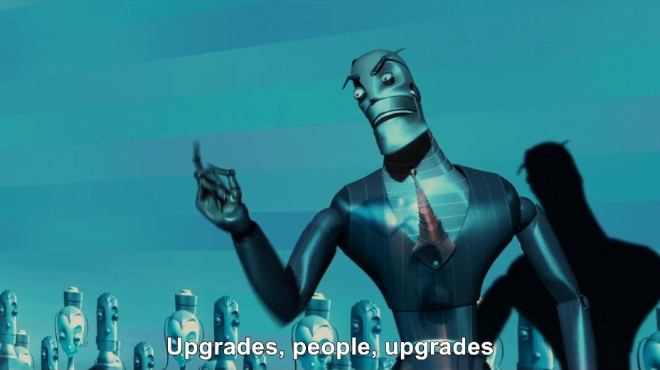
I see you little Timmy at the back with your hand raised high asking, “What is ray tracing Mr. Sandman?”. Well please allow me to mansplain a bit. Ray tracing is a lighting technique deployed where lighting/shadows such as in a scene, are created through simulating actual light rays deflecting off of materials instead of alternately creating light maps to imitate how light would otherwise behave.
If you ask me my thoughts on it, it’s a novelty! Similar to how motion blur, and bloom were once viewed as revolutionary effects, when, in fact they were a novelty. Of course, it has suitable use-cases, and sometimes it makes for some god-awesome visuals. But does the end-product justify the great barrier to entry, especially for budget gamers? I honestly don’t think so.
Despite this, MachineGames, and Remedy Entertainment don’t care what I think, and it’s inevitable that more game devs will jump on the bandwagon as we approach 2030. So, gamers get your wallets ready, or get some part-time jobs… I don’t know. That 5070 and Arc B580 won’t buy itself.
Till next time valiant gamers.
Read More Of Our Stuff
The Rise and Fall of Gameloft
The story of Gameloft, once a titan in the mobile gaming industry, is a fascinating reflection of the broader rise and fall—and subsequent resurgence—of mobile gaming as a whole.
2025, The Year The Average Gamer Upgrades
With Nvidia entering their 4th generation of ray tracing cards, and gamedev companies shoving excessively demanding requirements down our throats, is it time to finally get with the program and conform?
Ten Years of The Video Game Awards
The medium of film or motion pictures has existed for just over 100 years now. 50 years in, they had already established a canon, and a set of values or expectations that creators and the audience had become accustomed to. A substantial contributing factor to the established canon of film was the implementation of the Academy of Motion Picture Arts and Sciences Awards, also known as the Oscars.
Ten Years of The Video Game Awards 20 Feb 2025, 10:00 pm
THE VIDEO GAME CANON ACCORDING TO THE GAME AWARDS.
The medium of film or motion pictures has existed for just over 100 years now. 50 years in, they had already established a canon, and a set of values or expectations that creators and the audience had become accustomed to. A substantial contributing factor to the established canon of film was the implementation of the Academy of Motion Picture Arts and Sciences Awards, also known as the Oscars.
Video Games as a mass market medium have only existed for about 50 years, and unlike films the video-game canon has not yet been properly established by awards recognition, but mostly popularity and sales. This has led to some cult classics and hidden gems not getting the recognition they rightfully deserve
For one night, members of the Academy (which consisted exclusively of industry professionals) nominated, voted, and consequently celebrated the art-form which they helped create for that particular season. Films that may not have won by mere incidence of being nominated, have also been permanently embellished as tent-pole achievements in filmmaking, and are permanently etched into history as part of the ‘film canon’.
Video Games as a mass market medium have only existed for about 50 years, and unlike films the video-game canon has not yet been properly established by awards recognition, but mostly popularity and sales. This has led to some cult classics and hidden gems not getting the recognition they rightfully deserve. It is for this reason that I wanted to take a look at the past 10 years of The Game Awards winners to attempt to parse if there is any structure, or story that these wins and games can elaborate about gamers’ tastes over time, and where the industry is going.
2014: DRAGON AGE: INQUISITION
The very first recipient of The Game Awards Game of the Year award was Electronic Arts and Bioware’s much anticipated Role-Playing Game sequel to Dragon Age: Origins titled, Dragon Age: Inquisition. The development of this game was later revealed by renowned game journalist Jason Schreier to be a mess of crunch that only got through the finish thanks to something the development team colloquially referred to as “Bioware Magic.”
In spite of the rough development, the game turned out to be very well received by fans and critics alike, earning itself a respectable 85 rating on Metacritic, and eventually winning Game of the Year. 2014 was the beginning of the PlayStation 4 and Xbox One generation; this made it a relatively weak year for games. Gamers were looking for the next big AAA video game to usher them comfortably into the next generation and Dragon Age: Inquisition filled that void.
Narrative-based single-player Role Playing Games set the pace as the standard bearer and favourite for winning Game of the Year. Gamers and critics alike looked more fondly upon this subgenre with the next best competition being Middle-Earth: Shadow of Mordor; “A game that ushered in the first true unique mechanic of the generation in the Nemesis System”. Unfortunately, the Nemesis System would not be used again until the sequel to Shadow of Mordor was released due to the fact that it was patented.
2015: THE WITCHER 3: WILD HUNT
The Witcher 3 was a much-anticipated sequel to the primarily PC-based Role-Playing Game from Polish Developer and Publisher CD Projekt RED. The game gained notoriety and popularity due to the quality of its prequel, and the promise of a super polished open world AAA upcoming game called Cyberpunk 2077. The intense hype for the game was thankfully matched by critical reception (92 Metacritic) and sales.
2016: OVERWATCH
With the generation in full swing and the install base on pace to surpass the previous one, Blizzard released their first new IP in decades with the much-anticipated Hero Shooter, Overwatch. The prerelease marketing for Overwatch was nothing short of perfect with well-timed CG short films introducing the world and characters to a brand-new audience at the time. The films were so good it created a fanbase that was solely interested in the lore and characters, and never even touched the games.
Overwatch was the game that ushered in the era of the Live-Service Game, for better and for worse.
Impeccable character design, and a spatter of shorts well after the release of the game cemented the games popularity as an all-timer. It’s also important to note that Overwatch was a multiplayer-only team-based game. The likes of which hadn’t gripped the gaming community since the early Quake days. Overwatch was the game that ushered in the era of the Live-Service Game, for better and for worse.
Overwatch was a fully priced game and further monetised its popular characters by selling character skins and emotes via a loot-box system. Loot boxes were not invented by Overwatch, but were certainly popularised by them. This set a new standard for the industry. Sell AAA games at full price, and monetise further by selling loot boxes.
Overwatch was the first Multiplayer game to win Game of the Year, and would be the last of its ilk to receive this accolade, mostly due to a lack of fresh ideas in the Hero Shooter subgenre, and an eventual over-saturation that led to the demise of its sequel a few years later.
2017: THE LEGEND OF ZELDA: BREATH OF THE WILD
Nintendo teased its brand-new console, the Nintendo Switch as a hybrid console, that is, it would be both a handheld console and a traditional home-based one when docked. Paring this with the release of a brand-new 3D Zelda game at launch led to such overwhelming demand for both the Switch and the game that for a few weeks, they were sold out everywhere.
Breath of the Wild was the first foray for The Legend of Zelda into the Open-World subgenre. This was a significant shift, and a much needed shake up for the tried-and-tested 3D Zelda formula. The game went back to its open-ended exploration first roots. It felt more like a third-person immersive sim than a puzzle platformer. Its open-ended nature set a new standard for the industry that is still being followed to this day.
2018: GOD OF WAR
The ‘soft reboot’ of Kratos’ story was a great opportunity for gamers who had never tried the game to latch on. The revamped and reworked gameplay seemed to be aping the much more popularised structure of behind the shoulder 3rd Person Action-Adventure that had become a template for ‘awards bait’ video games.
The unique selling point this time around was the addition of Atreus, Kratos’ son as a companion that could assist, or straight-up take over gameplay at certain points, similar to The Last of Us Part, or Telltale’s The Walking Dead before it. The game’s focus on a more streamlined narrative featuring very few primary characters opened up the IP to a much wider audience and it paid off.
This win ushered in the era of the Sony 3rd Person Action-Adventure/RPG hybrid that would bring the publisher so much critical and commercial success in the PS4 generation; a formula that would not be as successfully copied by other publishers and studios for a variety of reasons, but mostly, the inability to match polish, scale and scope.
2019: SEKIRO: SHADOWS DIE TWICE
The first win for From Software Studios came at a time when the mass market popularity of the Souls-like subgenre reached breaking point. Souls games were no longer a niche; everybody was playing them now, and their quality especially with this entry and its predecessor, Bloodborne, was undeniable.
Souls games and its mechanics have been talked about and critiqued to hell and high water by many critics, reviewers and gamers everywhere including on this very website. Sekiro’s addition to the subgenre was a parry system that when mastered, made gamers feel like demi-gods. The gameplay innovations popularised by Sekiro would be infinitely copied and implemented by many games going forward, and even expanded upon by future From Software games.
2020: THE LAST OF US PART 2
Another entry in the Sony 3rd Person Action-Adventure/RPG hybrid game, though more Action set-piece than RPG. This win was a celebration of single-player narrative action games more than anything else; the beginning of the rejection of the Live Service model due to increased saturation. This win symbolised a shift in market trends.
2021: IT TAKES TWO
Josef Fares had become a recurring main character at the actual Award show presentation. A colourful and expressive game developer who sometimes felt like he over-promised. It Takes Two was a Co-Operative Narrative-based Puzzle Platformer that celebrated gameplay and game design. The game went through various gameplay mechanics and gameplay loops that it sometimes feels like no ideas were rejected in the brainstorming phase. The impeccable game direction is what makes this game coherent and it was rewarded for that.
2022: ELDEN RING
Much like The Legend of Zelda, From Software was seeking to expand and evolve their games by going open-world. Exactly like Breath of The Wild before it, they took lessons from their previous games, and expanded upon the open-ended exploration nature of its tried and trusted gameplay loop. From Software is currently the only studio to have two wins at The Game Awards, and then coming in a span of one decade goes to show exactly what subgenre of game is King of the era.
2023: BALDUR'S GATE 3
CRPG’s like Wasteland 2 and 3, Pillars of Eternity, and Disco Elysium had been gaining popularity over the past decade and all it took was a AAA-level polished sequel to a much-anticipated franchise in the Dungeons and Dragons universe to bring the genre to the forefront, and to the mass market.
Larian Studios, a Belgian independent studio with hundreds of employees, and a handful of studios worldwide managed to piggyback off of the success and mechanics of their previous title, Divinity: Original Sin 2, to make what many deem the next evolution in single-player narrative-based role-playing games. Multiple tangible consequences for both narrative and gameplay choices give the game almost infinite replayability.
This was also the first game to win that extensively used the Early Access system on Steam; a system that allowed for unfinished games to be sold and played by the audience. This gives the developers invaluable feedback and some cash to keep developing the title simultaneously.
2024: ASTRO BOT
The PlayStation 5 shipped with Astro’s Playroom as a pack-in game, similar to how the SEGA Genesis shipped with Sonic the Hedgehog. Astro’s Playroom is to this day the only game to fully utilise the hardware gimmicks of the PS5. Well, the only game until Astro Bot, a full priced AAA Platformer Family game released exclusively for the PlayStation 5.
The game pays homage to the various franchises and gameplay mechanics that have become iconic on the PlayStation platform. Easter eggs and secrets are the core of the game, but nostalgia is not the only thing the game relies on. The sheer quality of the platforming which has been quite accurately compared to the best 3D Mario games is what sold gamers and critics on Astro Bot.
Astro Bot, and It Takes Two are the only family games to win game of the year, with Astro Bot being firmly targeted at children.
CONCLUSION
If one were to introduce someone new to games by only playing the last 10 Game of the Year winners they would mostly experience single-player narrative games with role-playing elements tinged with Souls game mechanics, and open-world exploration.
One- or two-family Puzzle Platformers that emphasise a variety of gameplay and mechanics as well as the only Live Service game to have so much cross-cultural appeal that none gamers recognise its characters.
A distinct lack of 2D platformers, and smaller indie games goes to show how big AAA games are prioritised by awards voters. This coincides with the slow death of the AA game that had experimental mechanics and didn’t need always to surpass sales expectations.
Recent nominations show that the JRPG is making a return but without any wins, a brand new gamer would only experience Souls games, Open World RPGs, or CRPGs.
The only First-Person Shooter being a Live Service game means a gamer would not experience the narrative brilliance of single-player FPS action games.
Adventure games like The Walking Dead seem to have fallen out of favour in the past decade, an evolution of its mechanics can be seen in the single-player Sony 3rd person games though, so their DNA lives on.
All-in-all, one can deduce that a few trends can be derived from the past 10 years of the Game Awards winners; Souls Games, Open World RPGs and 3rd Person Action Adventure Games. I am looking forward to the next 10 years of gaming to attempt to track the trends and see what wins ultimately gets enshrined in the Canon of Video Game culture.
Read More Of Our Stuff
The Rise and Fall of Gameloft
The story of Gameloft, once a titan in the mobile gaming industry, is a fascinating reflection of the broader rise and fall—and subsequent resurgence—of mobile gaming as a whole.
2025, The Year The Average Gamer Upgrades
With Nvidia entering their 4th generation of ray tracing cards, and gamedev companies shoving excessively demanding requirements down our throats, is it time to finally get with the program and conform?
Ten Years of The Video Game Awards
The medium of film or motion pictures has existed for just over 100 years now. 50 years in, they had already established a canon, and a set of values or expectations that creators and the audience had become accustomed to. A substantial contributing factor to the established canon of film was the implementation of the Academy of Motion Picture Arts and Sciences Awards, also known as the Oscars.
Best Media of 2024: Nerd|Otaku Writers’ Choice 31 Dec 2024, 12:29 pm
N|O WRITER’S CHOICE: 2024
From Arcane to Fallout, Black Myth Wukong to Marvel Rivals, and The Substance to Anora, 2024 has undoubtedly been a big year for film, TV, novels, video games, and music. We, the writers of Nerd|Otaku, had a long discussion on what our favourite media from this year was. Obviously, it was a calm and amicable discussion. Because of this, we decided to democratically make this difficult decision by putting everything to a vote. Eventually, we arrived at the following conclusions on each of our favourite pieces of media from 2024. We defended our choices as one would protect their thesis because that’s how dedicated we are to loving and appreciating media/art in whatever form it’s portrayed. We hope you enjoy the rankings!
BEST FILM
DUNE PART TWO
Dune Part Two excelled, by finely intertwining characters and showcasing how damning the choices an individual makes are. By greatly emphasizing how far Paul Atreides would go to further his “prophecies,” which are edged on by a sect of the Fremen, the movie paints an idea of what happens when radicalism and mere sectorial beliefs collide. Proving oneself to a hoard of apprehensive and xenophobic individuals is not easy, but Paul can dance so finely between those lines that he almost convincingly makes it look easy. Lady Jessica did nothing to satiate her son’s pursuits, and only fueled them more all for the fulfilment of hers. If the first movie was about how the planetary divide is brought about by the greedy capitalisation of a natural resource, then the second movie emphasizes the interplanetary ramifications that come with it. It’s not hard to fathom what the movies, and ultimately the books are implying here. All in all, the movie was an amazing experience, and one I can confidently place in some of my favourite movie theatre experiences. Pssst. Watch Furiosa while you’re at it.
Dune Part Two ticks all the boxes and sets the bar even higher for the next film, my favourite aspect is definitely the cinematography, the first scene looks absolutely beautiful with the orange desert, and the lighting is perfect. Paired with a captivating narrative, it leaves you eagerly anticipating more. It’s undoubtedly my favourite film of the year.
Runner Up: THE WILD ROBOT
BEST TV SHOW
ARCANE SEASON 2
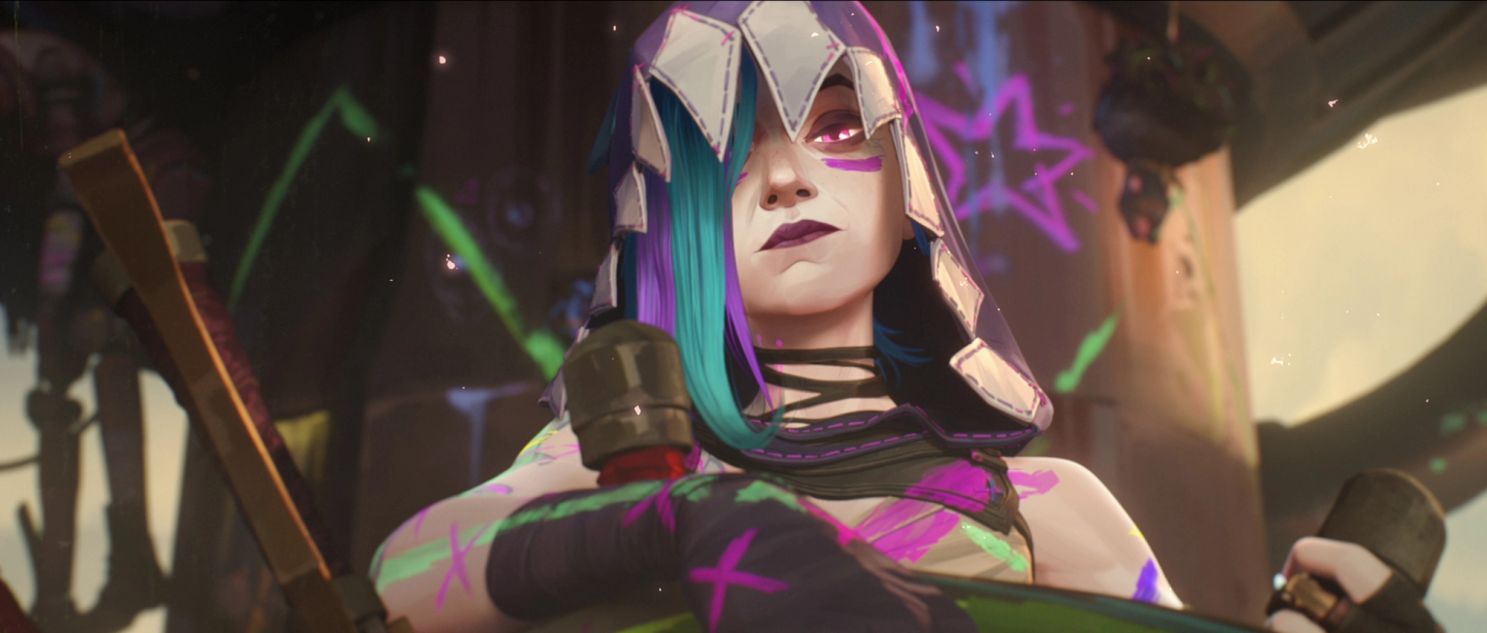
Arcane isn’t just a love letter to art, it’s a serenade; it’s a cultural phenomenon that has gone down in history as a “once-in-a-generation masterpiece,” and the reception of the sequel has proven that the crown is heavy. This addition to the highly acclaimed first season brings more to the table, more of Studio Fortiche’s legendary hand-drawn animation comparable to paintings in the Louvre being somehow made to move, more visceral performances, and more of a star-studded soundtrack that takes you through the whole range of human emotions and reflects the story being told, so much more, maybe even to a fault. Arcane season one spent a lot more time on “street level” conflicts in a world with multiversal level threats and wrapping up, or rather connecting it to the bigger picture made the final act of the second season seem like too drastic a jump for some. It left audiences wishing there was more in between. If you view it only as the final season and not just the end of one of many chapters you will see that Arcane hasn’t mastered the art of being an individual piece in a larger story. It needed to balance being self-contained enough to feed the audiences sufficiently and also introduce the vast universe it’s a part of. Even Marvel movies often have trouble pulling this off so keep an eye out for what the team at Riot Games makes next.
How do you improve on perfection? With more perfection of course. Sometimes you have to ignore logic and maniacally do your own thing because “there is no prize to perfection, only an end to pursuit”.
Arcane’s “fantasy-meets-steampunk” world is supernaturally natural as well as naturally supernatural, and EVERYTHING (in both the show’s world and writing) is intentional and connected through messages hidden within the pattern. This is very rewarding so why not pretend like it’s the first time and give it a 6th rewatch?
Runner Up: FALLOUT
BEST NOVEL
THE REAPPEARANCE OF ACHEL PRICE - HOLLY JACKSON
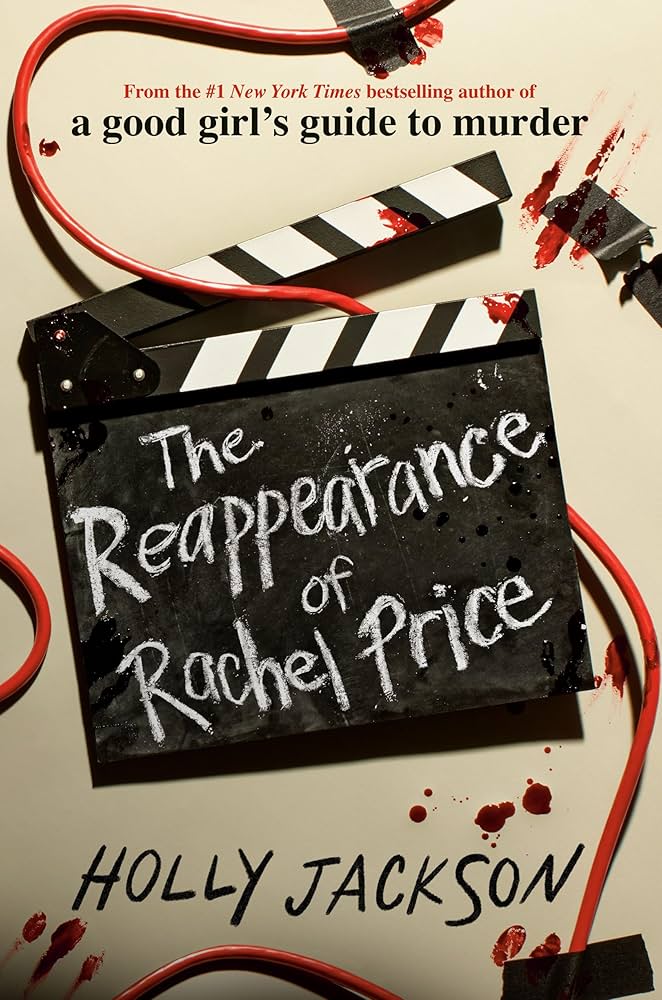
Imagine filming a documentary about your mom who passed away 17 years ago only to have her reappear halfway through. I would not have a dignified reaction to that.
This book was very real about what actually happens when your family member comes back from thin air. While there is a whole fantasy to fill out, and while you missed them with all your heart and while you had so many things that you felt you never got to say, there’s a struggle with having them fit back in, because life moves on and you eventually build around the void they left.
The Reappearance of Rachel Price highlights the potency in the small struggles of building trust again, not understanding the complexity of your feelings, doing your own detective work because the math isn’t mathing .… It’s a found family trope with your actual family and as a classic with Holly Black’s work, there is a neck snapping plot twist, the lightest, most refreshing dash of romance, and a bone chilling end.
The book is easy enough to follow because it happens in a laid back setting, just following the lives of the characters and gives us insight to how they’re feeling at the time and the depths they’re willing to go to for their desires. It also uncovers some depravities in the family and sheds light on the power dynamics involved in a family that has something to hide.
It’s also packed with lots of tense moments and what happens behind closed doors in a dysfunctional family that is struggling to communicate and blend back together after having suffered this seemingly great loss.
On the outside, they’re having their biggest wish come true and the time of their lives but on the inside, everyone is falling apart because it wasn’t what they thought it would be at all and dark stuff is coming up to the surface. There are so many questions to be answered and you start to question everything.
I mean, this woman was gone for your entire lifetime, presumed dead, and all you’ve heard about her is through stories and seen her through videos, only to have her pop up at your front door and claim to have been alive the whole time? She’s not just a figment of your imagination anymore, she’s real and nothing like what you thought you remembered. There are understandably so many emotions to sort through.
And imagine, through all this, Holly Black STILL was able to write some secret detective work in the background and lay the groundwork for shock after shock as you read on.
In as much as it’s supposed to be a story about settling back into the wish you had and the hopes you held on to, actually coming face to face with “if my mom came back I would hold her forever” is hard, and this book explores those complexities beautifully.
Runner Up: BUTCHER AND BLACKBIRD – BRYNNE WEAVER
BEST ALBUM
GNX - KENDRICK LAMAR

2024, the year we found out two legends cannot co-exist (and that one might like to diddle kids).
To cap off what has been an amazing comeback year for Kendrick Lamar, the album GNX had it all; 12 Songs and 44 minutes of unfiltered lyricism, head bops, Crip walks, and of course that one song that had me screaming Mustard at the top of my lungs for days on end.
It is the perfect ending to an incredible chapter for Rapheads and the Rap Messiah. My favourite song off the album is undoubtedly TV Off, closely followed by Squabble Up, but each song has its merits.
Of course, the Album isn’t perfect, especially if you’re a Drake Fan, or not big on Rap music. Some songs can be a little boring on repeated listening and I wouldn’t rank this as Kendrick’s best-ever album, but it is a really good addition to an amazing Discography
Runner Up: TORTURED POETS DEPARTMENT – TAYLOR SWIFT
BEST VIDEO GAME
BALATRO
Some may see this title pop up, look at the header image and think, surely, not a card game? Dear reader, I assure you, Balatro is nothing more than a card, but it is also so much more. Created by solo independent developer LocalThunk. Balatro is best described as an arcade spin on Poker. The twist is various Joker cards allow the player to bend and twist the rules in their favour. The presentation, music and frenetic nature of the rounds is what kept me hooked and quite frankly addicted to this game. By the time I was rolling credits, I had sunk close to 50 plus hours of the game and I had to literally uninstall to stop myself from playing this on my second screen at work. Balatro is easy to learn and easy to get hooked on, it’s also the most fun I’ve had on a game in 2024. That is why it is 2024’s Nerd|Otaku’s Best Video Game.
Runner Up: MARVEL RIVALS
BEST ANIME
FREIREN: BEYOND JOURNEY'S END

Yes, for the millionth time, FRIEREN IS THAT GOOD.
“Is art dead?”. No, she’s an elf who’s lived over 1,000 years but still oversleeps every day. We live in a world where popularity is often prioritized over substance in production, and that leaves us with a decline in quality across the board. Just look at the isekai genre – 21 titles were released in the year of our lord 2021 alone!
Frieren tells a story that focuses on different people with different pasts and paths and the many ways they converge. It plays with character tropes we’re used to then it throws a curveball. The show is incredibly intentional in its message and rich in detail, I’m still discovering new things on my fourth rewatch.
Frieren is full of detail, but it doesn’t hold your hand. It allows you to enjoy the journey regardless. Plot-defining events may happen without any “yellow paint” to point you towards explanations. Depth and subtlety are Frieren’s weapons of choice. The story connects you to nature, magic, food, and other aspects of what it means to be human. The animation is gorgeous, the cinematography is breathtaking, and the Slavic music ties everything together with a bow. The pacing is brilliant, taking the time to make you care about every character as if they were real people.
Over a year ago, Frieren charted number one on MyAnimeList’s best anime list, replacing the long-standing champion, Fullmetal Alchemist: Brotherhood. By that metric, it’s considered the best anime of all time. That’s because Frieren doesn’t try to be popular; it simply exists out of passion, and that shows in its production.
The hypercommercialization of art has led to art being tailored to you, which isn’t its natural state. I’d go as far as saying we should normalize ingesting art that challenges us because nothing good comes from overindulging only in what we agree with or desire. In Frieren’s words, “Mages who only know how to fight are horrid at the softer things.”
Frieren focuses on the parts of stories commonly overlooked and ignored. When digesting media, and even in life, it’s important to remember that there’s still a lot of life to live “Beyond Journey’s End.”
Frieren is everything we love about anime in one package. Frieren won’t give you bright flashy colours, or tropy comedy; it’s unapologetically unorthodox. The writing is sincere, and the visual storytelling rewards you for watching attentively. It’s everything One Piece is, minus the length and flaws brought about by trying to appeal to the masses. Frieren has cracked the code. It may well be the best anime series ever made.
Runner Up: KONOSUBA S3
That’s our show folks!
After seeing this list, I’m sure you can understand why it was no easy feat agreeing on it. There were many strong contenders in each category, but few made the cut because, unfortunately, there can only be one winner! We hope you enjoyed this article and spotted a few of your favorites! Feel free to interact with us on any of our social media platforms to give us your feedback on our rankings! We would love to hear from you.
Special thanks to our writers; Khoumie Mwashingwele, Tamani Banda, Choolwe Himayumbula, Dennis Banda, Robert Chipeta, and Loniya Mubanga for their contributions to this article! We hope to review and rank more pieces of media next year!
Read More Of Our Stuff
The Rise and Fall of Gameloft
The story of Gameloft, once a titan in the mobile gaming industry, is a fascinating reflection of the broader rise and fall—and subsequent resurgence—of mobile gaming as a whole.
2025, The Year The Average Gamer Upgrades
With Nvidia entering their 4th generation of ray tracing cards, and gamedev companies shoving excessively demanding requirements down our throats, is it time to finally get with the program and conform?
Ten Years of The Video Game Awards
The medium of film or motion pictures has existed for just over 100 years now. 50 years in, they had already established a canon, and a set of values or expectations that creators and the audience had become accustomed to. A substantial contributing factor to the established canon of film was the implementation of the Academy of Motion Picture Arts and Sciences Awards, also known as the Oscars.
The 20/24 Experience: LsCon Edition 13 Dec 2024, 6:49 pm
LSCON 2024 RECAP

It’s been almost two months since LsCon, and I’m still reeling from what was possibly the biggest nerd event I have been to. With an attendance of over 600 people, this year’s Lusaka Comic Convention was not only one of the biggest conventions that Nerd|Otaku has had but also the most diverse (in my opinion). Having attended the last three LsCons, I can attest to the massive growth and changes in the event’s organisation.
For obvious reasons, my favourite part of the convention was the cosplay parade (I’m a cosplayer), but we’ll get to that later. In the meantime, look at these cosplays!
LOOK AT THE MATERIAL!
There are a few things I would like to mention that stood out to me throughout the entire convention. I also had the opportunity to talk to different people who attended the event and asked them their opinions! Unfortunately, I arrived fashionably late to the scene, so there were quite several things I missed out on. But of the few things I had the privilege to witness and experience, these are some of my thoughts on them.
The Scenery!🌸
Let’s kick it off with the overall aesthetics of the venue. It was creative and simple, yet flattering to look at and be in. The first thing you would notice upon your arrival was the huge Hange and Gojo cutouts outside. These were my favorite. They let you know where you were and what kind of people were around – Otakus of course! And once you stepped inside, you were greeted by smaller versions of the same cutouts! It was like being transported into an anime for a split second! The choice of characters used for the cutouts was highly appreciated; given the current status of said characters.
Food Vendors!🍴
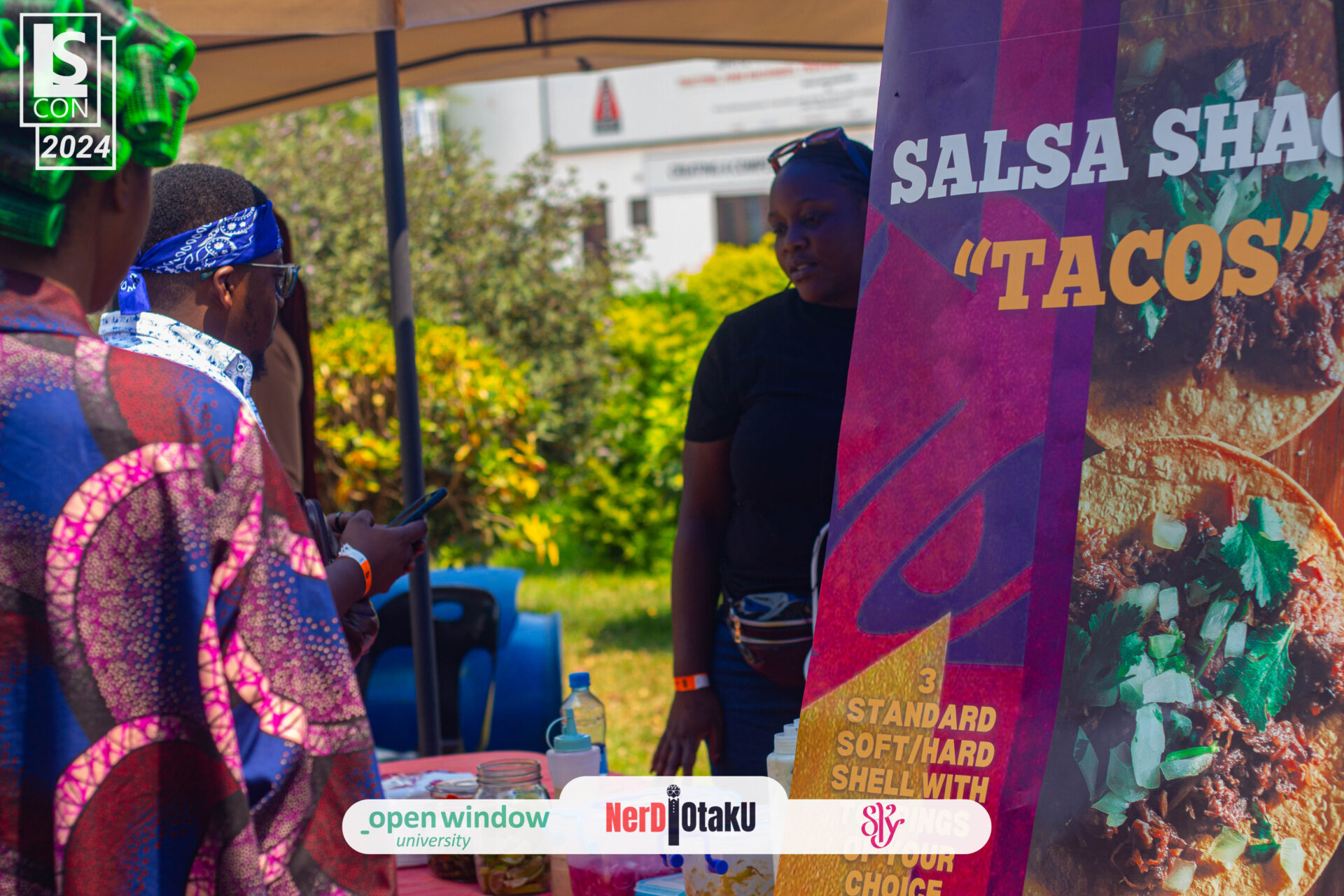
What stood out the most, though, was the presence of food vendors! Nourishment being readily available on-site was a win for Nerd|Otaku! There was a variety of food and drinks being sold by different vendors, such as fries, tacos, cakes, smoothies, cotton candy, and many more. I caught up with an attendee who had a chance to purchase food from one of the vendors. Here is what she had to say, “Before the event, I loved the idea! It made sense to have the convenience of food right there at the event without ordering from outside places. But when the event arrived, I could not even afford it! I think, if this is why they compromised on the venue, then it was not worth it. It’s a great concept, overall, but I can do without it!”
To my knowledge, Nerd|Otaku had no control over the pricing of food at the event, but this could be something that can be taken under advisement for future events. The food vendors being present at the events is a very good idea, but the affordability of the food is a key factor in making the experience more pleasurable. Otherwise, it negates the whole purpose of having food vendors on site.
Gaming!🎮
One other area I appreciated was the gaming section. The person in charge of it that day and everything they were doing there was working; I could not get through the crowd of people waiting in line to play games. I had a chat with him and this is what he had to say, “There were a lot of games and screens attendees could pick from, and several multiplayer games which allowed a little competition with peers when brought to a station. We didn’t have a collection of old-gen consoles but they were replaced with emulators on PCs, which sufficed, but eliminated the nostalgia effect a PS2 or Xbox360 controller gave. But overall, I had a good time watching everyone play their hearts out.”
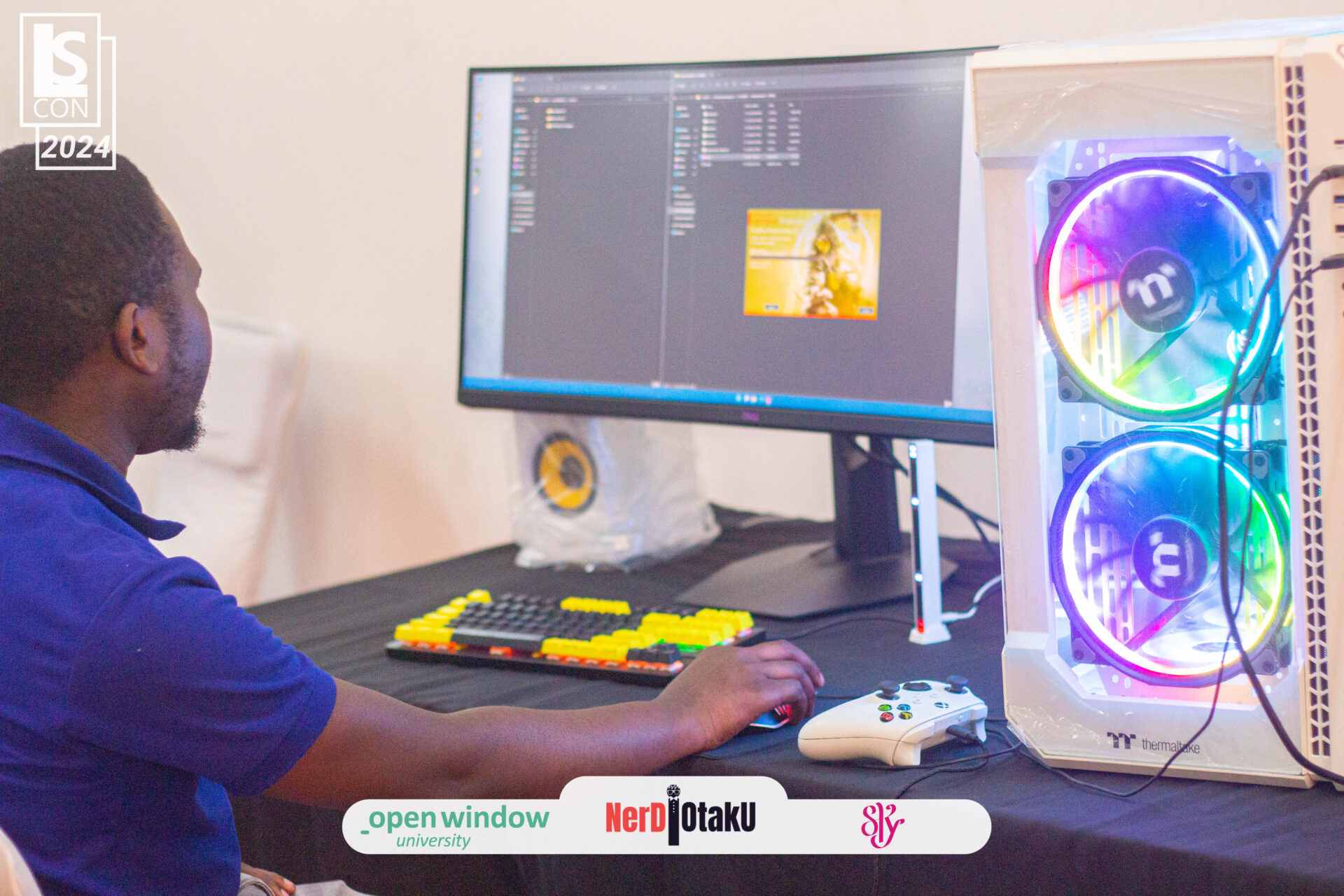
The interesting part is that this year, the gamers did not even have a cash prize waiting for them at the end of all of that hassle and bustle! They were simply playing for the love of the game, literally! And bragging rights, of course; I was in awe! That goes to show just how necessary and important these events are for passionate people of many interests.
Musical Performances!🎹
The musical performances were another facet I saw a major overhaul. The artists that were present to entertain the crowd were nothing short of amazing! I missed some performances, but the ones I managed to catch were simply amazing! They showed up and showed out. One artist in particular impressed me with their performance because they brought backup dancers and gave a concert level performance. That was awesome!

Cosplay!💅
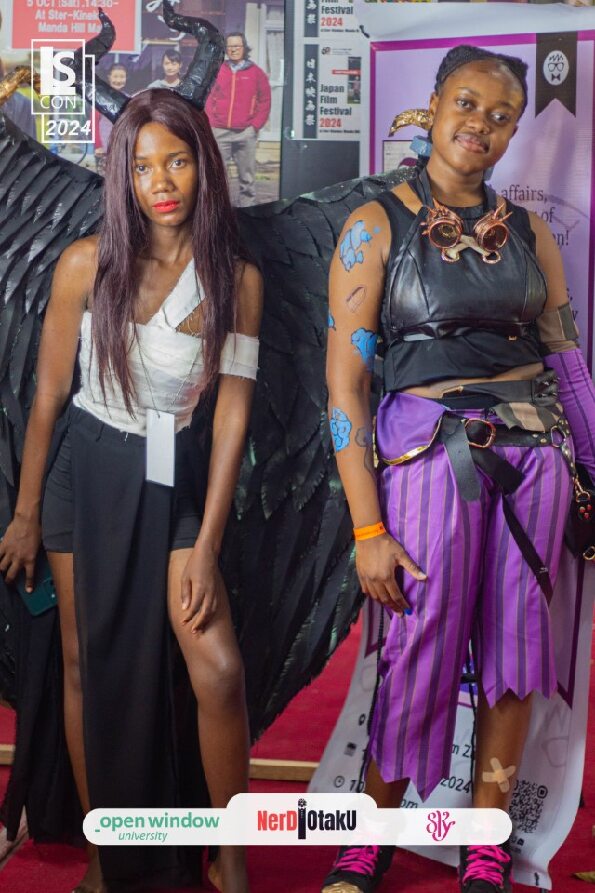
Jinx (cosplayed by @luluvamp), came to paint the town blue with her amazing handcrafted prop.
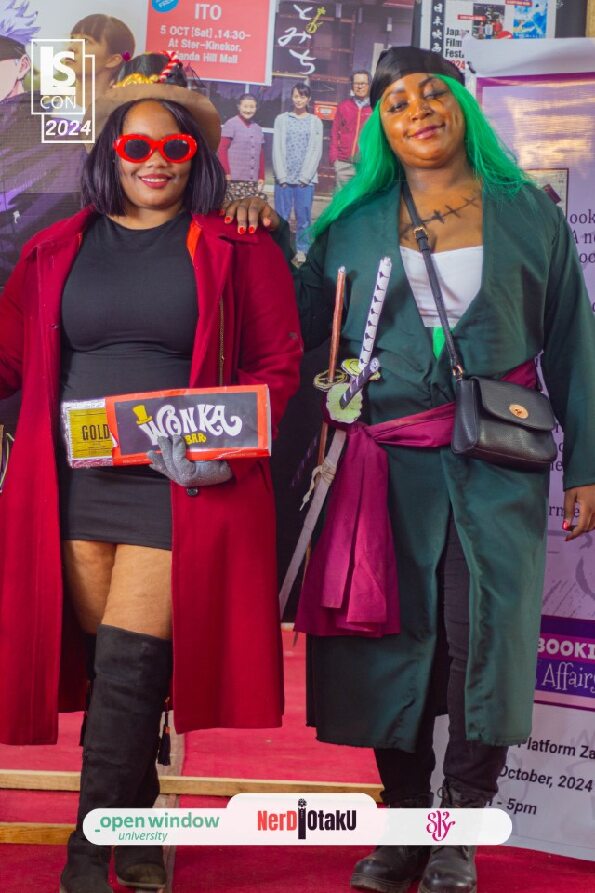
Willy Wonka (cosplayed by @hellenwith_2ls), giving us cavities with her chocolates.
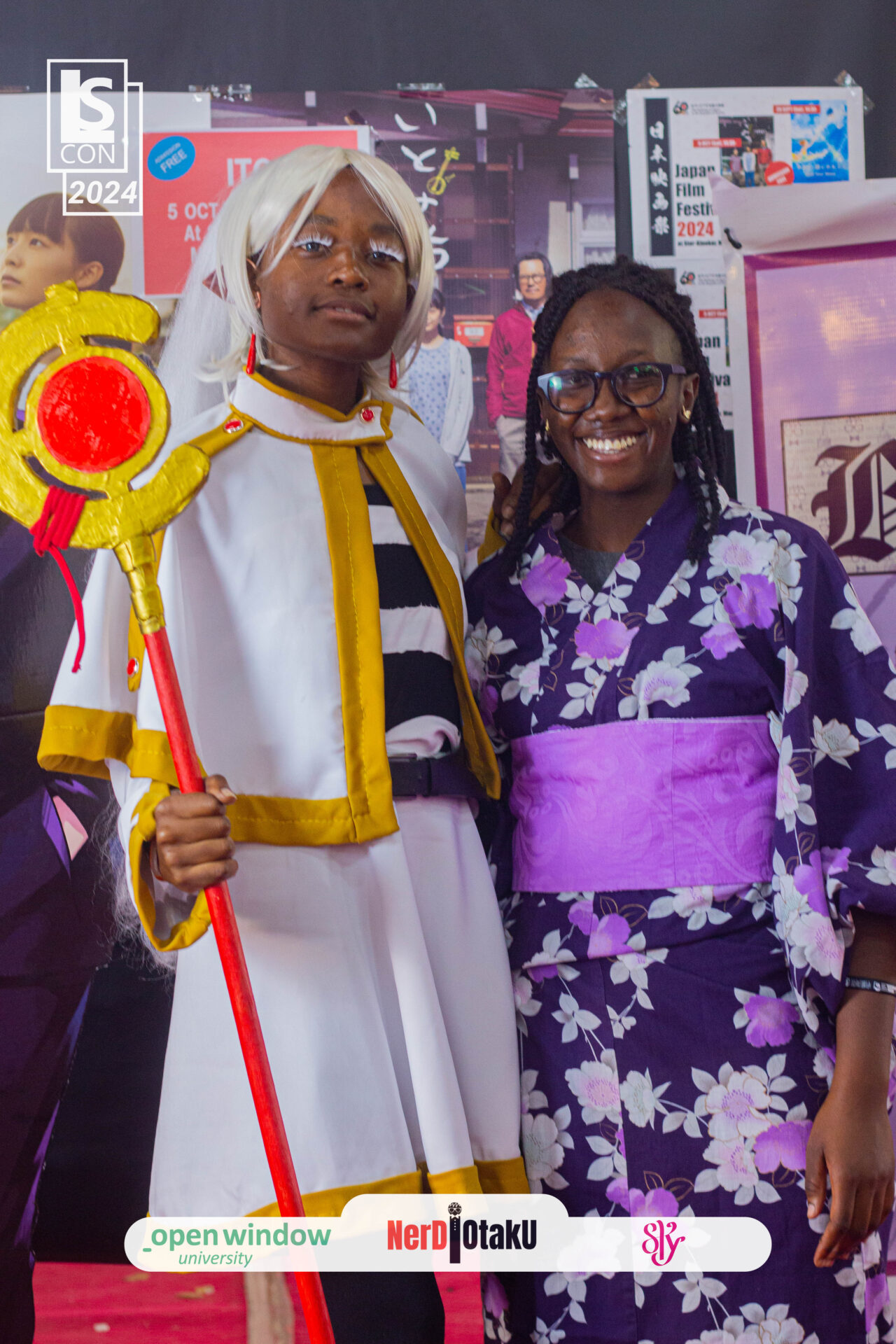
We also had a Freiren (cosplayed by @dawntsepo); she was one of my favorites!
The cosplayers did not come to play, but rather, to slay; that sounds like a corny line but to be fair, someone made a giant axe! I cannot manage to name all the cosplayers because there were many amazing cosplays! But a few caught my curious eyes with their innovation and creativity that I just have to give a shout out!
The cosplay bar in Zambia has been raised, and people are getting bolder and more daring at emulating their favorite characters. I would not be surprised if somebody shows up as a robot next year! Foreshadowing? Perhaps. You need to attend next year’s to find out! Here are some more cosplays that made an impression on me at the convention.
Geek market and artists galore!🤓🎨


LsCon 2024 was home for all things anime, gaming, comic, and movie merch! With over 30 vendors and artists selling various merchandise and original artwork, it was a nerd’s paradise! Notable mention for me was Time Machine Zambia who came through with their comic books, giving us nostalgia with archie comics.
Organisation!🏢
Other notable organizations at Lscon included; the Japanese embassy, Sky Girls Zed, Princetech, and Open Window University. The National Arts Council, represented by Mr Maanka Chipindi, and the Ministry of Sports and Arts, represented by Mr Maswaya, also came through.
The Japanese Embassy is a regular supporter and attendant of most Nerd|Otaku events. They bring a snippet of the Japanese culture to us and we get to learn more about it through Calligraphy, Origami, and Yukata.
Panels!🎥
Due to time constraints, scheduling conflicts, and general unforeseen circumstances, not all the panels lined up to take place at LsCon happened. The only panel we had at Lscon was the filmmakers panel, depicted below, which went great! However, this challenge faced on that day introduced a new event on the Nerd|Otaku calendar called, Behind the Panel. This will be a new event hosted specifically to shed light on different industries, and industry professionals such as filmmakers, actors, and many more. Look out for this event beginning next year!

Overall, I enjoyed this year’s Lscon because it felt like a whole new event with new interesting features. I can’t wait to see what Nerd|Otaku has in store for us next year! I hear it’s going to be amazing! See you next year!
Read More Of Our Stuff
The Rise and Fall of Gameloft
The story of Gameloft, once a titan in the mobile gaming industry, is a fascinating reflection of the broader rise and fall—and subsequent resurgence—of mobile gaming as a whole.
2025, The Year The Average Gamer Upgrades
With Nvidia entering their 4th generation of ray tracing cards, and gamedev companies shoving excessively demanding requirements down our throats, is it time to finally get with the program and conform?
Ten Years of The Video Game Awards
The medium of film or motion pictures has existed for just over 100 years now. 50 years in, they had already established a canon, and a set of values or expectations that creators and the audience had become accustomed to. A substantial contributing factor to the established canon of film was the implementation of the Academy of Motion Picture Arts and Sciences Awards, also known as the Oscars.
Borderlands Movie Review 30 Nov 2024, 5:12 pm
BORDERLANDS WASN’T RELEASED BY LIONSGATE, IT ESCAPED!
Ever wondered what happens when you get one of the most popular game franchises in the industry known for being unhinged and adult-oriented, throw it at a director who’s never interacted with the source material, and make it PG-13? You somehow outdo Madame Web as the most disappointing movie of 2024, producing a soulless shell that had a $115 million budget, but grossed only $30 million worldwide, and debuted with a 0% tomato rating on that one rating site.
We’re currently in a stage where Hollywood produces more high-cost low-quality movies than it does blockbusters. I blame it on companies making dumb financial decisions and avoiding artistic ones. The thing is, MOVIES ARE ART, so you won’t get very far if all you’re trying to do is turn a profit. There were plans to start a Borderlands cinematic universe and honestly, that’s free money. But those plans are dead now.
I intend to put down all the evidence, and figure out how exactly such a relatively well-written game franchise could possibly have an adaptation so bad. Not to say viewers haven’t seen this happen before (remember terrible live-action anime titles like Dragon Ball, and Netflix’s Death Note).
Adaptations can be good though. We know they can. Fallout, and The Last of Us (TLOU) are examples of near-perfect adaptations. Speaking of TLOU, one of the show’s writers, Craig Mazin, worked on Borderlands but has since hidden his real name from the project and frankly, I would too.
Adaptations can be good though. We know they can. Fallout, and The Last of Us (TLOU) are examples of near-perfect adaptations. Speaking of TLOU, one of the show’s writers, Craig Mazin, worked on Borderlands but has since hidden his real name from the project and frankly, I would too.
This “movie” is living proof that you could have great visuals, an expensive cast, “comedy”, gimmicks and easter eggs for fans of the original content, and still make a bad movie. Good movies have good writing, execution, and a general respect for viewers. It is non-negotiable. Thing is, Borderlands (the videogame), actually has really good writing. All the tools to succeed were right there yet the movie failed so spectacularly one would think it was on purpose. Mikey Neumann and the other original Borderlands writers deserve better.
The Director
Eli Roth, the director who put it all together, was a questionable choice for the production considering this was his first attempt at handling such a complex adaptation, and his public disinterest in the narrative that lives at the core of Borderlands.
He is known for his role as Donny “The Bear Jew” Donowitz in Quentin Tarantino’s Inglourious Basterds (2009). Roth typically directs a lot of “splatter” horror with movies like Cabin Fever, and Hostel. His first movie away from torture horror was 2018’s, The House with a Clock in Its Walls, where he worked with Jack Black and Cate Blanchett, and decided to ask them to work on Borderlands. The movie has received mostly positive reviews from critics who largely praised the cast, but said the film did not fully live up to its potential. I think history repeated itself.
Eli Roth happens to also be a psychoanalyst, which is funny because Borderlands has many characters with interesting psychology, and the games dive into their minds (sometimes literally) to explain why they are the way they are. Yet somehow, none of this even vaguely made it into the production.

An awful trend common among bad sequels and adaptations is the director and cast avoiding the source material or at the very least, not having any interest in the experience that brought fans to the story in the first place. I know Eli Roth grew up with games on the Atari, but I’m not sure about his experience with the Borderlands games, because I doubt a fan of the game would be comfortable with how watered down the movie feels. His intentions to stray from the established world were pretty honest from the start, and I appreciate that considering some Star Wars productions, and Netflix’s Avatar: The last Airbender basically lied to audiences in order to get fans of the source to stay invested.
He wanted to make a fun sci-fi adventure movie with explosions and witty banter to entertain people of all ages, just funny cinema. As a result, the movie is constantly telling jokes that no one’s laughing at and playing with cliché tropes in the most disappointing ways. It doesn’t take itself seriously so the director suggests you “shut your brain off” before watching. I can’t speak for everyone but I feel insulted when that’s a requirement to enjoy the media. I don’t have to shut my brain off to enjoy SpongeBob SquarePants.
In interviews he regularly mentioned wanting to make the movie its own thing that combines the likes of Star Wars, Mad Max, Escape from New York and the Fifth Element. I do see the similarities and I think a lot of them were good calls but he somehow got lost in trying to turn it into “its own thing” that it ironically ended up with no identity. Looks to me like he made his own movie with his own vision and slapped the Borderlands branding on top which is by definition false advertising. On top of that I don’t think it does a very good job even without the Borderlands impersonation. This brings us to…
The Story
None of the characters actually have chemistry (or relationships for that matter) outside tropes that serve the plot. The most emotional scene is Tina crying, but there is zero build up and a general lack of connection with the audience. It’s narratively uninteresting; the world is difficult to understand because they are introduced way too much and way too fast. They had an exposition-filled prologue that told the audience nothing. Why is Lilith a bounty hunter? Why does Atlas want the vault when no one knows what’s in the vault? Why does the team even do what they do? Why is anything the way it is? The only source is “Trust me bro”.
I may sound like just another extreme fan butt-hurt about creative liberties, but I assure you this movie is bad; not so bad that it’s genius. Just objectively bad. The characters and dialogue are the furthest from their source material they could have ever been. It’s as if you got random actors in cosplay who don’t know their characters. This is why a Henry Cavill is needed on set. Making videogame adaptations is difficult and risky, but Borderlands already does half the job for you. When you handle an existing IP, the fanbase is incredibly easy to please; just entertain (not just pander to) the fans, and you’ll get people to like both the movie and the games. There is a guaranteed viewership in the fans and they’ll serve as free advertising. Apart from the many creative liberties (omissions and pointless changes) from the source material the movie still fundamentally fails to tell a story. This is not about how they avoided the source material it’s about how they failed to make a decent movie even with a head start some people can only dream of.
Borderlands the Movie is a “washed-up chosen one meets dysfunctional ragtag family forced to save the day” story much like the MCU’s Guardians of the Galaxy minus the charm and logical writing. But we, the audience don’t and cannot care because we have been given no reason to. Lilith is played by Cate Blanchett, who has won two Academy Awards. She acts as an older badass who will do many bad things for the right price, at least I think she was acting. Every single character is constantly expressing how they don’t want to be here, and it’s looking like someone in the writing room is trying to tell us something.
The games have a fun setting because most of the character archetypes don’t belong in a space spaghetti western but are written to belong there anyway. Making the main character a lone wolf gunslinging noir detective may not have been the best choice.
In production the movie suffered from many rewrites, and now most of the movie feels like its screenwriting was done by a child. *In a child’s voice* “th-there was a prison in space, a-and then, this girl was being taken away, a-a-and then, a short man rescued her and fought all the bad guys, and then this big psych jumped out of a glass prison cell (who put a psycho in a glass cell?) and beat up all the men with guns and they escaped….”
There seems to be an over reliance on fans recognizing the characters and just using existing info to fill in gaps, but why would you stray from the plot so much and take “creative liberties” (if you can call them that), if you WANT existing fans to watch it and apply existing knowledge. There is more respect for source material in literally every fanfic ever created. The half-baked introductions boil down to audiences recognizing costumes, and name drops in conversions. Some characters like Tannis are so distant from their source material that without their outfit and introduction, you’d never know who they are supposed to be.
Personally, I don’t think anyone likes toilet humour after the age of four, but as if Aquaman 2 wasn’t enough, Borderlands thought we would laugh at urine and faecal matter on actors faces. Masterful comedy I tell you.
I haven’t even gone into detail about the dialogue but they unironically had jokes like: “Oh yeah you and what army?”, “The one right behind me”, “Uhm guys, you’re gonna want to see this” “Ahh time to go insane”, and “He’s right behind me isn’t he?”. $120 million was spent on this? The Psycho lines were pretty well written but that’s all I can complement, I fear.
I also have to add that in order to balance out how mindlessly childish the rest of the movie is, Roland says a swear word every few minutes. Tiny swears sometimes too, but she cusses way more elegantly in the video games. It all ends up being very out of place.
Then there’s the scene where Lilith first finds Tina; easily the worst part of the whole movie. They are finally in a closed space with actual tension, and the cracks start to show. The movie does a lot of hiding behind explosions and fancy cars, and fails in situations where execution and storytelling is actually important. Their dialogue was rigid and unnatural, Tina was very out of character assuming we consider her to be based off the game character. Otherwise, movie Tina had little to no personality outside being an immature self-aware McGuffin who supposedly likes explosives, but throws them like she’s never played catch before, much less with C4; checks out with her daddy issues, I guess.
The big reveal at the end of the movie is **drumroll** Lilith is the Fire Hawk. What is a Fire Hawk you ask? No one can give a straight answer so we’ll never truly know. The third act big reveal with zero build up is a regurgitated combination of Video Game Lilith’s Bounty Hunter nickname, and her Siren abilities, both of which were revealed in the very first chunk of the first 2 games. So, it’s hardly a reveal for anyone who’s played the game for 5 seconds, and means almost nothing to first-timers. The final act is much of “It’s so over, we are so back”.
Borderlands: The Hit Video Game
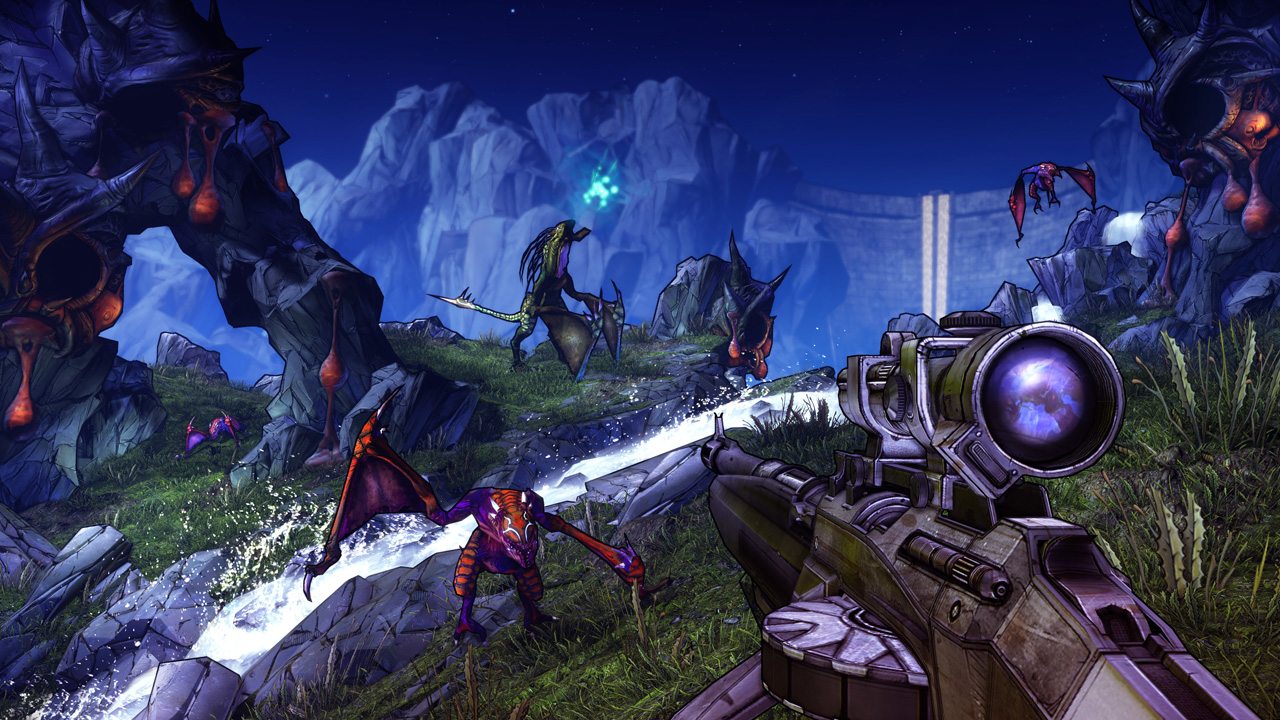
Players know the game for its signature cartoonish cel-shader look, and its very unique crude humour and procedurally generated weapons.
Borderlands is a fast-paced action role-playing first-person looter shooter video game franchise set in a sci-fi Wild West-inspired world. A mouthful I know but it brings so much to the table it’s quite addictive. Players know the game for its signature cartoonish cel-shader look, and its very unique crude humour and procedurally generated weapons.
Borderlands is one of the bloodiest games out there. The game is mature, hilariously so. Violence, suicide, and other triggers are the daily talk. Many characters get flirty; Tannis in particular has a healthy obsession with Maya, and flirts with the player’s character regardless of which you pick.
Since 2009 when the first game released, we have gotten five main titles, and a few spin offs, one of which being “Tales from the Borderlands” (2014), an episodic, narrative-driven adventure game developed by Telltale Games. Unlike the main series’ first-person shooter mechanics, this game focuses on storytelling. Saying this franchise can’t have good storytelling would be lying. I’d argue anyone who’s actually played the games easily sees it sprouting great stories naturally. The movie brushes off the game’s storytelling, but somehow also under-delivers on the guns.
Borderlands is about Guns…right?
The movie’s guns have no quirks of their respective brands, no Maliwan guns with elemental effects, Tediore with exploding reloads, or VLADOF’s high bullet count. The gun variety was ignored and that took out the looting from the looter shooter. Lilith’s weapon of choice is the Infinity gun by VLADOF that she dual-wields with many other pistols (that’s a Gunzerker skill and Lilith is a Siren but okay). At some point she reloads both her guns leading me to think she reloaded an infinity gun. Also, if it is, she reloads it like a Jacob’s gun when it’s a VLADOF.
A lot of Lilith’s fight-and-reload choreography in the gunfights is nice and fluid. Despite this, there’s like 4 major gun fights, and they are so similar and generic. The gun fights are mostly inconsequential, abusing the Imperial Stormtrooper Marksmanship Academy trope. Roland’s sacrifice was unnecessary and pointless considering it was immediately revealed that he survived. You can’t take anything seriously because there aren’t any resolutions. The villain will lose. The heroes will win. It happens time and time again so, the movie had no climax.
Production
Director Eli Roth said the movie wasn’t going to be “too slavish”, he continued, “I didn’t just want to film the game. We wanted to tell a great story on its own, but of course it’s loaded with Easter eggs for the fans… “. I don’t think anyone knows who the the target audience of the Borderlands movie is.

BAFTA nominated costume designer, Daniel Orlandi, was on costume duty, and he and the team did one hell of a job. Gearbox Games CEO, Randy Pitchford, was present during production, so it’s very surprising the movie turned out the way it did. The world was brought to life through good costume design, gun design, and in-game brands. Unfortunately, the characters weren’t quite as alive. Borderlands also has a lot of cool tech, so it’s a shame they left out the Catch-a-ride system, and the Echonet barely made an appearance.
Many parts of the production feel like they were disassembled and put together many times. And there’s a lot of questionable resource management. There’s a scene they used in the trailer and movie where you can see the arm and face of a production assistant helping to open the manhole cover. So much of the movie has a lot of effort being put in some places (sometimes too much), and way too little put where it matters i.e., the random CGI jumps weren’t worth the cost at all.
One of the movie’s worst decisions was making a PG-13 movie based on a game rated M for Mature. That was entirely a financial decision, and it fell flat on its face. Did they think their “target audience” was old enough to play the M-rated game, but not old enough to see an R-rated film?
I don’t understand why Hollywood thinks getting an IP with an existing fanbase with preferences will just enjoy you taking characters and worlds, and just telling a subpar attempt at some third option. If you want to film the game but change a few things, do it, and stay very loyal to what made it appealing. That’s what the Last of Us did. If you like the game’s world, and want to do your own thing, play into the source’s sandbox like Studio Trigger’s Cyberpunk: Edgerunners. I think the latter would have worked best for the Borderlands Movie considering how much effort Roth put into a practical set (sacrificing the game’s signature cel shaded look), costumes, and vehicles.
The way I see it, one makes an adaptation of other people’s works by getting favourable elements from the original like things original fans loved, and adding movie magic on top of that. I find it pretty insulting when half the movie’s humour is mostly toilet jokes, and random dramatic explosions and gunshots.
Characters VS Cast
Many characters were left out of the story, mostly because the writers found them difficult to include. So unfortunately, we didn’t get beloved characters like Handsome Jack, Angel, Flesh Stick, or Face MCShooty.
The ensemble main cast collectively has four Primetime Emmy Awards, a Tony Award, 2 Emmy Awards, a Grammy Award, 10 Golden Globe Awards, 5 Academy Awards, 5 BAFTA Awards, 5 Screen Actors Guild Awards, and four British Academy Film Awards.
Save for Marcus and Bobby Lee as Larry, I felt the casting and character portrayal was terrible. An expensive cast isn’t necessarily a good cast. I strongly feel as though little to no effort was made to maintain any of the characters’ identities in the casting. The casting director, Victoria Thomas, previously worked on Madame Web, but that probably doesn’t mean anything right? I jest. This wasn’t her best work, but she’s the BAFTA-winning casting director responsible for The Last of Us so, she probably isn’t the one to blame.
Lilith the Siren…er Firehawk
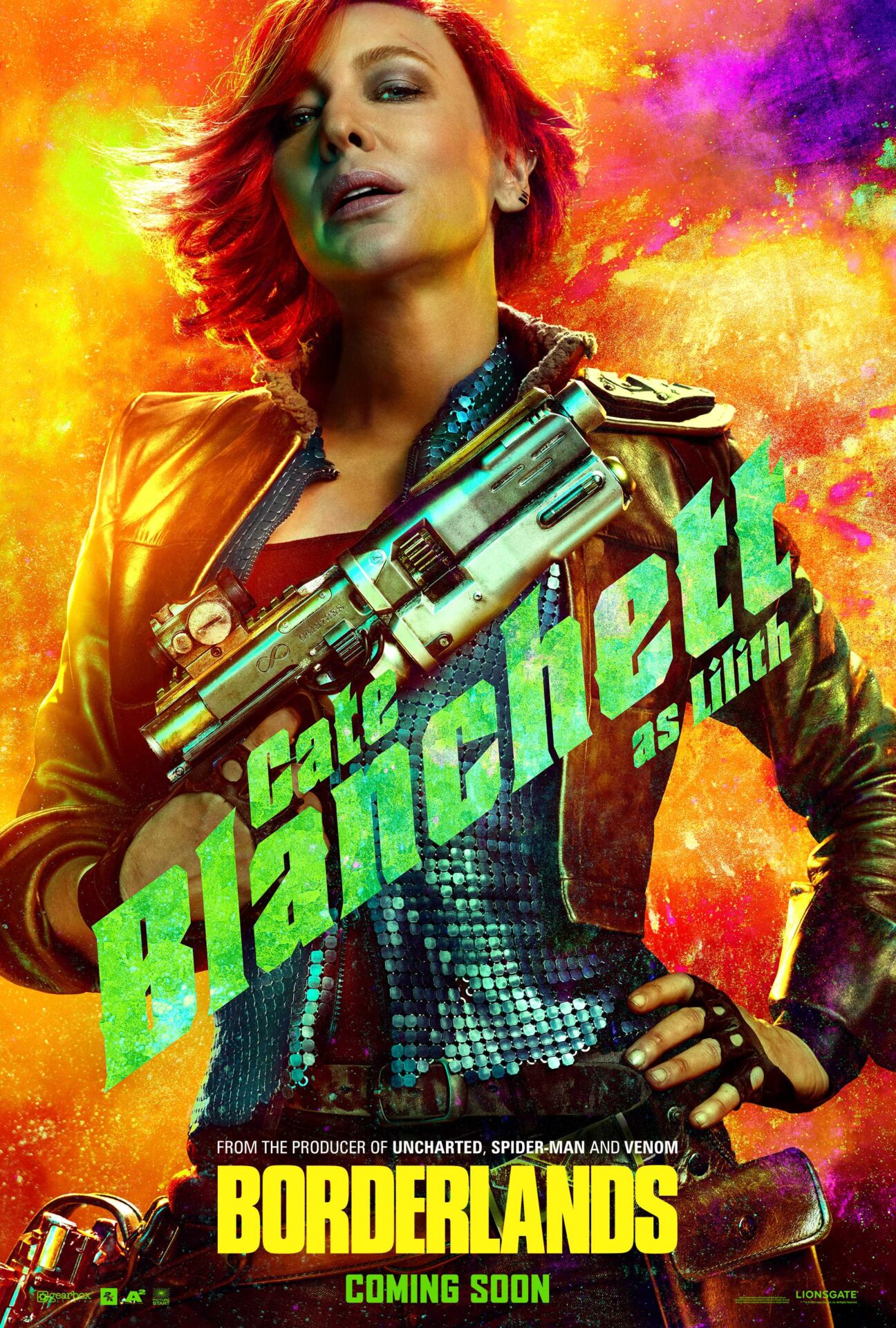
We all like Cate Blanchett, but it’s very difficult taking her seriously as Lilith especially with the tough bounty hunter trope that was just embarrassing to go through.
Game Lilith has always been self-assured, cocky and short tempered, always enjoying everything she does, and having pride in being a Siren. The movie literally took out the fire in her, and made her an old brooding anti-hero (in flesh and spirit) who’s awkwardly edgy and anti-social. Some characters describe her as “Lilith the scumbag”, and “horrendous evil woman” in an attempt to make us see the character that way, but the trope is so overplayed and artificial it feels very out of place.
In the games, Lilith belongs to the Siren class, a select few who have phase abilities like flight and telepathy. Every Siren then has a special unique ability like teleportation and technopathy. Lilith’s abilities in the movie are loosely based on these abilities, but they are executed so strangely it would be a waste of time trying to understand why things happened the way they did outside of “it would look cool”.
According to the videogame manual, Lilith claims her powers come from her crossing the “Hotness Threshold”. “Any woman as good looking as me can do what I do”, which I honestly believe to be canon. Assuming the movie takes place somewhere between Borderlands 1 and 2, Lilith should be between 22 and 27, and living out her prime. Cate Blanchett is almost 30 years older than Lilith was in the original Borderlands game. Now that generally shouldn’t matter, but it was very intentional to make Lilith and Tannis much older women in the movie. I like to believe Tannis was made older because Lilith has mommy issues, but even then, that was poorly looked into. The issue lies in both casting choices and dialogue/script quality.
Roland
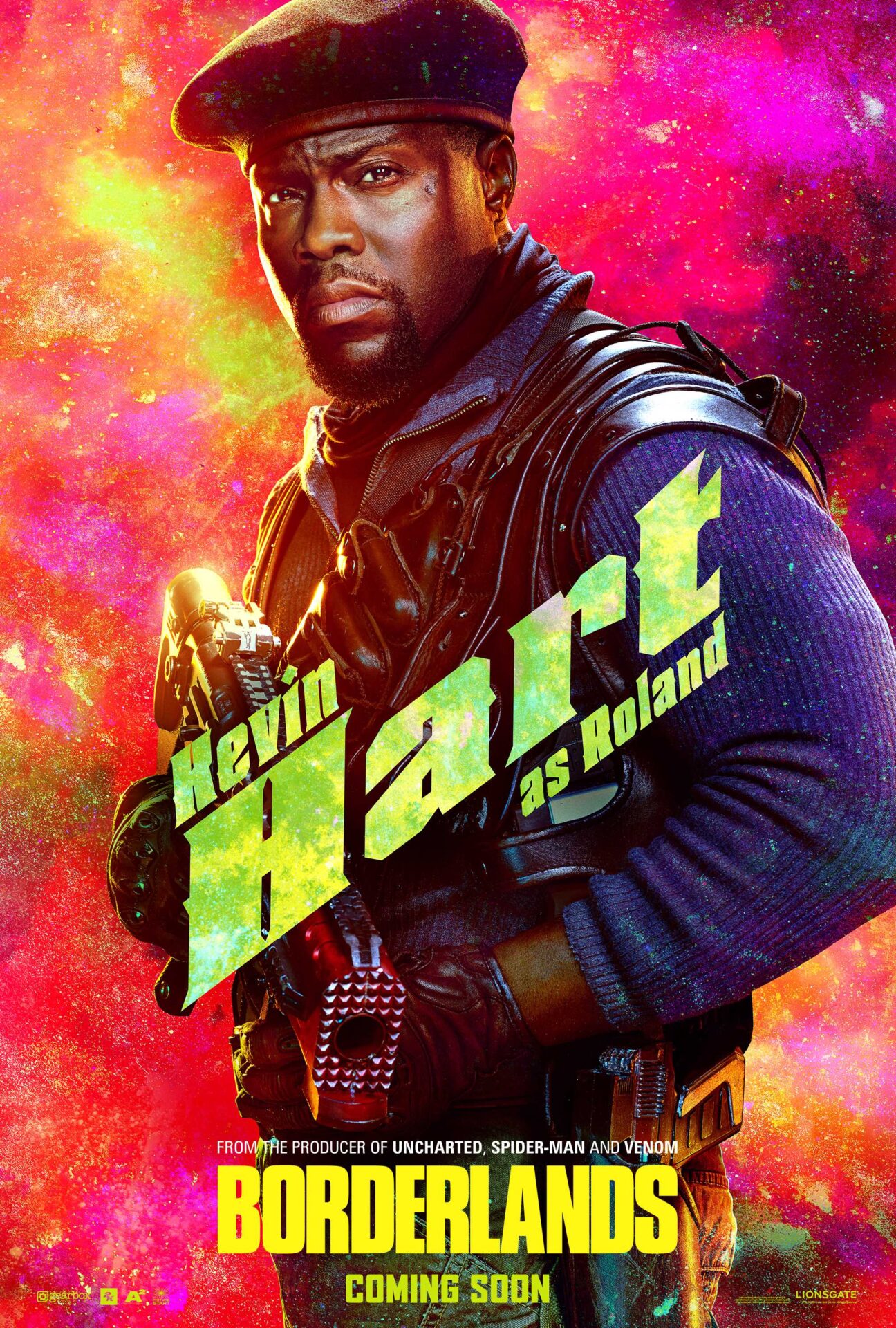
I can summarize movie Roland’s entire character as: he’s short, a good soldier, and had an old fling with gender-bent commander Knox. This is unfortunate for a main character considering how rich his source material is. When I saw Roland’s introduction in the trailer, I was disappointed by how different he was, then I saw the movie, and it became many times worse. He’s such a memorable part of the game that this alone is enough of a reason to walk out the cinema.
Roland was an upbeat wisecrack who spoke in witty one-liners, but the more time he spent in action, the more difficult he found it to express himself. He even ended his relationship with Lilith in order to focus on Hyperion, and the Crimson Raiders. He is a reliable tough-as-steel ally, friend, and father figure to Tiny. In the movie, Kevin Hart is nothing like Roland ignoring the height difference. I find Hart’s self-deprecating humour, and comedy-skit style dialogue to be very distant from Roland who has a stoic demeanour and, you know, actually acts like a trained soldier. His entire character is dumbed down to a selfless hero who would die “because it’s the right thing to do” in his words.
Tiny Tina!
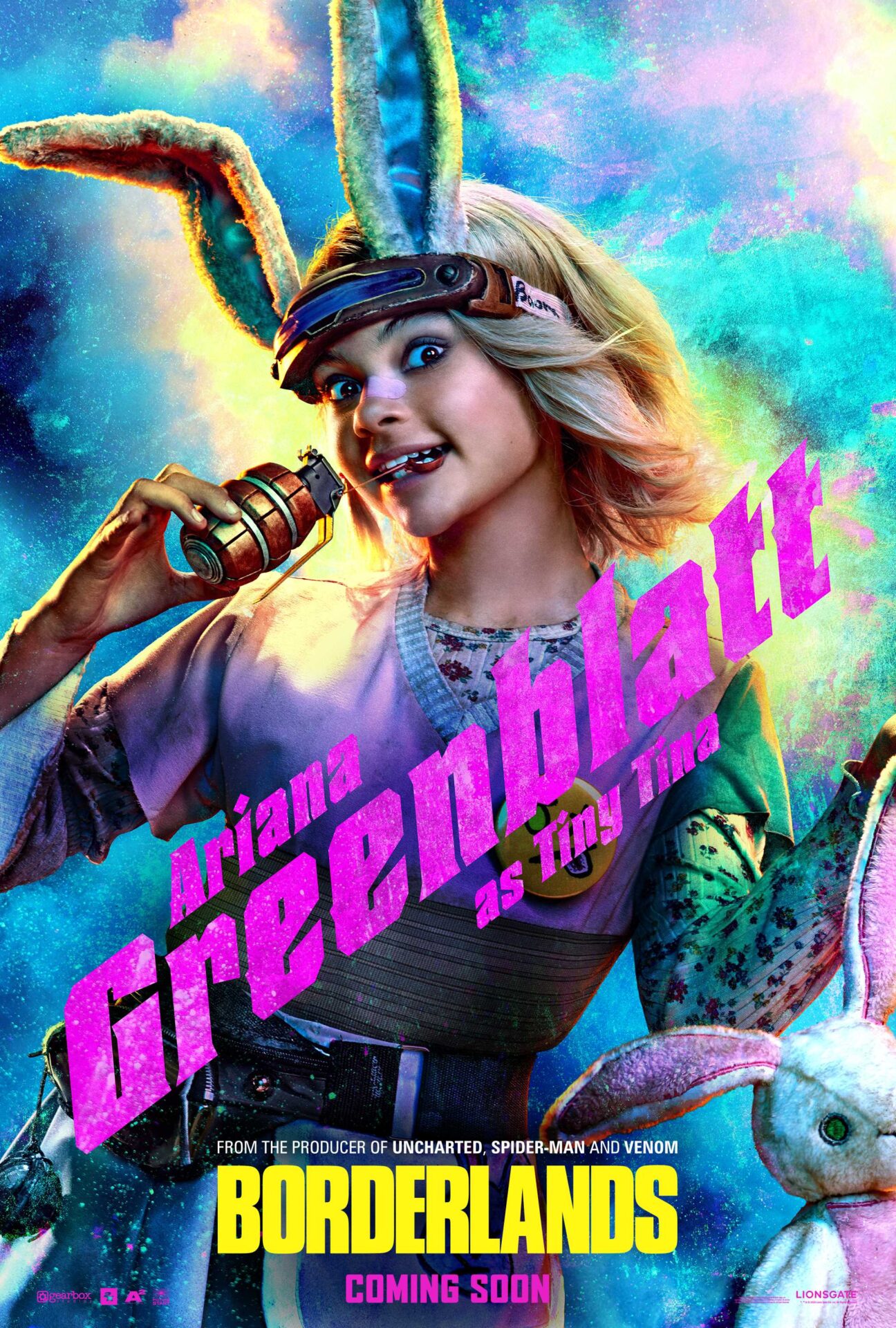
Movie Tina… was cringe. Her line delivery wasn’t quite “Tina”, that can be said about most characters in this movie unfortunately. Tina in-game is actually my favourite character in Borderlands 2, and every single thing that comes out of her mouth in-game deserves to be framed on a wall. Iconic lines like “BURN ALL THE BABIES!!!!!”, and “That’s Mushy Snugglebites’ badonkadonk. She’s my main squeeze. Lady’s got a gut fulla’ dynamite and a booty like POOOW!”. This Tina is hit or miss, with a lot of misses. She can’t even say badonkadonk properly, and this makes me sad. Tina leaving Lilith towards the end doesn’t make sense at all too.
Krieg
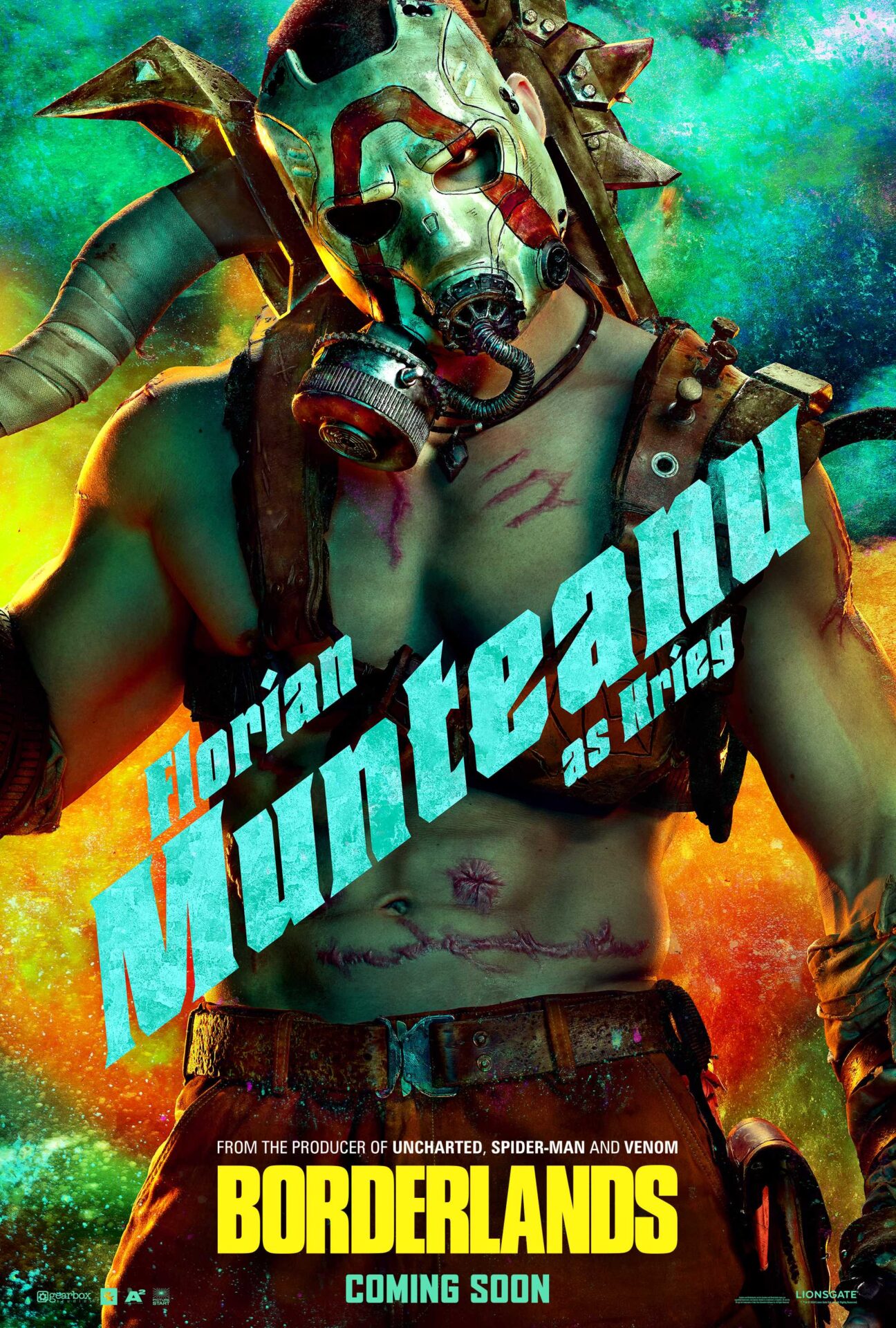
Krieg has the least backstory but in-game he is a comic-relief character with the best lines, and the darkest backstory. Hyperion experimented on him, and his only friend was a rat named Tawanda (I’m not making this up that’s just how deep his story goes). He has 2 personalities, and goes through moral decay as a result of killing people. His personalities are split, and at some point, his sane personality gives up and loses control of his body, and his psycho personality saves him. He has a pact with his psycho persona that he’ll destroy himself if psycho Krieg ever harms an innocent. His relationship with Tiny Tina is fair I guess. He once taught her how to speak psycho (it’s actually quite understandable if you know what to look for). He has a beautiful relationship with Maya the Siren as she’s the only person who understands what he says.
In conclusion, Borderlands serves as a stark reminder that even beloved source material, and a high budget can’t guarantee a successful adaptation. The movie’s fundamental issues arise from its lack of respect for the source material, misguided creative liberties, and a diluted approach to the franchise’s iconic dark humour and chaotic energy. While the film’s production boasted commendable efforts in visuals and casting, its failure can ultimately be attributed to its detachment from the game’s core themes, characters, and humour. It faltered in capturing the essence that made the games so engaging. By opting for shallow spectacle over character-driven storytelling, the movie not only disappoints fans, but also misses the opportunity to resonate with new audiences, rendering it a cautionary example for future adaptations.
Read More Of Our Stuff
The Rise and Fall of Gameloft
The story of Gameloft, once a titan in the mobile gaming industry, is a fascinating reflection of the broader rise and fall—and subsequent resurgence—of mobile gaming as a whole.
2025, The Year The Average Gamer Upgrades
With Nvidia entering their 4th generation of ray tracing cards, and gamedev companies shoving excessively demanding requirements down our throats, is it time to finally get with the program and conform?
Ten Years of The Video Game Awards
The medium of film or motion pictures has existed for just over 100 years now. 50 years in, they had already established a canon, and a set of values or expectations that creators and the audience had become accustomed to. A substantial contributing factor to the established canon of film was the implementation of the Academy of Motion Picture Arts and Sciences Awards, also known as the Oscars.
Rai-commendation – Juuni Taisen: Zodiac War 22 Nov 2024, 3:46 pm
RAI-COMMENDATION: JUUNI TAISEN
Juuni Taisen: Zodiac War, or Wars of the Twelve, is an action filled anime. Its first season has 12 episodes, with each episode highlighting a specific warrior; their goals, skills, and background.
The Juuni Taisen is a battle held every 12 years by the Juuni Taisen organization, bringing together the world’s finest 12 warriors, each representing one of the 12 beasts of the Chinese Zodiac, in a battle to the death. Of course, a battle with some rules and limitations, but still no end until at least 11 bodies drop. Yes. All the contestants could die, and the organizers would just say, “they were too weak.”
This year’s battle takes place in a city that has been evacuated for the specific purpose of letting the warriors fight with no constraints or worries. They are all invited to gather in this city for information on how the battle will be conducted and what the rules are.
First each warrior is given an obsidian-coloured crystal and instructed to ingest it before everything begins. Once they have all consumed their crystals, Duodecuple (the referee), reveals that the crystals are poison, and the war is a game of fetch. In order to win, you must secure the most crystals from your opponents, and the committee doesn’t place any restrictions on how you do so. Just keep in mind that the poison kills an average human within 24hrs so you might want to start collecting crystals quickly.
However, like the humane organizers they are, they have developed a cure to this poison and it will go to the last one standing as a bonus prize. Now let’s meet our warriors.
If you don’t want spoilers, then take my advice, and leave now, because I will spare no detail.


Let’s start with The Boar – Inonoshishi. Sis had me in the beginning. Being introduced as the daughter of the winner of the previous Taizen, and a master killer, I had such hope for her and really expected more. They even gave us a backstory of driving her own sister crazy to ensure her place as the Inonoshishi successor, only for her to be one of the first to fall. More exploration into her character would have been interesting to have.
We can grasp from her backstory that she was skilled in hand-to-hand combat. From the snippets of her on missions, to seeing her train her young sister, she displayed expert proficiency. We are also shown that she was on the soft side when her missions began. It was her father who taught her how to kill without hesitation if she valued her life because mercy is pointless.
Though her technique, Non-reload, would be so OP (Overpowered) on a battlefield, it really didn’t help her out in this war. The fact that the other warriors already had so much information on her due to how famous she was may have not helped her much even if she survived looking at the power levels of some of the other contestants.

The Dog – Dotsuku. For all his talk he was easy to trick and fell so easily for Niwatori’s sweet girl act. In a gathering of warriors do you really think she would have been able to enter this battle after a sheltered upbringing? He underestimated an opponent and paid the price. It’s as simple as that. Not to mention how he gave up so much information for free! Like… really? It was a smart idea to exchange knowledge, but he should have at least found out who she had knowledge on before giving away his own.
Then we add on the fact that he just kept talking and talking even when she tried to interject on some points. Dotsuku was overconfident without knowing the full scope of Niwatori’s powers. The way she kept asking questions and exposed one of her abilities so freely should’ve been the first red flag.

The Chicken – Niwatori. RED FLAG. DO NOT BELIVE THE SWEET GIRL ACT!!!!!!!! Niwa (I got tired of typing Niwatori so this is her nickname now) was so smart in how she played her cards against Dotsuku.
I admire her strategy and good use of her talents. She knew the other warriors would underestimate her because of her slender body and incompetency act, and she used that to her advantage quite well. Hiding her ability to fully control avian species while only revealing that she can see through their eyes was a great tactic that helped her get Dotsuku to give her his drug. He knew nothing about her and was oblivious to her truly violent plan.
We’re told from the beginning that she had a wild upbringing; She was abused so badly that her mind blocked out the trauma, leaving no memories of her early life. It is a sad story of how she came to be the way she is, but it’s also something that gives her character strength. Her blank slate allowed her to become the cold-hearted, cunning killer we see in her flashbacks, as well as her disposal of Inonoshishi with her death by pecking style.
However, we are also shown that she has a heart, and can be swayed by the emotions of others such as her encounter with Sharyuu. Her mind knows to go for the kill, but her body fails. Then Sharyuu’s trusting aura gets her to freely give away information of what’s happening above ground. Of course, we’re able to deduce later in her encounter with Ox that this kindness was likely caused by Sharyuu’s ability, but her ending makes me think otherwise. How she uses her final breath to give the birds permission to eat her corpse makes me think she cared about them to a certain extent.
Maybe I’m wrong and she just wanted to keep her corpse away from Usagi. We may never know.

The Sheep – Gramps was quite smart and calculating. I like how tactical he tried to be with the game. We get to see from his back story that he is an arms dealer & weapons expert (specifically bombs), but we do get to see him use a rifle too. Not to mention how he won the Taisen he participated in by blowing up the other contestants.
He had gratitude for the Tsujiie family for adopting him, which is honorable. One thing that is really brought out about him is that he really cares about his family, and the only reason he’s here in the first place is to protect his grandkid.
However, this view of weakness he has towards some of the other warriors, thanks to how fragile and precious he perceives his grandkid, ends up being his demise. He walked into this battle with little knowledge on the other warriors except for Ox, Monkey, Boar, Dragon, and Snake. And even then, he seemed to have little knowledge on their abilities besides the fact that Ox would kill him on sight.
When he encounters Tora he lowers his defenses, with no knowledge of what she can do. But because she’s a small woman in a skimpy outfit he believes she’s weak, and that was a poor choice on his end because he got what he was asking for. He gets brownie points for not eating the crystal though.

The Monkey – I don’t like Sharyuu. Maybe it’s the “ultra-strong character chooses not to use their power” motif, or the “joins a war but is a pacifist” trope. There’s something about her character that just irritates me.
All the other warriors consider her to be the second strongest in raw combat – right behind Ox who from what we saw floored half of them. From what we saw in her backstory and fight against the rabbit, she is more than capable of holding her own in one-on-one combat, as well as being able to anticipate her opponents’ moves well. This shows she may still have some live combat experience after her monkey training.
When it comes to her powers, they are never fully explained. All we know is that it has something to do with getting people to open us to her as well as trust her – what happened with Niwatori. This ability helps with her diplomatic work as well and explains why she had so many successful negotiations. It wasn’t of match help against Rabbit & Snake though, mainly because Rabbit’s only concern was to win and “make friends”. Talk-no-Jutsu doesn’t work on such foes.
One thing I did like about Sharyuu is that she is human. We see her mourn failed talks, worry about failing to save enough people, and even get a glimpse of her home life with her partner. It adds a layer of sadness to her end when you think of how he was waiting for her at home.
All this showed how they developed and learned about sustainable farming practices like crop rotation, environment-friendly methods of farming that reduce pollution and increase soil fertility, and energy conservation, through eco-friendly habits. There were so many more farming practices that they learned, that I can mention just through the video game.
One of the most annoying things, I experienced whilst playing the game was when pests and butterflies would show up. You had to eradicate them by spending money you had made from your previous harvest to buy pesticides, and yes, there’s a limit to how much pesticide you can put that wouldn’t damage your crops.

The Horse – Uuma. For a former fighter who went through such gruesome training to get his body in peak fighting and defense capabilities, he’s surprisingly timid. Is timid the right term? Maybe we should call him too scared. Did he really approach this battle with the intention of forming a team? He seems to already have information on Ox & Monkey, so if he was so sure of how weak he is against them, what plan did he enter this battle with? Maybe he was just free-balling and bet it all on his physique to win.
There isn’t much to say about his abilities in this game.

The Dragon – Nagayuki Tsumita, Elder Tatsumi brother. Heaven’s Holding. The man who flew up and did nothing. We get from his back story that he is calculated, and is the brains of the Tatsumi operation. The kind of guy who plans everything out and only moves when he’s sure of his chance of success. He keeps his young brother focused on the mission at hand, as well as bailing him out when needed. The ploy of each working with rival bosses and then turning on then in battle to take the loot for themselves was excellent.
We are mainly shown a side of the brothers that is driven by money and only cares about profit. However, it is revealed in the Nezumi episode when speaking to them separately that he doesn’t really believe in the value of money or care about it. He only believes in himself. While his younger brother just sees money as a thing to be stolen; like a game.
When it comes to combat, we can estimate his skills to be decent by the fact that he is a warrior. We don’t get to see him fight while he is alive so it’s difficult to make a good judgement of his skill. It is notable though, that he has the ability of flight, and fights using an ice-thrower powered by liquid nitrogen. This allows him to have a dragon’s eye view of the battle, and rain cold fire on his foes from a safe distance.
His abilities made him a promising candidate to win, and I would have liked to see more of him in battle

The Snake – Takeyasu Tsumita, Younger Tatsumi brother. Earth’s Guidance. His ability was interesting. His Geomancy in being able to locate movements through sound vibrations accompanied by his flamethrower, would’ve been a killer combo with his brother’s power of flight, if he had lived long enough.
From their backstory we saw that snake was a hot-head, which led to his death, but there isn’t too much I can say about him with how little we know.

The Tiger – Tora is a decently complex character. She is improperly introduced as a skimpy drunk in her encounter with Sheep, but as the battle plays out, we get to learn more about her; how she grew up strong and dignified until the horrors of battle tainted her, to her breaking point. It reminds me of what the Boar put her young sister through. Both went crazy and blood became a drug to them in different ways.
Tora is a skilled martial artist, and is also capable of fighting with weapons such as guns and knives. However, she also has her self-taught Drunken Fist that she is shown to rely on against Sheep, Ox, Snake, and Dragon.
When faced with so many horrors and seeing so many lives lost on all sides, she gives up her mind to alcohol. It becomes normal to silence her mind and fight. She drinks until the only thing on her mind is blood and going hunting. Tora’s once refined and precise fighting style becomes sullied, and she takes a more animalistic stance in battle. Moving on all fours, discarding her gun for her claws and teeth; she turns into a true tiger on the battlefield to bathe in the blood of her foes.
Underneath it all, she is a hurt and conflicted lady. She continues to fight and kill, as is her duty as a warrior. But it pains her to the point where she almost loses her own mind. Her encounter with Ox really gives a lot of insight into her character and how she longs for peace and acceptance.

The Ox – Ushii. The systematic killer and most feared warrior. We honestly don’t get a backstory on him; what drives him, how he became a warrior, why he is a warrior. We know very little. What we do see is tidbits from Tora and Nezumi’s stories.
We are shown from the very beginning that Ox is a levelheaded killing machine. He decides what he wants to do and does it. His philosophy is simple in words but hard in practice, yet he makes it seem easy. His weapon of choice is a sword which can be countered by larger weapons & ranged weapons; but his speed, agility and raw power make him a formidable foe. We get a sample of his strength when he cuts through a concreate floor while hunting down Sheep. His speed is shown when he executes Niwatori in the blink of an eye, as well as against Tora, Usagi, Snake & Dragon.
Hailed as a genius of slaughter it is a surprise that his methods aren’t gruesome but refined. Ox focuses on the fact that this is his duty and does it with honor. He doesn’t kill for fun or enjoyment as Usagi and Boar do, but also isn’t against violence like monkey. He is even shown to uphold the rules of war and protect civilians. Such as his first encounter with Tora, when he mistakes her for a civilian and escorts her to the safe zone.
He is very smart and plans his battles well to ensure his victory. Had Usagi been a second too late in activating his powers, Ox would have won.

The Rabbit – Usagi was a true psychopath who enjoyed his kills and had a wild fighting style. However, I would also like to highlight how smart and calculated he was. His strategy to split his forces so they could divide and conquer their foes, the decision he made with having the snake’s head in a tree for extra vision, and the way he perfectly timed his ability so he would kill himself but allow his corpse to continue fighting!! Never have I ever thought it would be cool to be a necromancer until I saw this.
Usagi was an interesting character, and it truly is a shame that we didn’t get to have his backstory told in the anime. What was his upbringing? What was his family like? What’s the story behind his want for friends? There are so many things I would like to know that go unanswered.
In what we see of him in the main story as well as the Nezumi episode revelations, he seems to be quite simple-minded. He just wants friends but for some twisted reason he considers a friend someone under his control. His drive from Episode 1 to Episode 11 is simply to kill everyone and make them his friends. I really wonder what his wish would’ve done to the world.

The Rat – Nezumi won on brains alone. His power, 100 paths of Nezumi, is the most overpowered ability in the show as it stands; granting him the ability to return to a “save point” in reality as though life were a game. This allows him to make a choice, play it out and if it doesn’t end well return to his save point. There is only so much he can do about avoiding certain situations, since he is limited to 100 paths or 100 possible scenarios. The downside of his power is that it does have a physical cost leaving him constantly tired and taking the mental toll of remembering all paths.
Nezumi may be the youngest participant, with him being shown to still be in school while the others are already of adult status. Considering his status as a warrior, we can expect him to be above par in physical combat, although we don’t get to see him fight for long. He is also shown to carry a sword strapped to his lower back and can use it proficiently when needed.
However, he is more the type to sit on the sideline and observe a battle, which is what he does for a large portion of the show. His priority isn’t fame or glory or righteousness; he simply does his duty as a warrior and aims to survive. He couldn’t care less about humanity and is shown to have conflicting feelings about his role in protecting people when he would rather see his entire class dead if they weren’t a waste of a wish.
He is smart and cynical, but not too cunning. He doesn’t approach the other warriors with malice, but with the intention to side with whoever grants him the best chances of survival. He reveals in the finale that on one of his paths, he and Usagi even hit it off and worked together well.
With his ability and smarts, I think it makes sense why he won, and I can’t dispute it too much, though I do not like his wish; when he wins, he goes through every possible path on what to wish for and can’t make a choice. While I do think money would be a waste, and he as a character is not ambitious enough to wish for power, the wish to forget just comes off as such a waste. I understand that he got tired of overthinking all the possibilities and whether his wish would be a waste, but the wish to forget everything that transpired? Really?

The Referee, Duodecuple. Creepy, very creepy. What more can I say about the host of a slaughter fest? All we can do is speculate on who his benefactors are, if not the world’s most powerful. He doesn’t really do much aside from introducing the rules of the war and haunting Nezumi’s nightmares.
Conclusion
The only issue I had with this ending was that at no point did we get the Rabbit’s story. He just dies leaving the image of him as a violent psychopath. No explanation or background into his decisions like they did for the other characters. All we know is that he was a bloodthirsty necromancer who wanted friends. The same goes for the Ox, specifically his backstory.
Maybe the manga goes into more detail about all characters, but that’s an endeavor for future me if she can find it.
Now time for a couple of questions
My final view of the show is that I found it entertaining. It was worth the watch, and I recommend it highly to anime watchers. The characters are well-written, the plot unfolds at an accelerated pace that keeps up with the life-and-death battle they are holding. I like that aspect of the story, and it really drew me to wanting to see the next episode. So, if you are interested in some morally grey warfare, and light violence then please check it out.
Juuni Taisen: Zodiac War Trailer: https://youtu.be/aAcsOkUnOAk?si=p3LxE5J-1PqFD_ns
Watch on Crunchyroll: https://www.crunchyroll.com/series/G6K51X9GY/juni-taisenzodiac-war?srsltid=AfmBOopbXNHA-ptoVfW0WBkx2dps0GsKBNqUBRVZROboW9BIDloQSsF9
Read More Of Our Stuff
The Rise and Fall of Gameloft
The story of Gameloft, once a titan in the mobile gaming industry, is a fascinating reflection of the broader rise and fall—and subsequent resurgence—of mobile gaming as a whole.
2025, The Year The Average Gamer Upgrades
With Nvidia entering their 4th generation of ray tracing cards, and gamedev companies shoving excessively demanding requirements down our throats, is it time to finally get with the program and conform?
Ten Years of The Video Game Awards
The medium of film or motion pictures has existed for just over 100 years now. 50 years in, they had already established a canon, and a set of values or expectations that creators and the audience had become accustomed to. A substantial contributing factor to the established canon of film was the implementation of the Academy of Motion Picture Arts and Sciences Awards, also known as the Oscars.
Bookish Affairs Review by Ndulwa Chifungula 8 Nov 2024, 4:52 pm
BOOKISH AFFAIRS REVIEW
Our country, while beautiful, tends to have a very narrow scope of recreational activities and events. Outside of sports, academics, and dance clubs, there are very few places for teens and young adults to meet and discuss their hobbies. These spaces mostly exist online where it can seem like speaking into a void sometimes. This is why I was so excited when I first heard about the Bookish Affairs event.
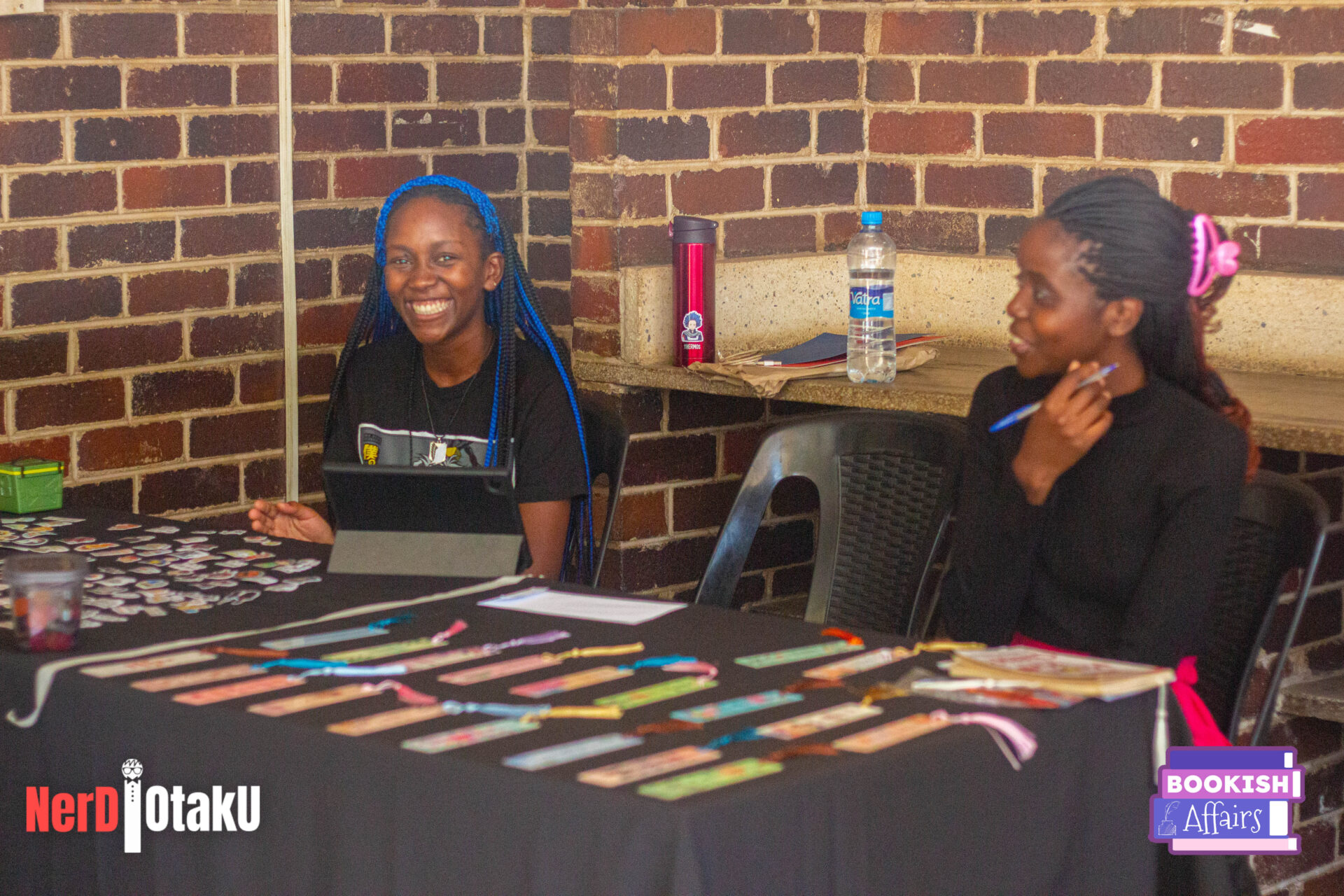
An event specifically for people who love to immerse themselves in the world of books and stories! Just the thought of it filled me with joy. Of course, I had heard of similar events for people with different niche interests and fandoms, but nothing for readers, organised by readers. The excitement I felt in the days leading up to the event was overwhelming. Just knowing that it would be filled with activities I’d love, doubled my anticipation! I wanted to make sure everything was perfect on my end, which meant promoting it on my own platforms to spread the word, picking out which books I was going to take to trade and discuss, and most importantly, choosing an outfit.
The first thing that caught my attention was the ‘Trope Ranking Board’, which is essentially exactly what it sounds like; a section where a bunch of the attendees were gathered around a ranking board discussing and arguing which romance book trope is superior, and which is “absolute trash that should never be made into print” (not my words I swear).
On Saturday, 19th October, I finally had the pleasure of attending the Bookish Affairs convention. The event was a vibrant celebration of literature, offering a diverse range of activities that catered to all aspects of book appreciation. All I can say is that upon arrival, I felt a sense of familiarity and belonging, not only because of the few people I knew there, but also because of the knowledge of being surrounded by all those kind, creative, and imaginative people who were all there to share the same interests as me.

The first thing that caught my attention was the ‘Trope Ranking Board’, which is essentially exactly what it sounds like; a section where a bunch of the attendees gathered around a ranking board discussing and arguing which romance book trope is superior, and which is “absolute trash that should never be made into print” (not my words I swear). It was so fascinating to see that there were generally some unanimously loved tropes like “enemies-to-lovers” and unanimously hated ones like “incest” which I have to say is very valid. There were also lots of constructive discussions and disagreements between people about various other tropes and book titles. For instance, although not everyone agreed, the Twilight series and the works of author Colleen Hoover were overwhelmingly condemned, much to the disappointment of the readers who enjoy those titles.
Next, I made a stop at the Book Swap table, where attendees brought gently used books to exchange with others. There was lots of excitement as people rummaged through the stacks, discovering new titles and authors. I had many discussions with people about the books they had brought to swap and even had to negotiate my way into getting someone to swap their book for mine instead of someone else. It worked because I traded in my copy of The Fault in Our Stars by John Green for The Cruel Prince by Holly Black, which is a book I’ve heard great reviews about and have been wanting to get my hands on for a while.
After walking around for a bit and spending way too much money on bookmarks, posters and stickers, I made my way to the friendship bracelet making station (of course I had to, it’s the Swiftie in me). There I met even more book enthusiasts who shared my passion for literature and pop culture. As we threaded beads and exchanged stories, our conversations flowed effortlessly. At first it shocked me that when I brought up an opinion on a book or an author, I’d be met with agreement from everyone at the table. It soon dawned on me that we were just somehow all in sync! However, even on the topics where we had differences, everyone was just so genuinely kind and willing to listen to one another leading to more open-minded discussions.
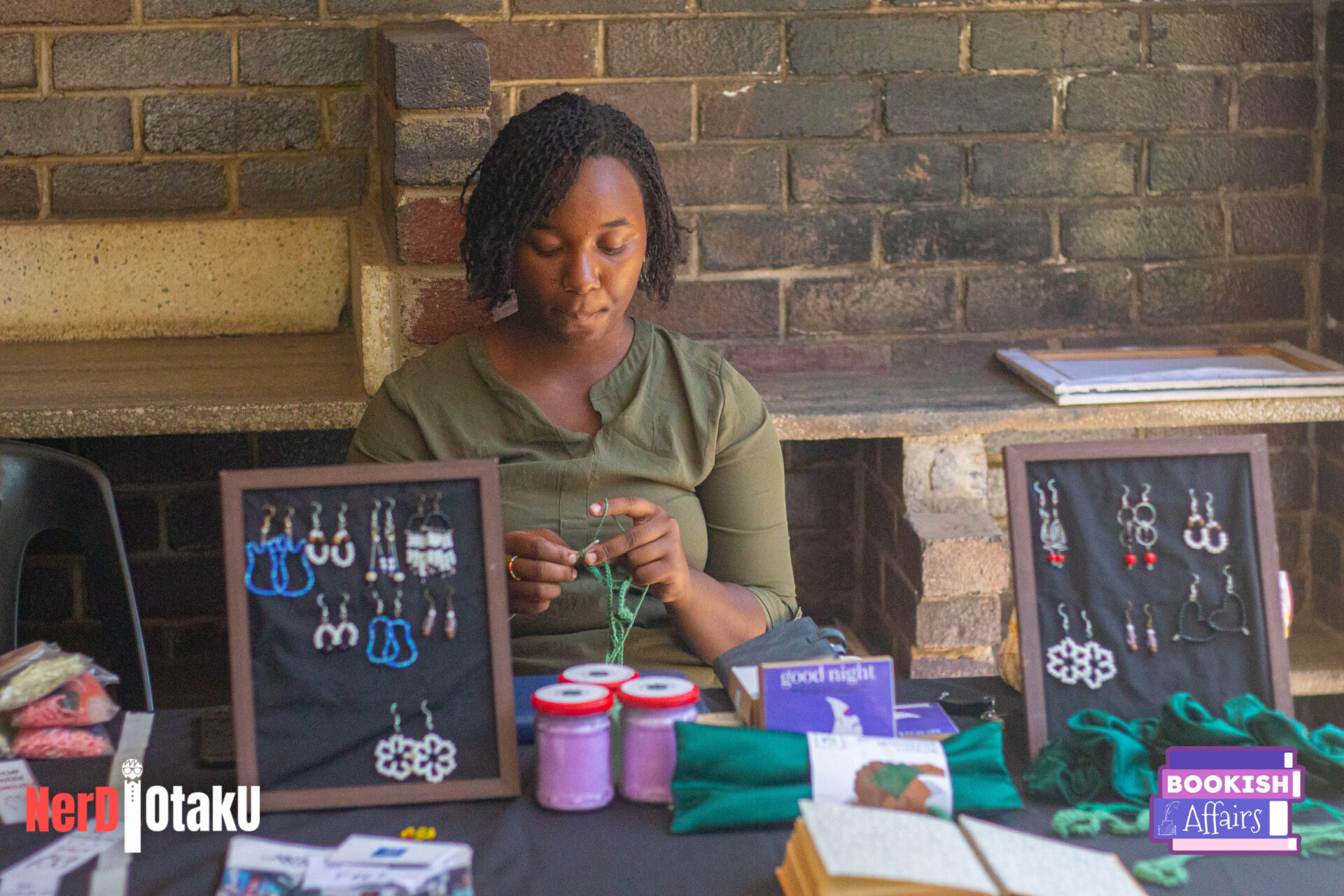
You know those TikToks that have “What Was I Made For?” by Billie Eilish in the background while words on the screen describe what girlhood is? This was that moment for me. And even though my already long “To Be Read” list is suffering, I’m so grateful for those conversations I had and the connections I forged in that moment, no matter how temporary. The colourful bracelets on my wrist now serve as tangible reminders of them.
The poetry open mic session was such a wonderful part of the day’s events. Hearing all those brave voices who took to the stage to share their original work, and seeing it resonate deeply with the audience was such a heart-warming experience. I couldn’t help but feel proud of these people – who were really only strangers to me – because I of course, have neither the talent to write my own poetry, nor the courage to get on a stage and recite it. I hope these poets know that they helped create a safe space for self-expression, and echoing the convention’s core spirit; celebration of the written word.
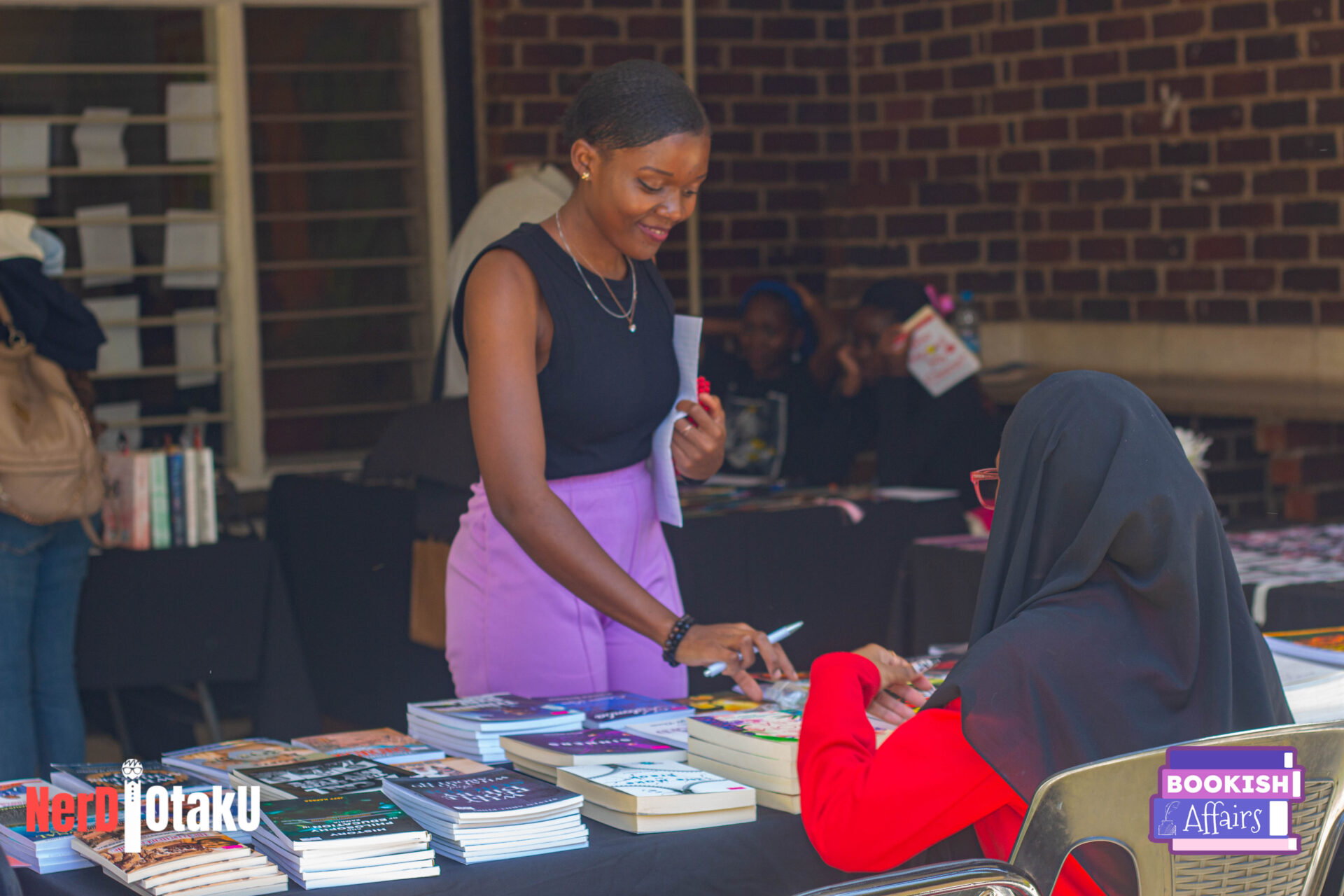
I left the book convention with my heart filled with gratitude, my bookshelf expanded with new titles, and my pockets a little lighter. The event reminded me that while reading is a wonderful solitary activity, there’s so much added joy that comes with sharing the experience, and forging lasting connections with fellow book enthusiasts. I’m keeping my fingers crossed for a convention next year, eager to reunite with the lovely people I met, and create more unforgettable memories.
Read More Of Our Stuff
The Rise and Fall of Gameloft
The story of Gameloft, once a titan in the mobile gaming industry, is a fascinating reflection of the broader rise and fall—and subsequent resurgence—of mobile gaming as a whole.
2025, The Year The Average Gamer Upgrades
With Nvidia entering their 4th generation of ray tracing cards, and gamedev companies shoving excessively demanding requirements down our throats, is it time to finally get with the program and conform?
Ten Years of The Video Game Awards
The medium of film or motion pictures has existed for just over 100 years now. 50 years in, they had already established a canon, and a set of values or expectations that creators and the audience had become accustomed to. A substantial contributing factor to the established canon of film was the implementation of the Academy of Motion Picture Arts and Sciences Awards, also known as the Oscars.
Esports in Education: Farmcraft 2024 Zambia 2 Nov 2024, 2:34 pm
ESPORTS IN EDUCATION: FARMCRAFT 2024 ZAMBIA
The initial thought an individual would have when the word ‘sport’ is uttered is, kicking footballs or running fast to build an athletic physical body for endurance and play performance. Recently, but not quite, Zambia was introduced to a different sport; electronic sports. This form of competition uses video games as a platform to compete, and showcase certain acquired skills, primarily cognitive skills. It is often organized in a multiplayer setup, played as a team or an individual at a local, national, or intercontinental scale. Recognizing esports as a competitive sport has brought in many investments in different sectors. Rarely, though, does esports get mentioned in the same breath as education.
“ ‘What are you learning from these things?’ ‘Do these games even benefit you?’ “
Growing up in a Zambian household, whenever I would spend a substantial amount of time playing video games, my parents would loudly ask me, “What are you learning from these things?” “Do these games even benefit you?”. They would say this while pointing at my console. Stubborn as ever, I am here to answer some of those questions and explain how esports can be used as an educational tool.
The variety of ways in which esports can be utilized is limitless. Students can be transported from their school desks to an underground mine using technological advancements such as virtual reality. This provides a space and environment for real-life simulations of a particular place. This makes it very safe to experience and learn dangerous experiments; all this can be taught in a classroom.

Besides complex, high-tech equipment and machines that are usually too exposed to acquire, video games can be played even on personal computers, tablets, and mobile phones. This makes them highly accessible and attainable, even to students. With the simple use of a keyboard and mouse, learning can be as easy as clicking.

There are numerous benefits that schools provide. Amongst them are, discipline, analytical skills, career preparation, cognitive and communication skills, and the overall, development of children in early childhood. This educational structure and environment help develop their skills, and mindset that would later mature as healthy habits and productive opinions. Esports improves the ability to simultaneously use both eyes and hands, commonly known as hand-to-eye coordination. It helps students to carry out experiments and all sorts of writing more efficiently and effectively.
It is common practice and considered good etiquette to send a “gg” message which means ‘good game’ to opponents, showing respect to other players. Healthy competition is encouraged at any Esport event. By making friends in the gaming community, mental well-being can drastically improve among students. This provides a space where they can share ideas and socialize with one another. Gaming can also be a way to relax and relieve stress.
The overall key for schools to benefit from esports is to offer activities that appeal to as many students as possible. Schools can work with organizations to establish an esports club or team and help bring communities together. On the 29th of June, Nerd|Otaku hosted an esports event called The Meet. One of the objectives of The Meet was to embrace video games for sports and leisure. Activations, which are pre-event campaigns, were hosted targeting young students to educate and spark interest in esports, and also search for small communities within the schools.
One of the schools visited was Kabulonga Girls’ Secondary School. With permission from The District Education Board Secretary and the school, esports stations were placed at the gym without disrupting ongoing lessons. Students went by the stations to learn the important aspects and benefits esports comes with. Such little collaborations can go a long way in terms of creating safe spaces, clubs, and communities in Zambian schools.

Esports in Zambia is a steadily growing industry, although most times it might feel stagnant. But with in-depth research and minor history, you’ll see teams like Team Gematrix compete at a continental esports tournament. The increasing number of local esports tournaments hosted in the country helps put esports on the radar of big corporations, organizations, and companies who are slowly recognizing it as a sport.
Esports is inclusive to anyone regardless of gender, age, and physical strength.

Farmcraft
What is Farmcraft?
“Farmcraft 2024 by the Network of Academic and Scholastic Esports Federation, the US Department of State, and American Spaces is an educational program that uses Minecraft to enhance the understanding of the challenges faced by agricultural producers and distributors around the world. The program was open to all ages but designed to supplement the learning of students ranging from 8-18 years of age.
Farmcraft focused on food trade, food security, and alternative methods of agriculture such as vertical or hydroponic farming, plus incorporating digital technology into food systems. Participants also determined who they would sell it to and how they could get their crops to market. The agenda was to enhance the understanding of challenges faced by agricultural producers and distributors on a global scale. To educate young children and build interest in agriculture through gaming.”
To provide a safe space to assist students to learn, grow, and thrive. American Spaces in conjunction with Bongohive, Nerd|Otaku, and Junior Agripreneurship Hub, provided a physical session where students tested, accompanied, competed, worked, and played together. 4 physical sessions were held; 1 in Lusaka at NIPA American Corner, and 3 on Copperbelt at CBU American Corner.
Farmcraft is the perfect game to use as a medium to educate; many would say and I would agree. Not only does it imitate real-life scenarios such as bad weather, but also it can help students develop good habits and require skills to sustain their objectives in the game. These skills are; resource management, planning and patience, and collaboration and teamwork
Resource management: At the start of the game, players are given limited resources like water, soil(land), seeds, and equipment. Natural disasters such as rainfall may occur, which can affect the crops. With each successful harvest, you’re rewarded with cash by selling your produce at the market. This money can be used to build a greenhouse, buy more machinery and equipment, buy more land to expand your farming, or save it for a rainy day. This can teach students how to budget properly, be problem solvers, and build consistency to sustain a great harvest every season.
Planning and patience: To build on consistency, students were required to plan, “What crops are good for the season?” “What machinery will help increase my yield?” “Do I invest in more land, now or later?” All these questions manifested as a monologue in their minds, as they tried to complete their objectives and determine what decisions they could make. This can sharpen their foresight, cultivating patience, decision-making, and adequate planning.
Collaboration and teamwork: During registration, it was required and also encouraged that the students register as a team. They used names that they associated with what they all loved and I assume some picked what sounded ‘cool’. One of my favorite names was “Totally Skies” because I recognized the reference used. Farmcraft provided a lobby where teams would log in and play together; including a tab where they could see the current objectives the team needed to do. This played out well in terms of communication and teamwork. They built their communities where they discussed innovative maneuvers to weed out problems together and see how best to go about strategies and planning, giving them a positive social experience.
Farmcraft also had fun elements that provided the students with customizable skins the game character would wear. They picked outfits suitable for their characters, such as boots and protective gear.

All this showed how they developed and learned about sustainable farming practices like crop rotation, environment-friendly methods of farming that reduce pollution and increase soil fertility, and energy conservation, through eco-friendly habits. There were so many more farming practices that they learned, that I can mention just through the video game.
One of the most annoying things, I experienced whilst playing the game was when pests and butterflies would show up. You had to eradicate them by spending money you had made from your previous harvest to buy pesticides, and yes, there’s a limit to how much pesticide you can put that wouldn’t damage your crops.

The main aim of the physical session was to establish how well esports can fare to school-going pupils and whether or not it would work as a learning curve. This observation taught me more than I could imagine. Finding a way to co-relate the aspect of young students learning while they play video games will change the dynamic of Zambia’s school curriculum. Also, putting into play how technology is advancing, the use of digital farming will allow significant advancements in farming practices driven by the integration and adaptation of digital innovations and technology and make any sort of reach towards students easier.
From simple observation, you would witness how students approached, enjoyed, and learned, during the physical sessions. It boosted morale in situations where teamwork was encouraged with each progress in visual reach of the other. They tried to learn how to increase their yield on the spot. As an observer and coach, I witnessed that in real time.
NASEF presented virtual challenges which participants joined to learn about what choices farmers make even before they plant their crops. 44 teams and 113 players represented Zambia in the global competition which had over 8500 participants. There was representation from Lusaka, Copperbelt, Central, and Southern provinces! The following were some of the results:

Placed 22nd in the All-Ages Division

Placed 60th in the Senior Division

Placed 66th in the Senior Division
Raffle Draw Winners from Zambia were Team CBU and Totally Skies.

Sepo Konayuma, a participant and facilitator at the Copperbelt University in Kitwe, Zambia, had this to say about Farmcraft. “I had the privilege of being part of the NASEF Farmcraft® Competition organized by American Spaces.
Collaborating with teams from The Copperbelt University, I witnessed the enthusiasm and dedication of participants throughout the competition. Despite scheduling conflicts and technical issues like server connectivity problems, the teams displayed remarkable resilience and determination. Through effective teamwork, we overcame obstacles and made significant progress
Participating in Farmcraft was a valuable learning experience for both students and facilitators. We gained insights into the innovative applications of technology in agriculture and realized the importance of collaboration in overcoming challenges. Notably, the use of hydroponic towers was particularly impressive, showcasing the potential of technology to revolutionize traditional farming practices and address global food security concerns.
To enhance the organization of eSports events like Farmcraft in Zambia, it’s crucial to increase awareness and accessibility. Educating students and institutions about the benefits of participation can boost interest and engagement. Additionally, providing support and resources to navigate technical challenges would improve the overall experience for participants
I extend special commendation to the organizers, NASEF and American Spaces, for their dedication and vision in orchestrating the Farmcraft competition. Their commitment to promoting innovation and education in agriculture through eSports events like Farmcraft is commendable and has provided valuable opportunities for students and institutions alike.”
In conclusion, the NASEF Farmcraft® Competition catalyzes innovation and collaboration in the agricultural sector. Despite challenges, the competition sparked creativity and provided invaluable learning experiences. Moving forward, efforts to enhance the organization of similar esports events in Zambia will further foster a culture of innovation and excellence in agriculture.
Read More Of Our Stuff
The Rise and Fall of Gameloft
The story of Gameloft, once a titan in the mobile gaming industry, is a fascinating reflection of the broader rise and fall—and subsequent resurgence—of mobile gaming as a whole.
2025, The Year The Average Gamer Upgrades
With Nvidia entering their 4th generation of ray tracing cards, and gamedev companies shoving excessively demanding requirements down our throats, is it time to finally get with the program and conform?
Ten Years of The Video Game Awards
The medium of film or motion pictures has existed for just over 100 years now. 50 years in, they had already established a canon, and a set of values or expectations that creators and the audience had become accustomed to. A substantial contributing factor to the established canon of film was the implementation of the Academy of Motion Picture Arts and Sciences Awards, also known as the Oscars.
Warning: Undefined variable $id in /home/setstick/public_html/read.php on line 516
Warning: Undefined variable $ttt in /home/setstick/public_html/read.php on line 516
Warning: Undefined variable $linkd in /home/setstick/public_html/read.php on line 516
Fatal error: Uncaught mysqli_sql_exception: Duplicate entry '/read.php?feed=https%3A%2F%2Fwww.nerdotaku.org%2Ffeed%2F' for key 'vin' in /home/setstick/public_html/read.php:518 Stack trace: #0 /home/setstick/public_html/read.php(518): mysqli->query() #1 {main} thrown in /home/setstick/public_html/read.php on line 518
